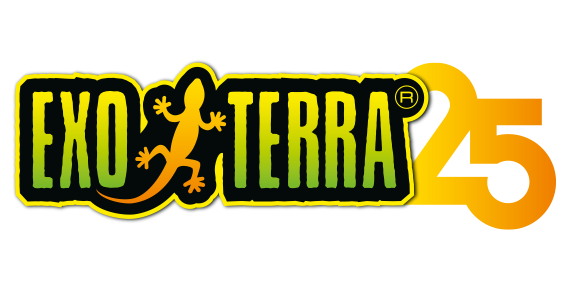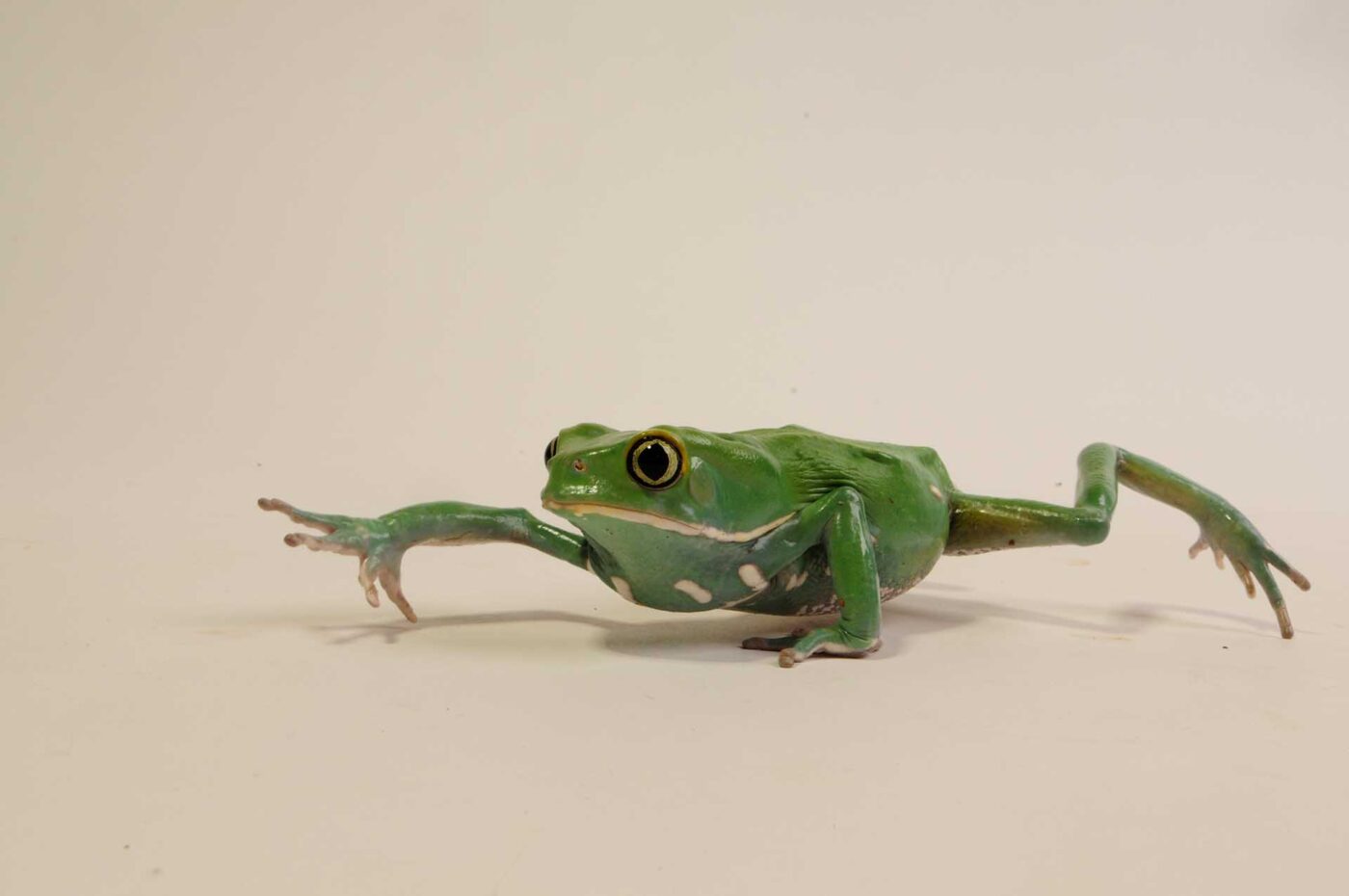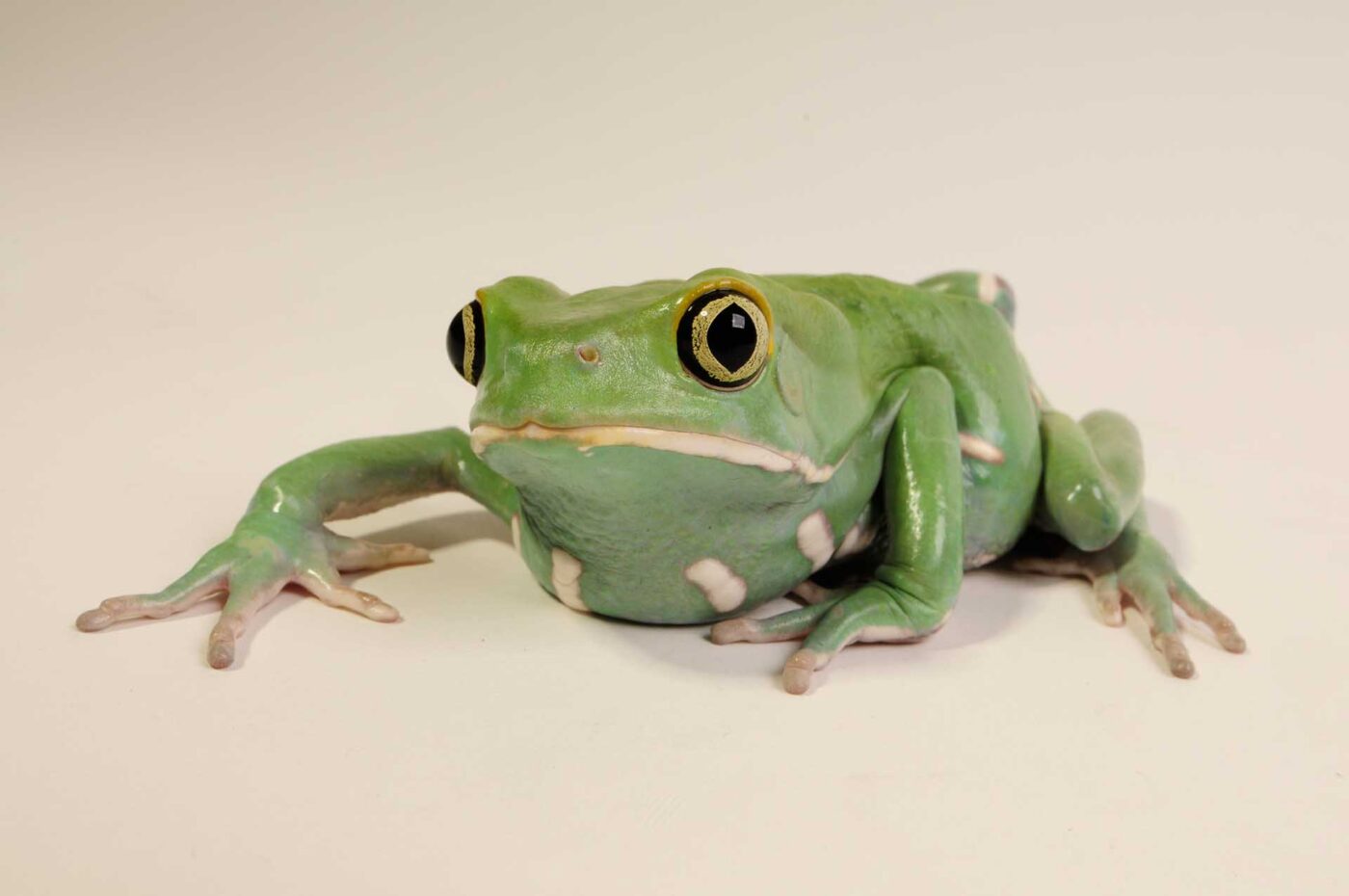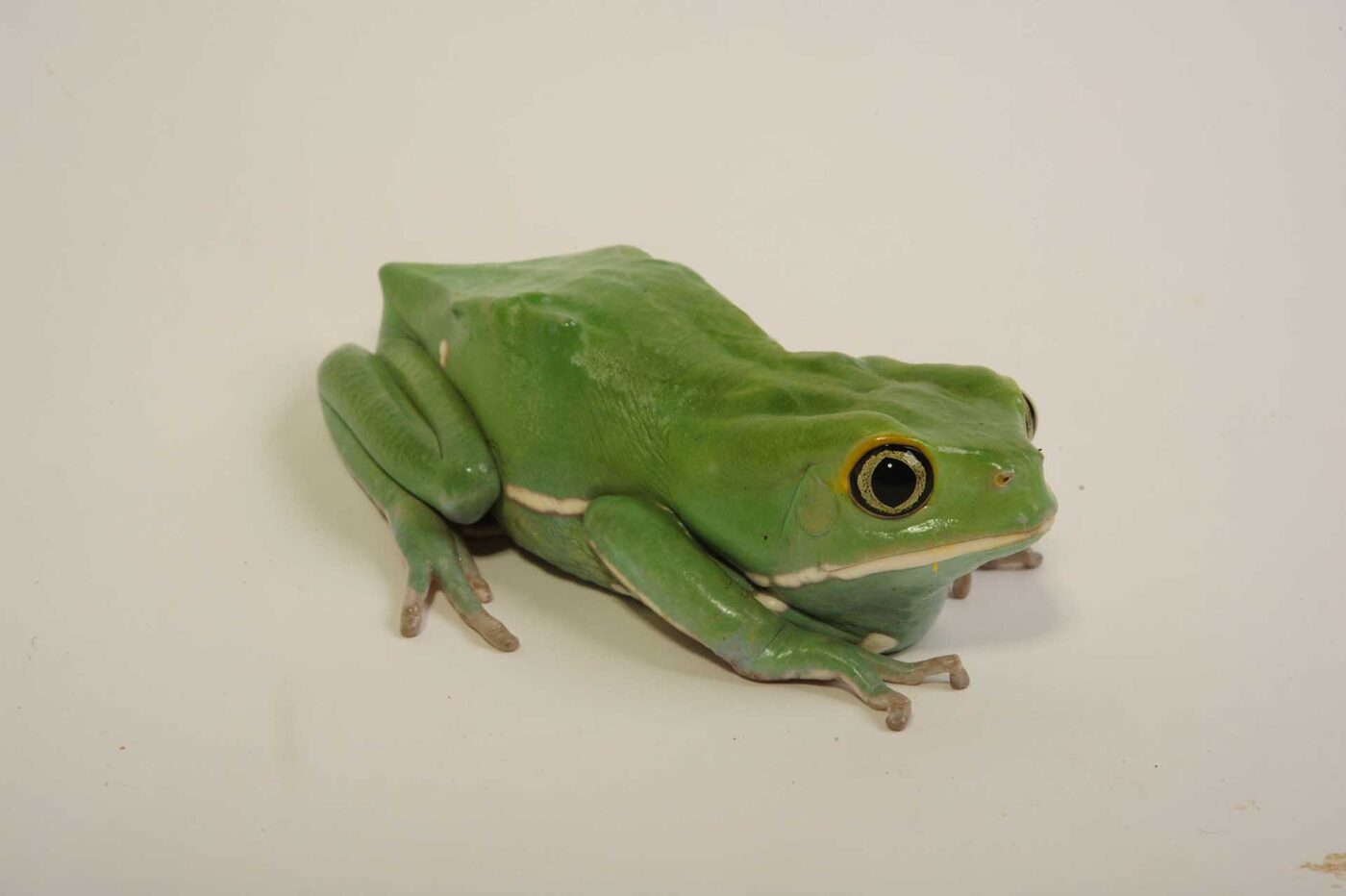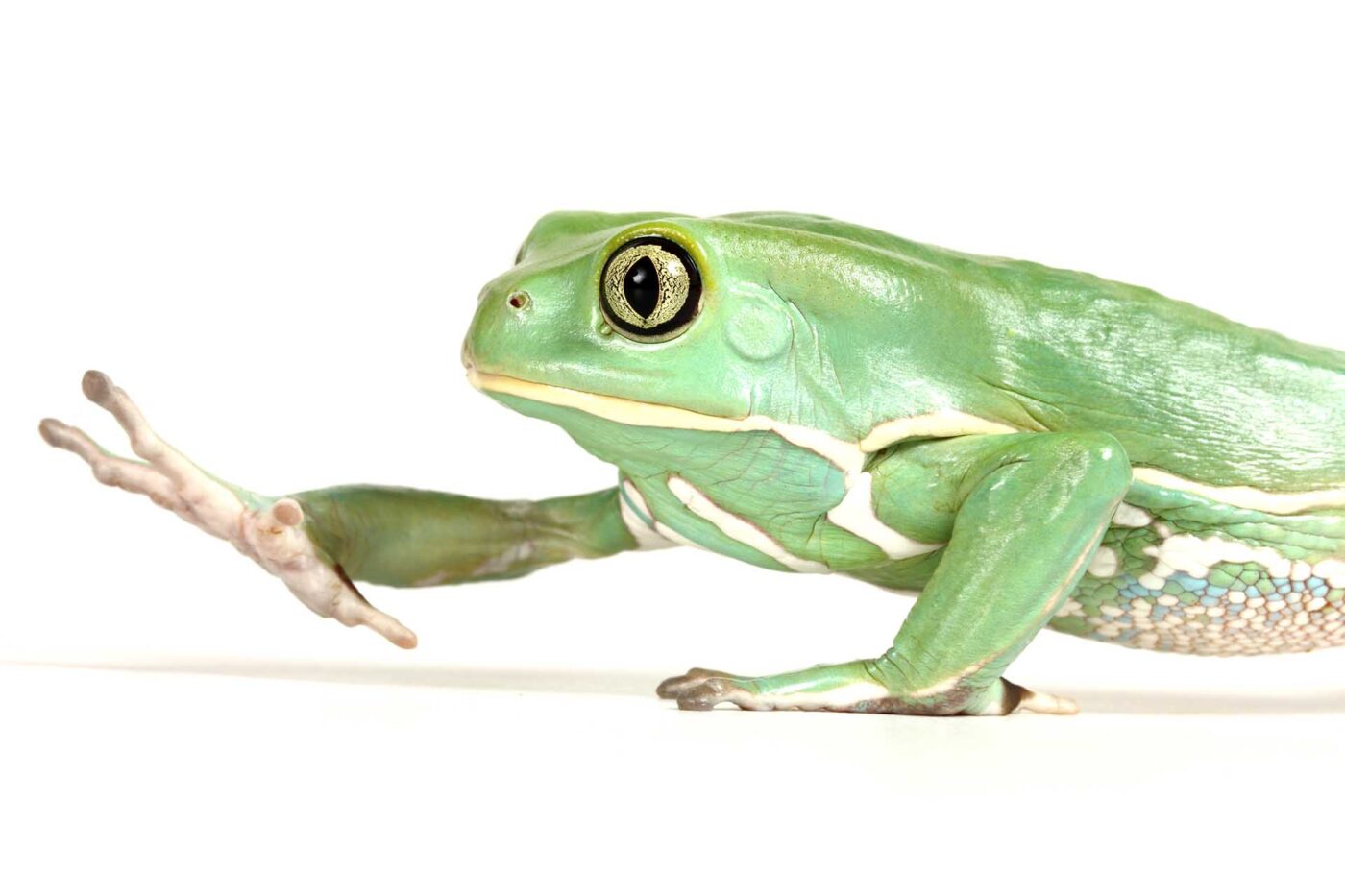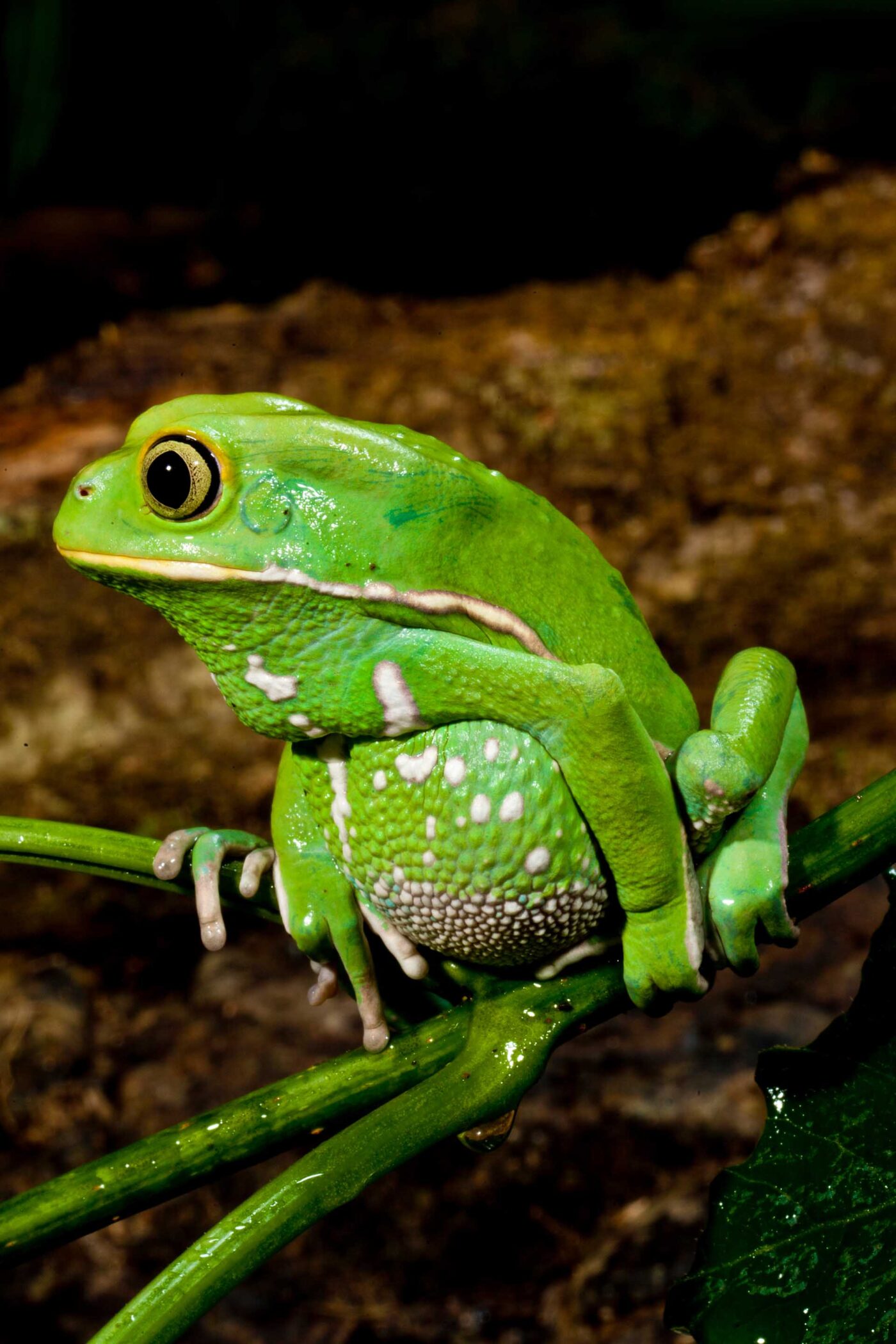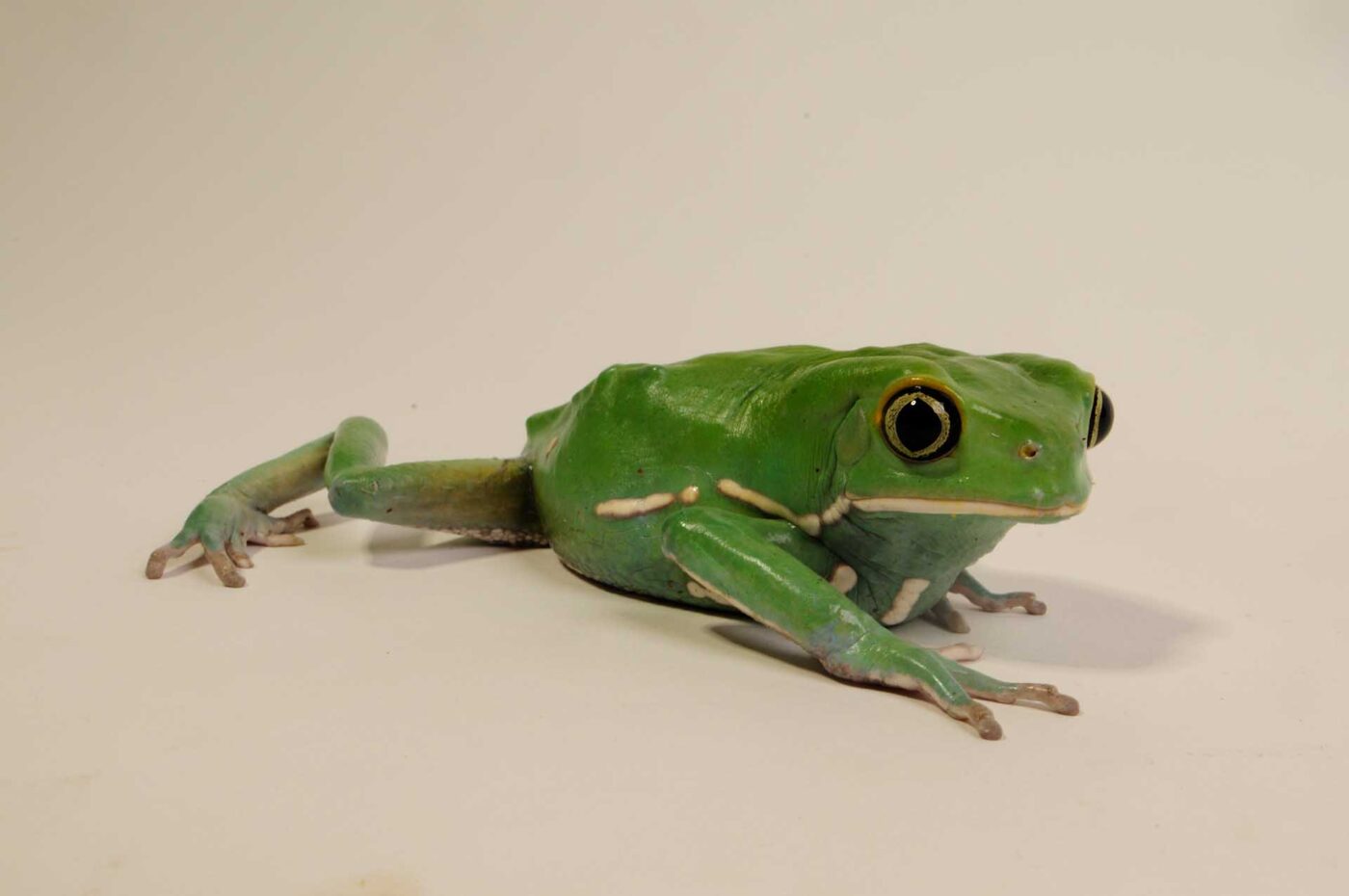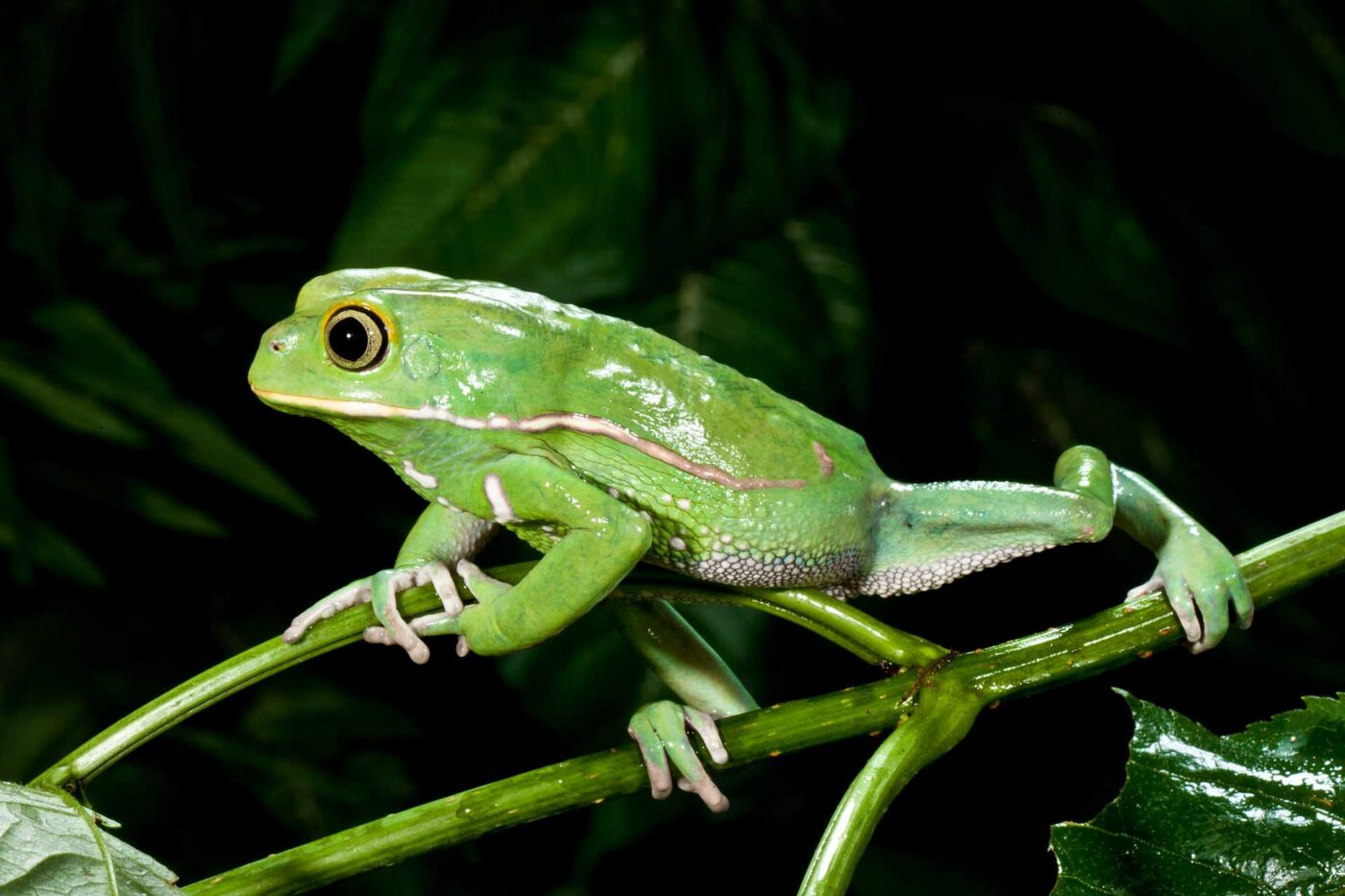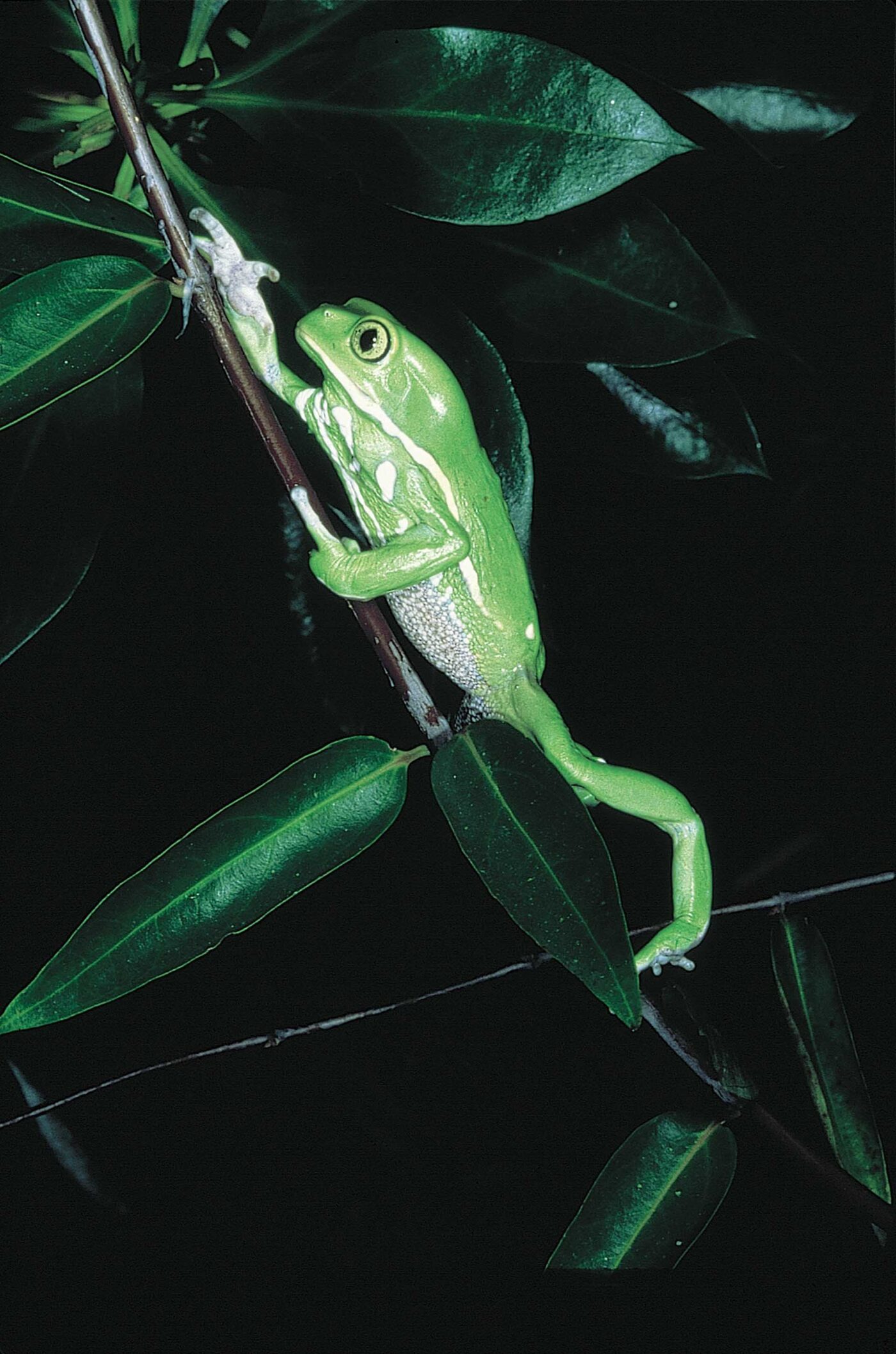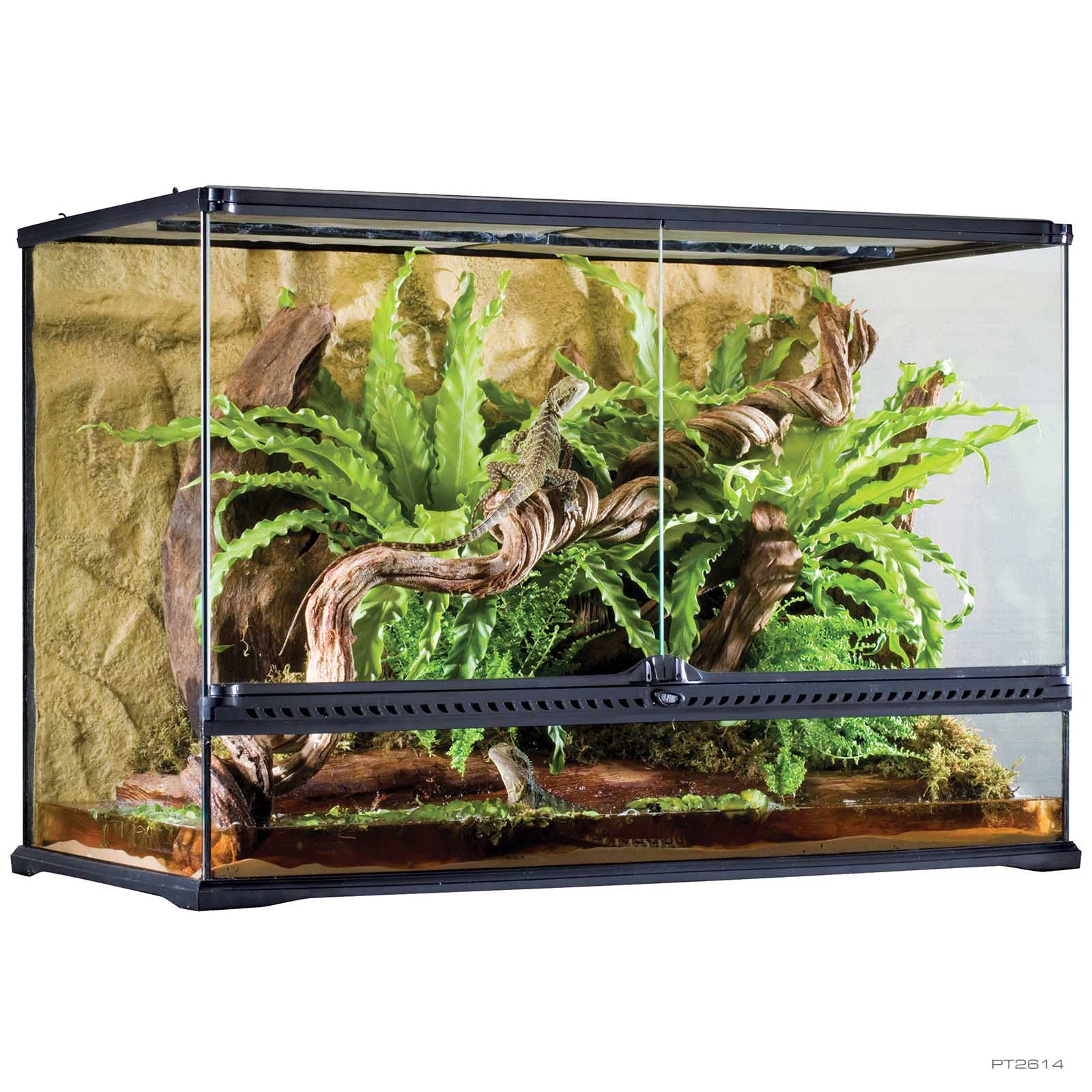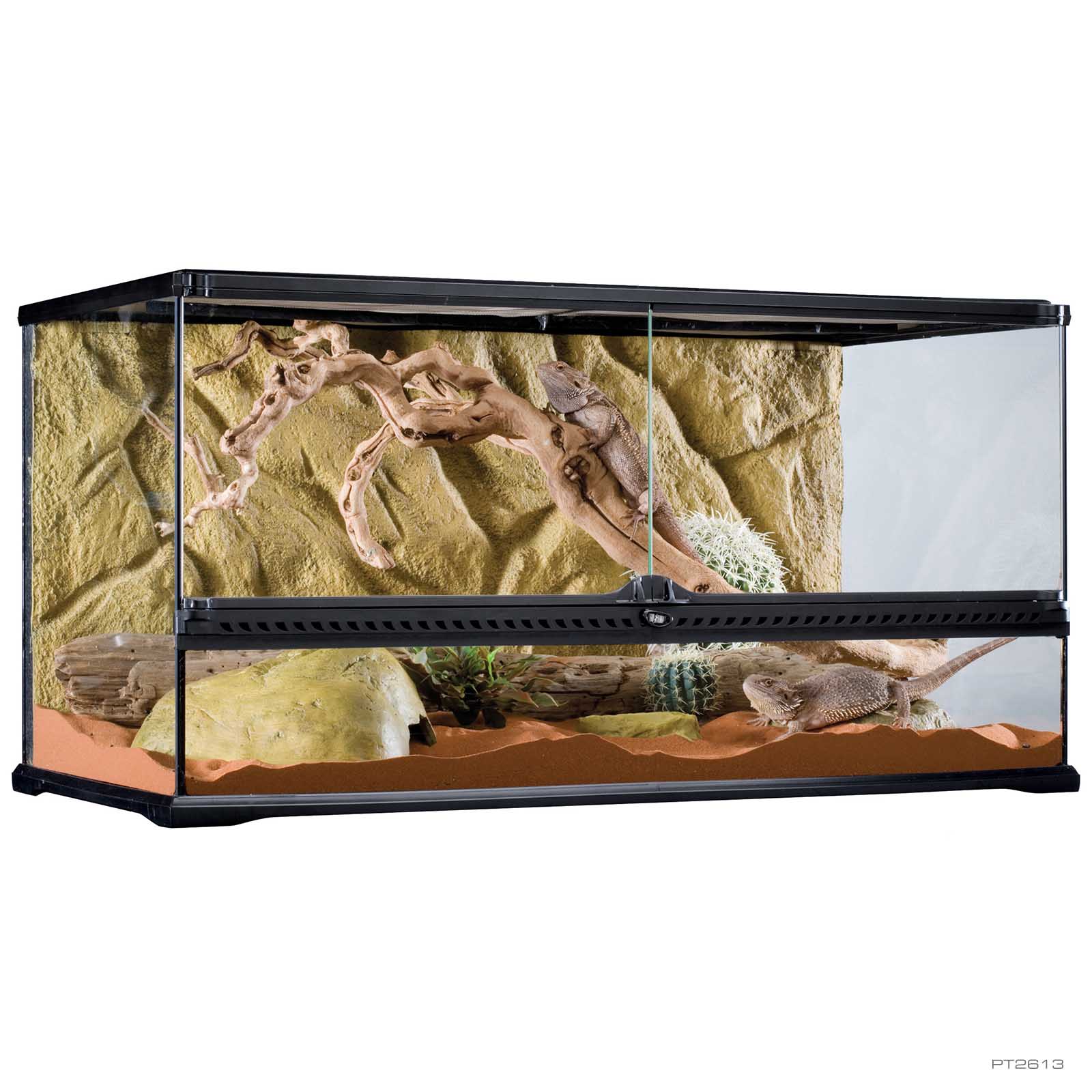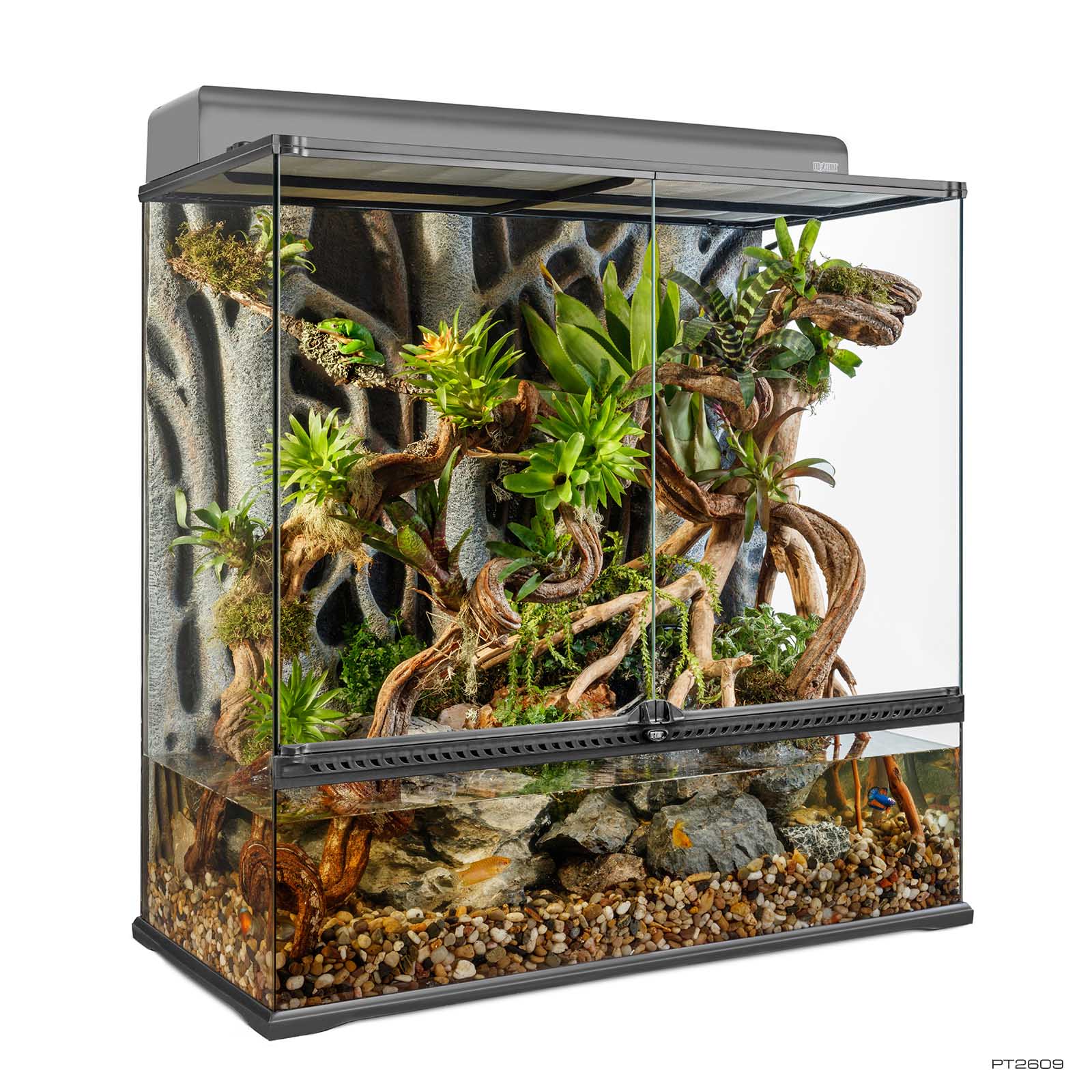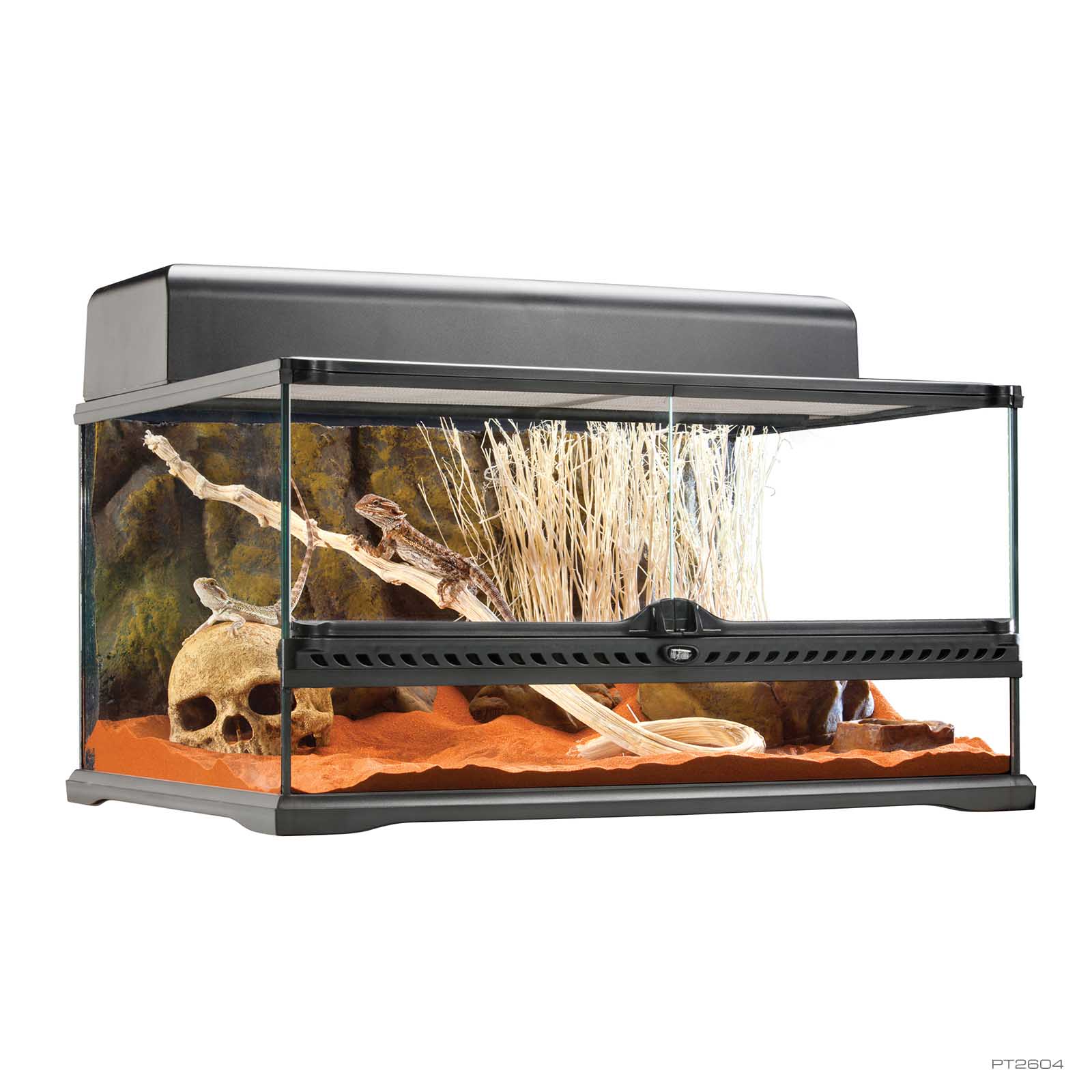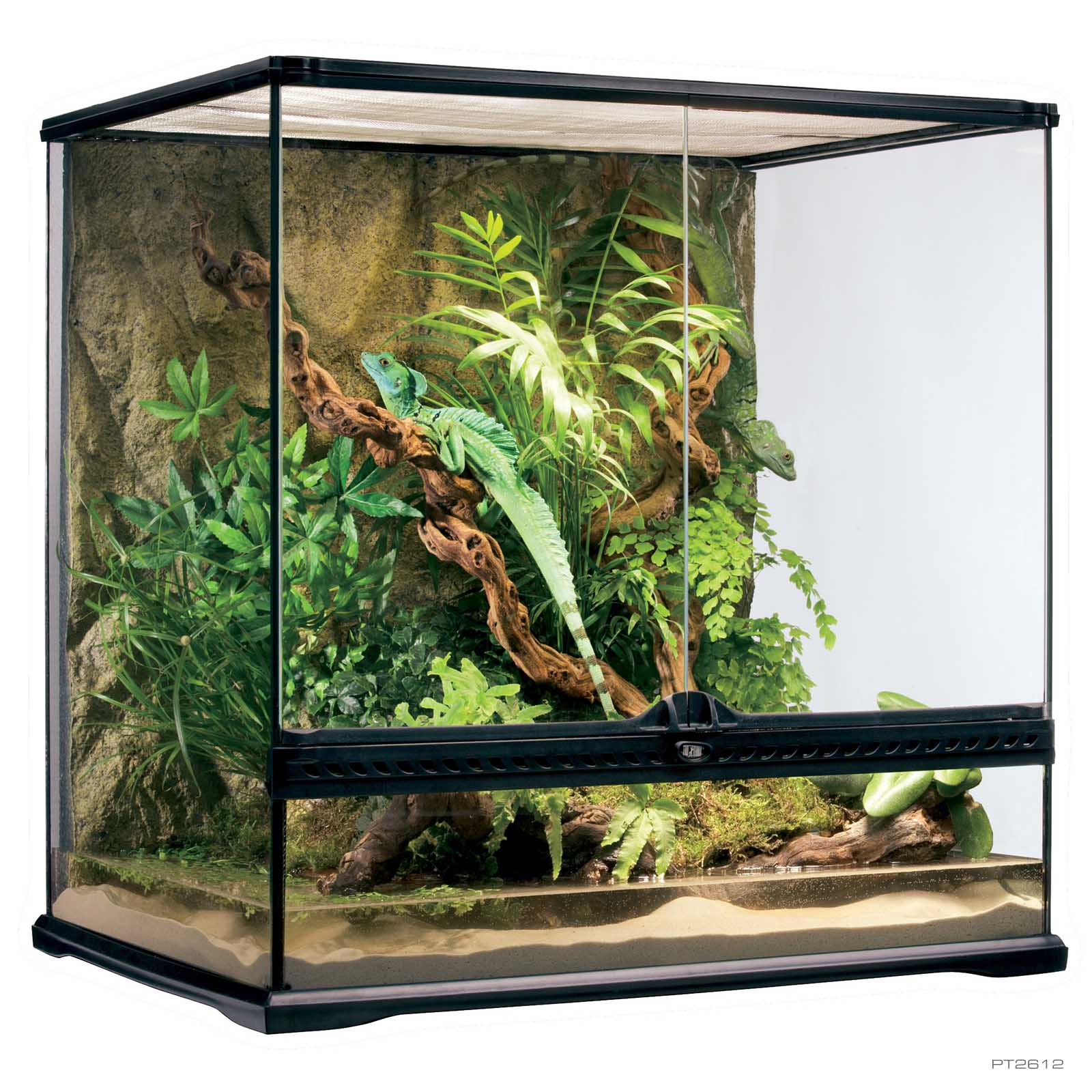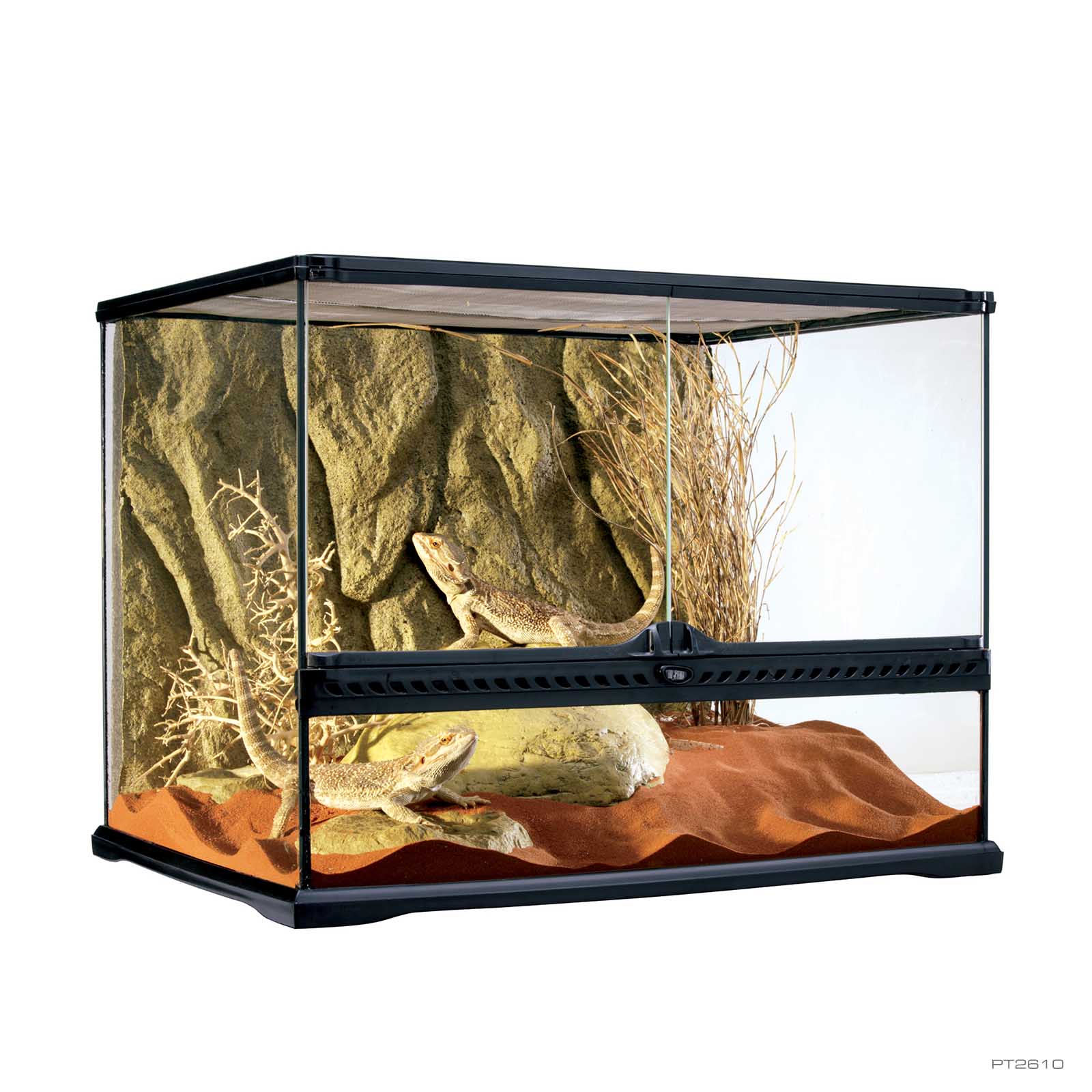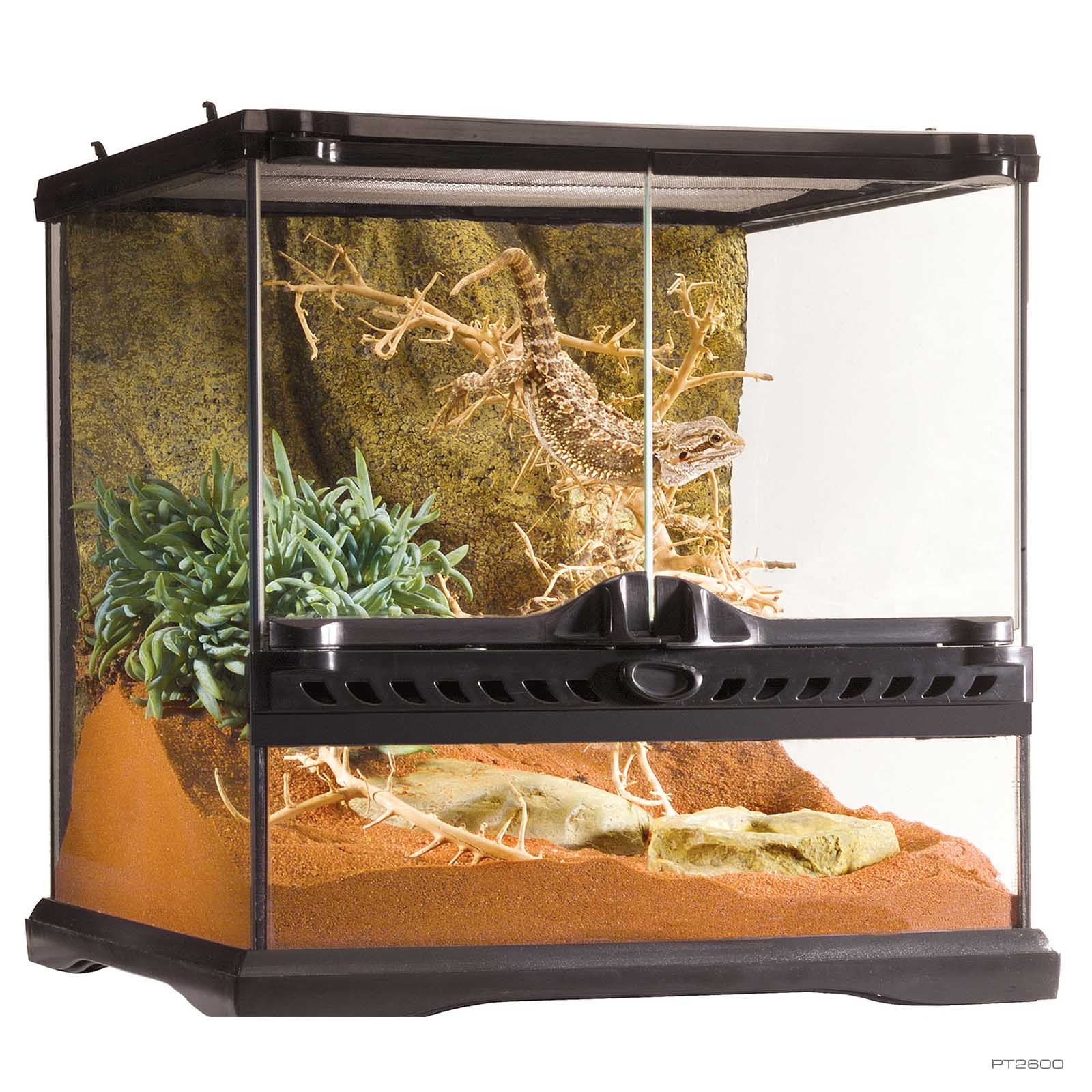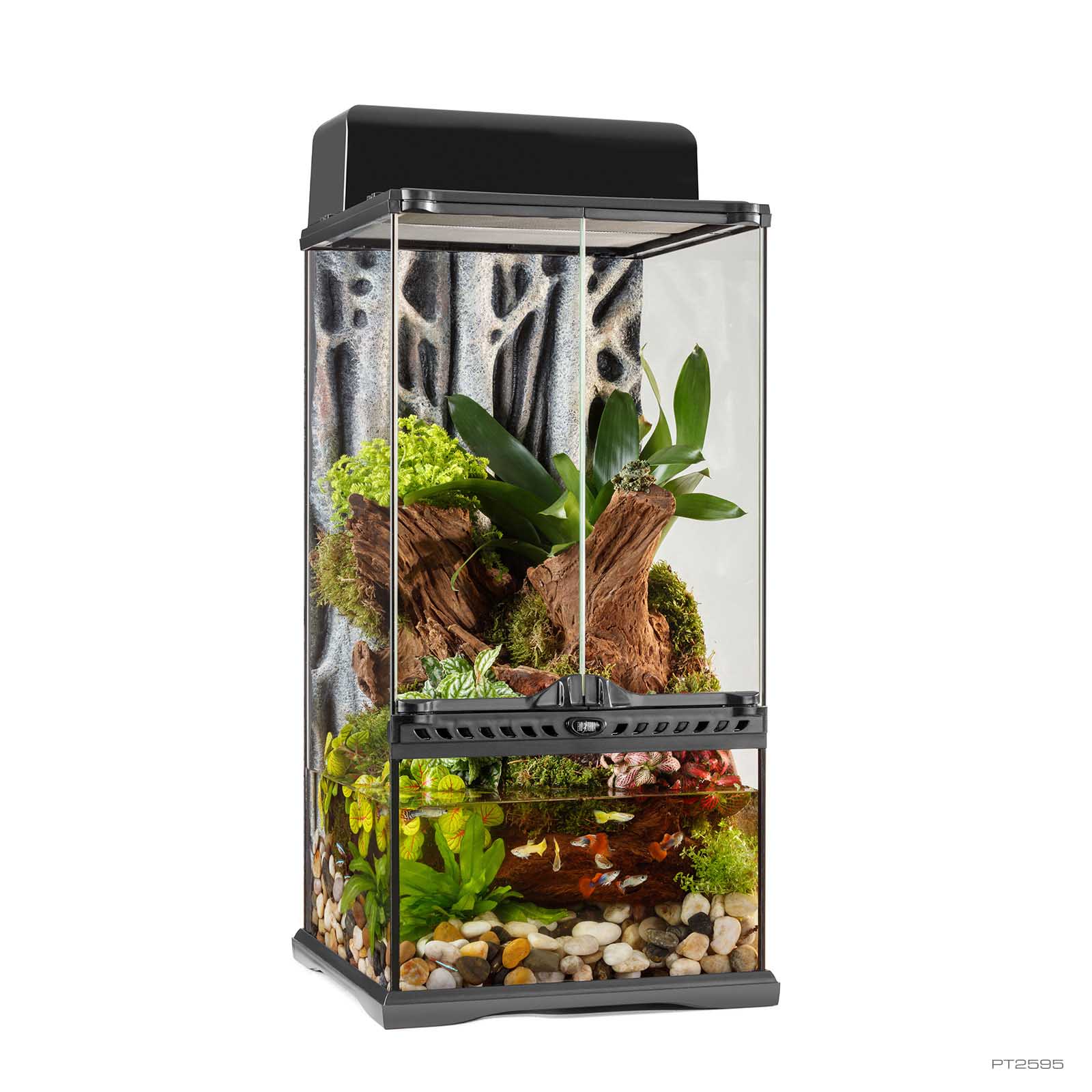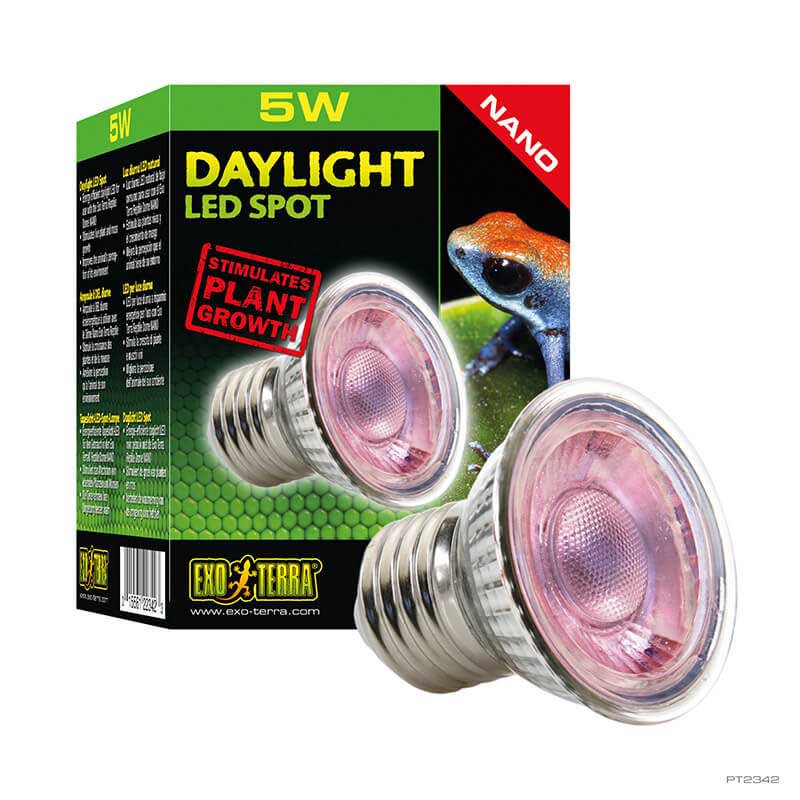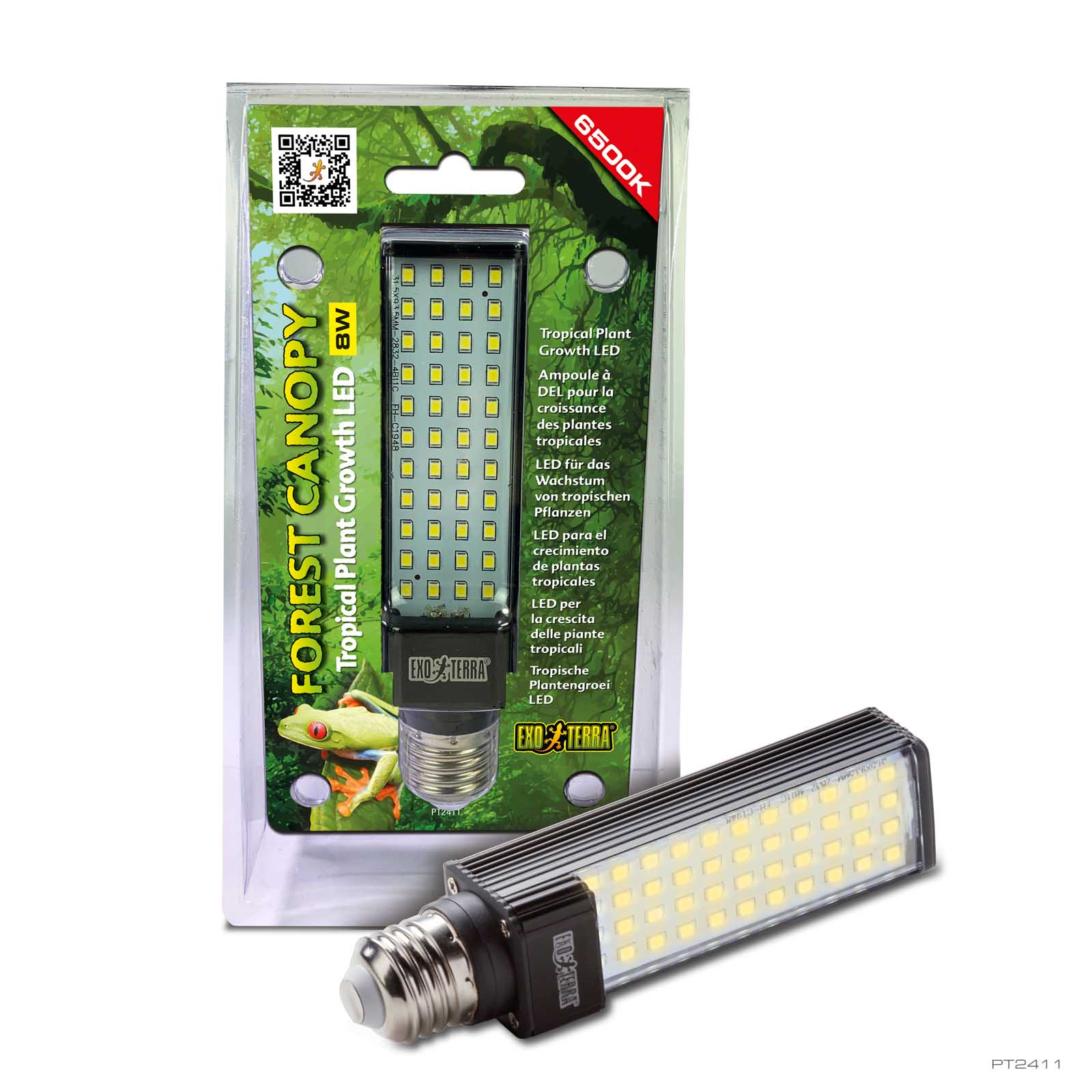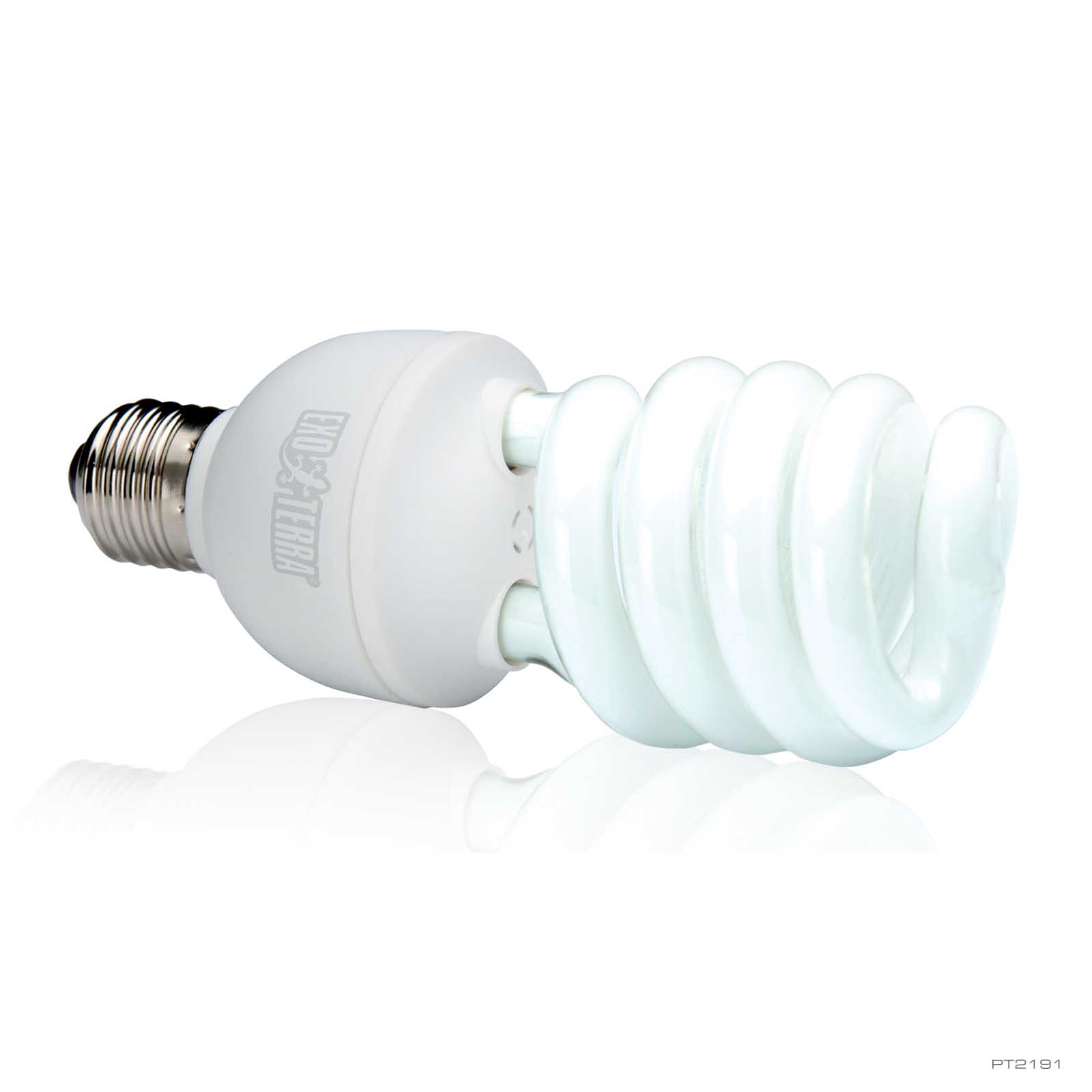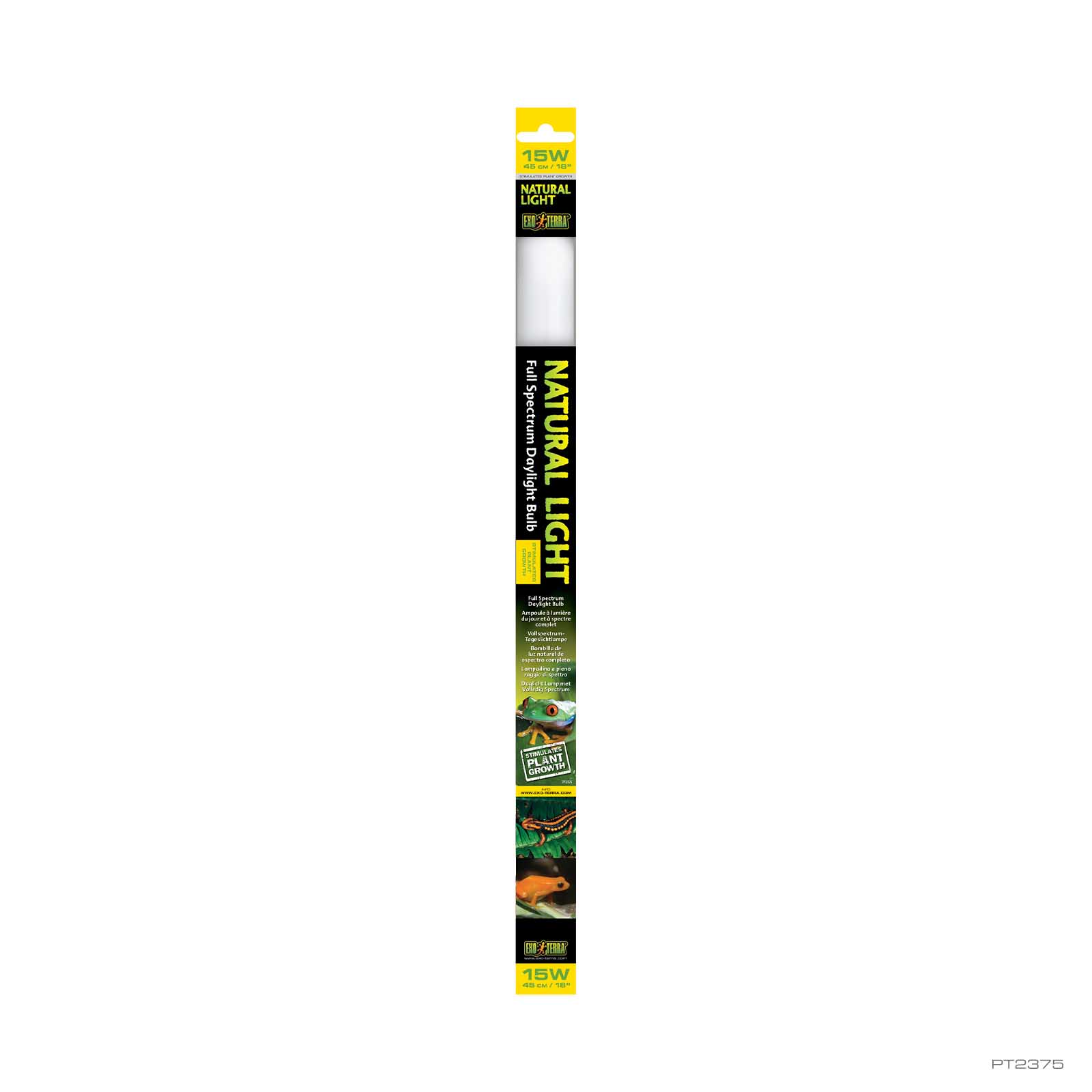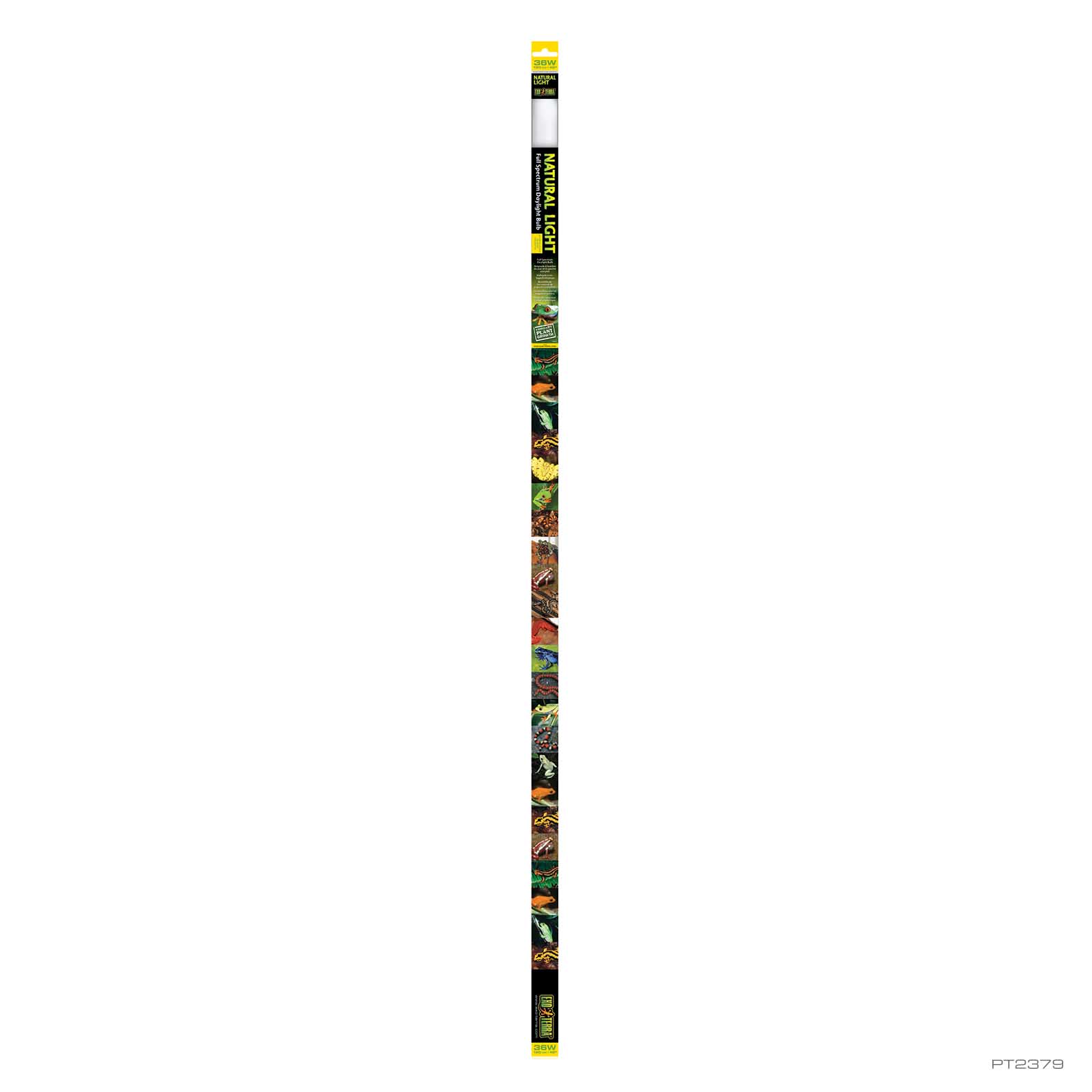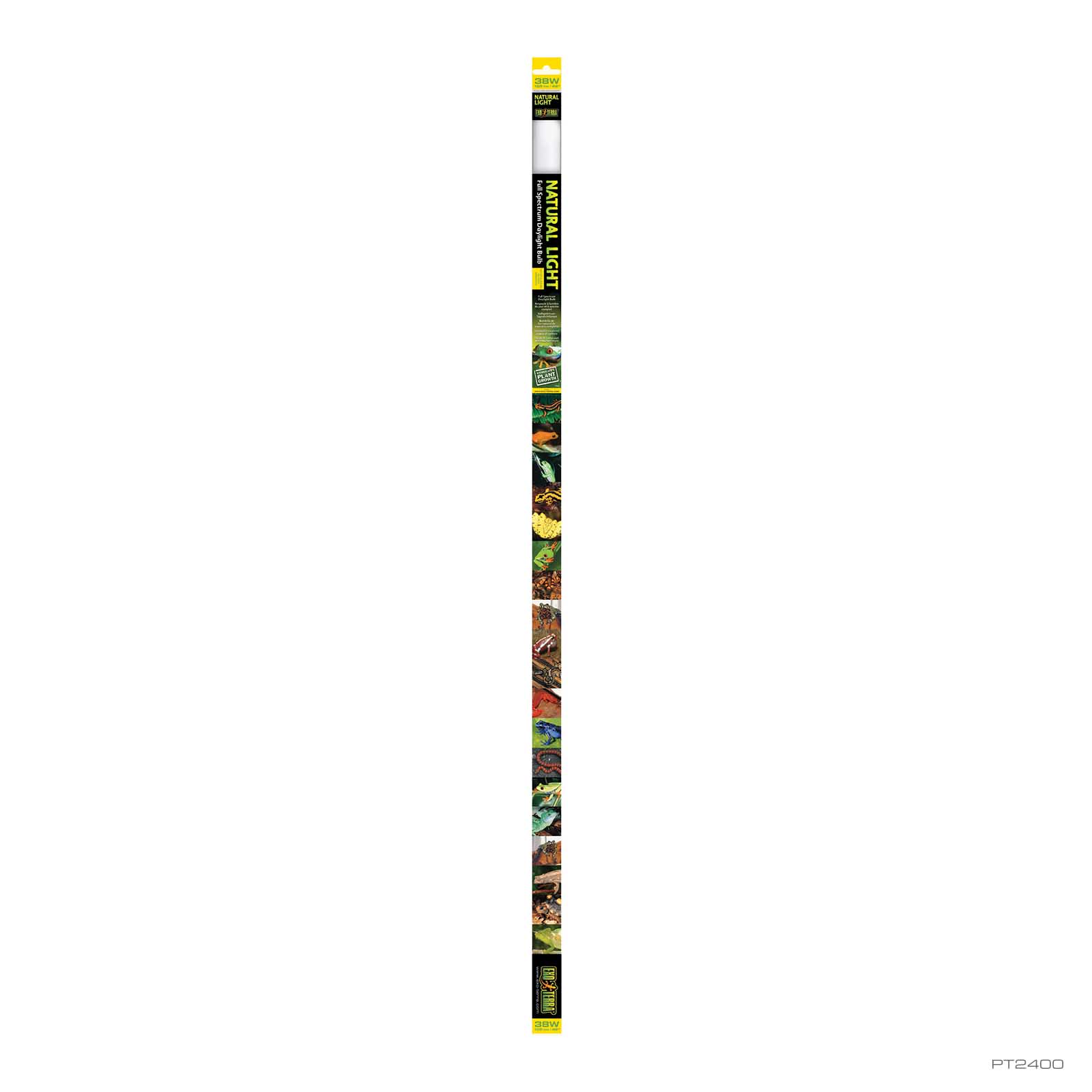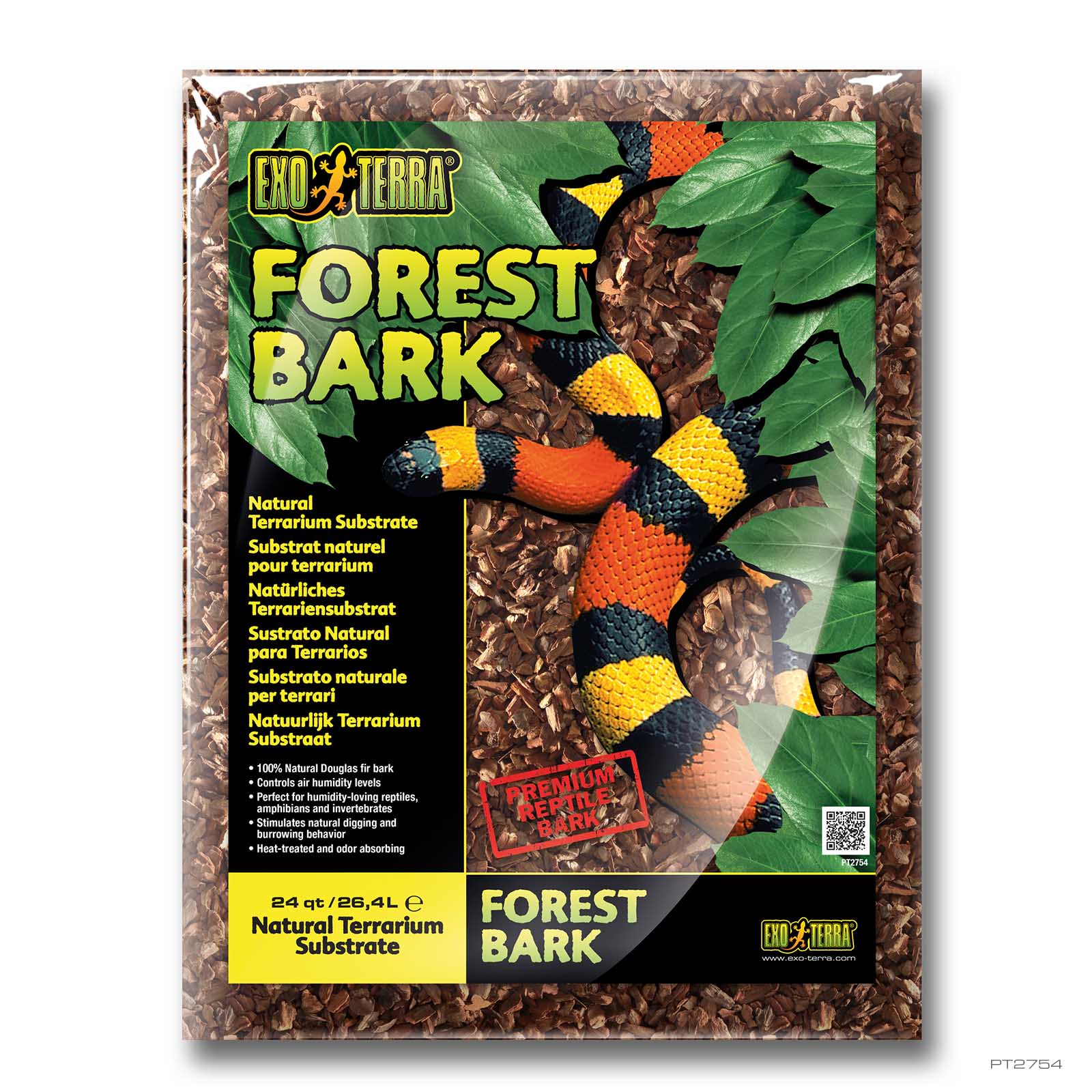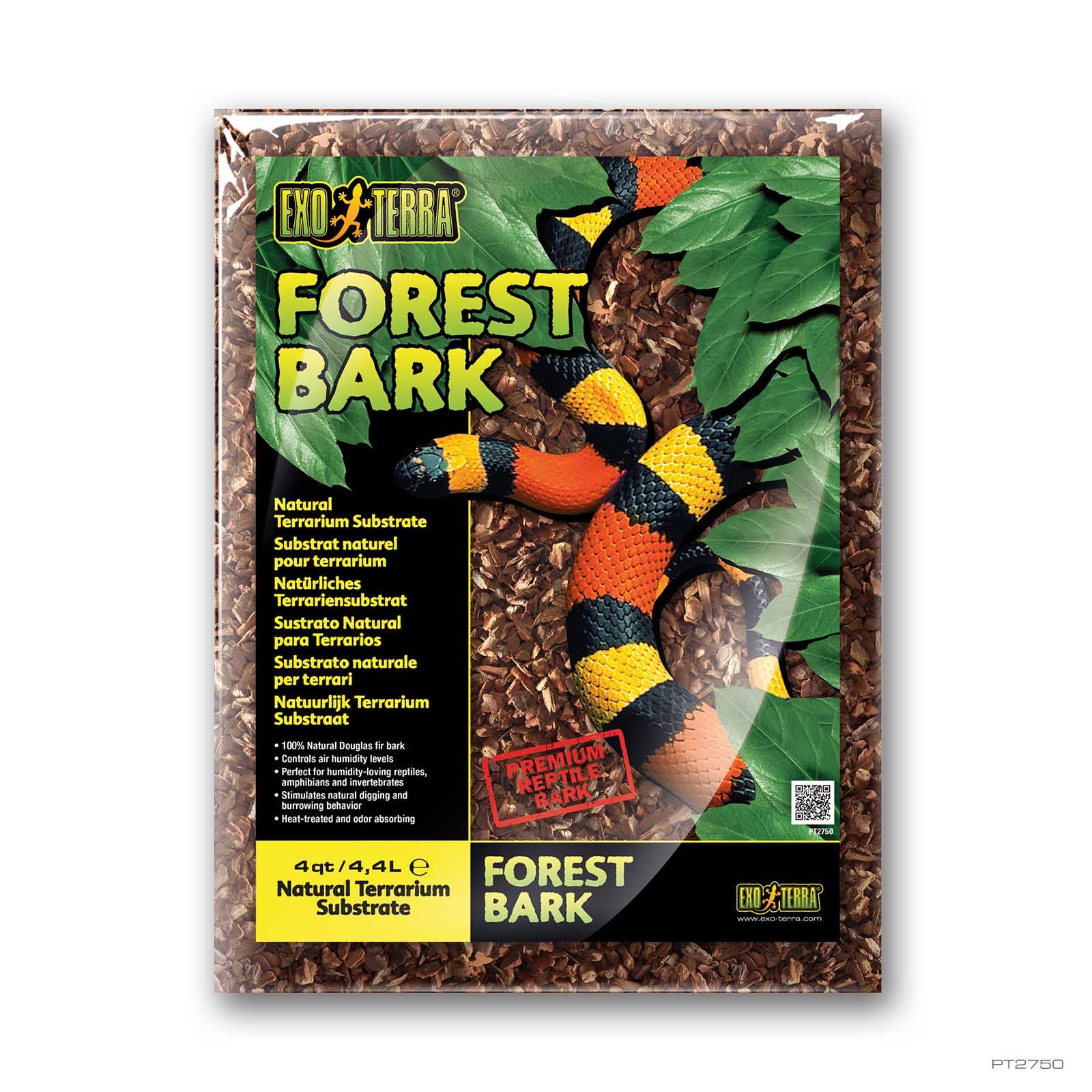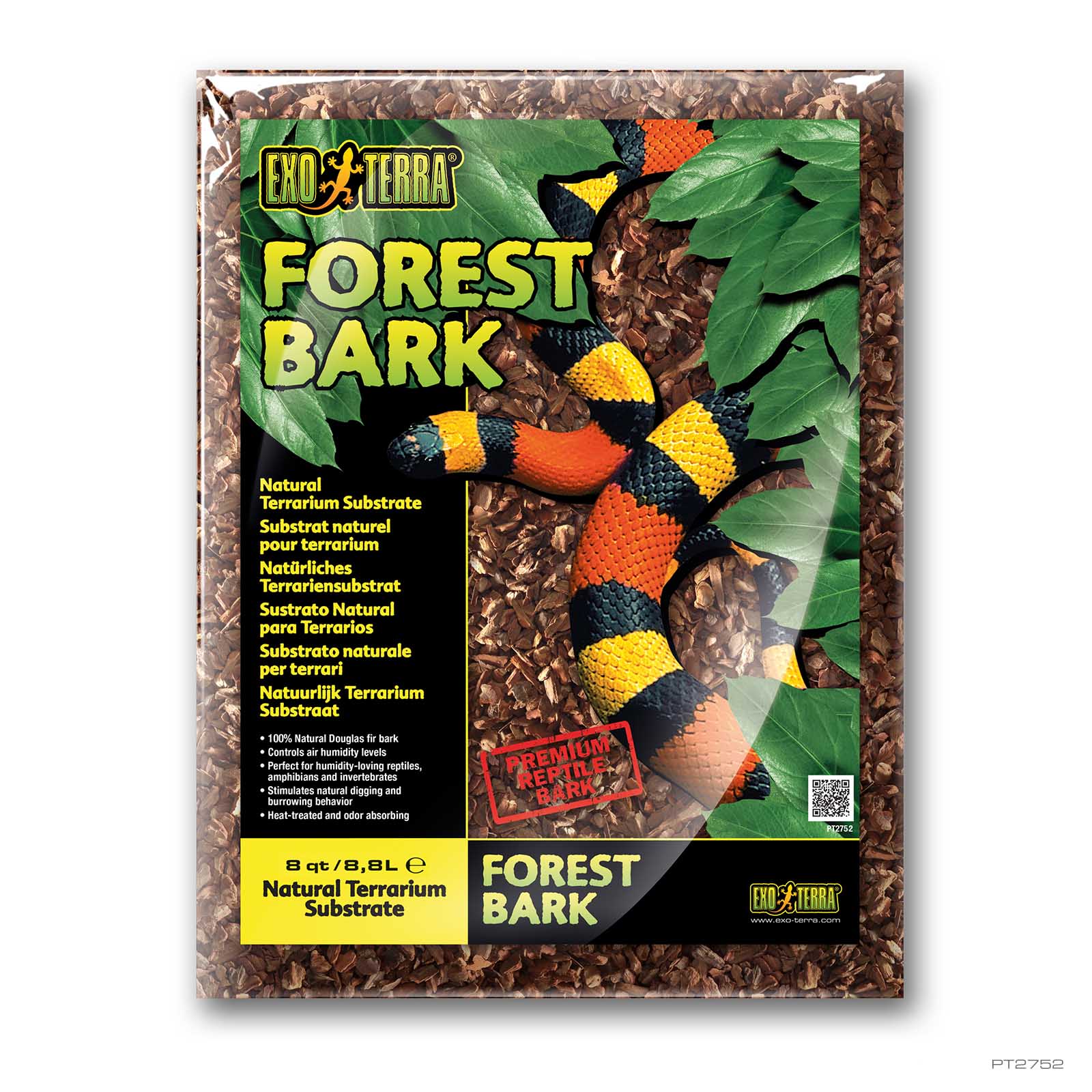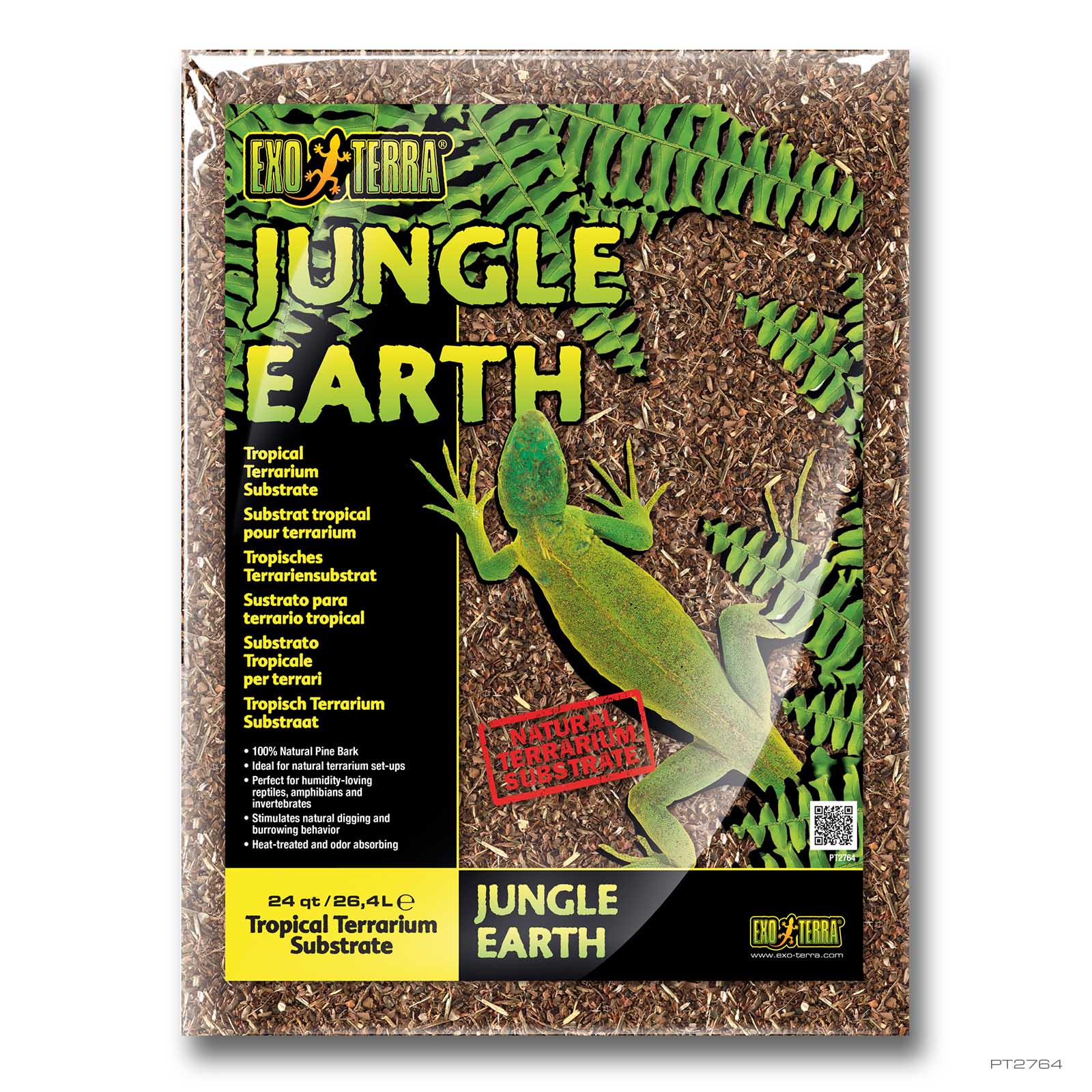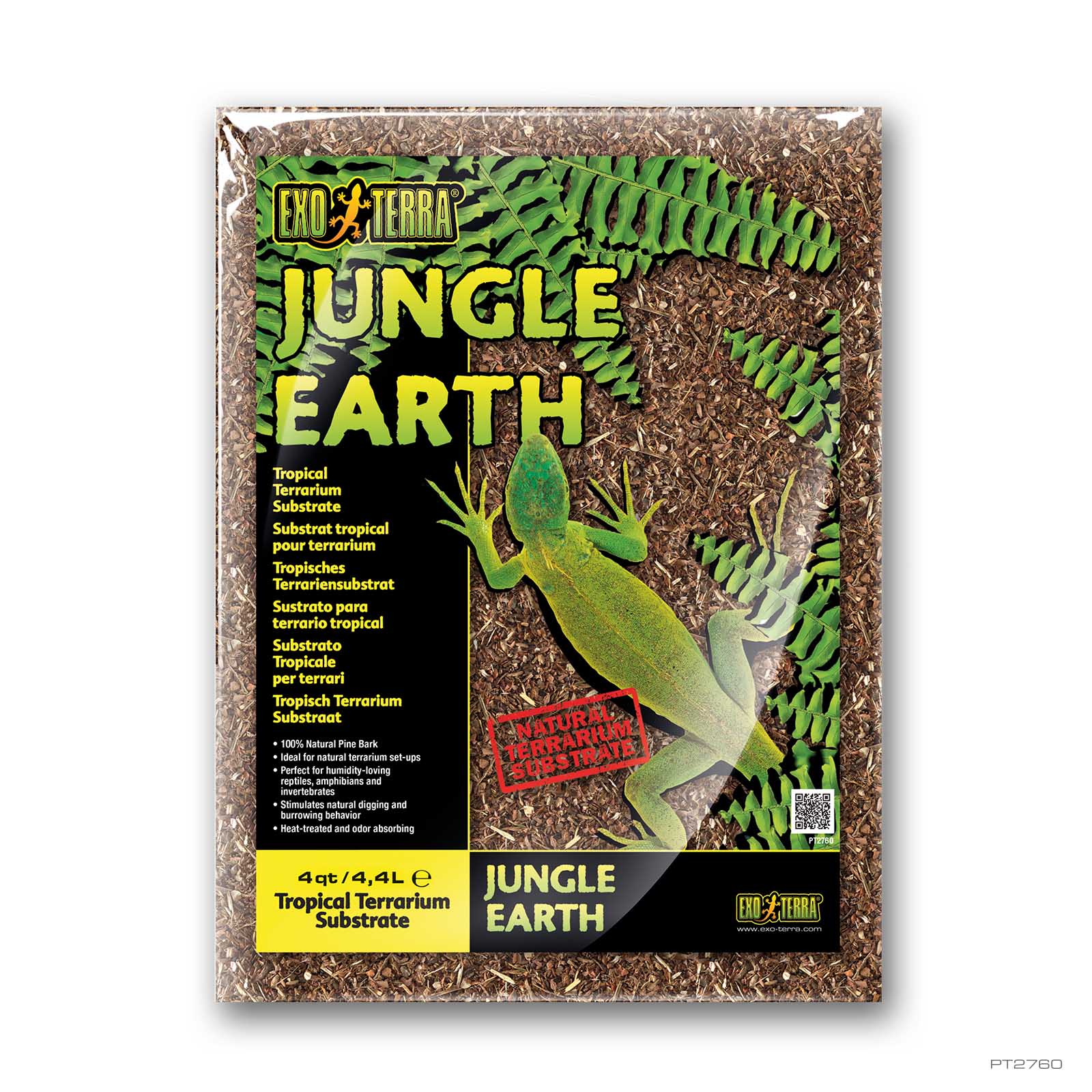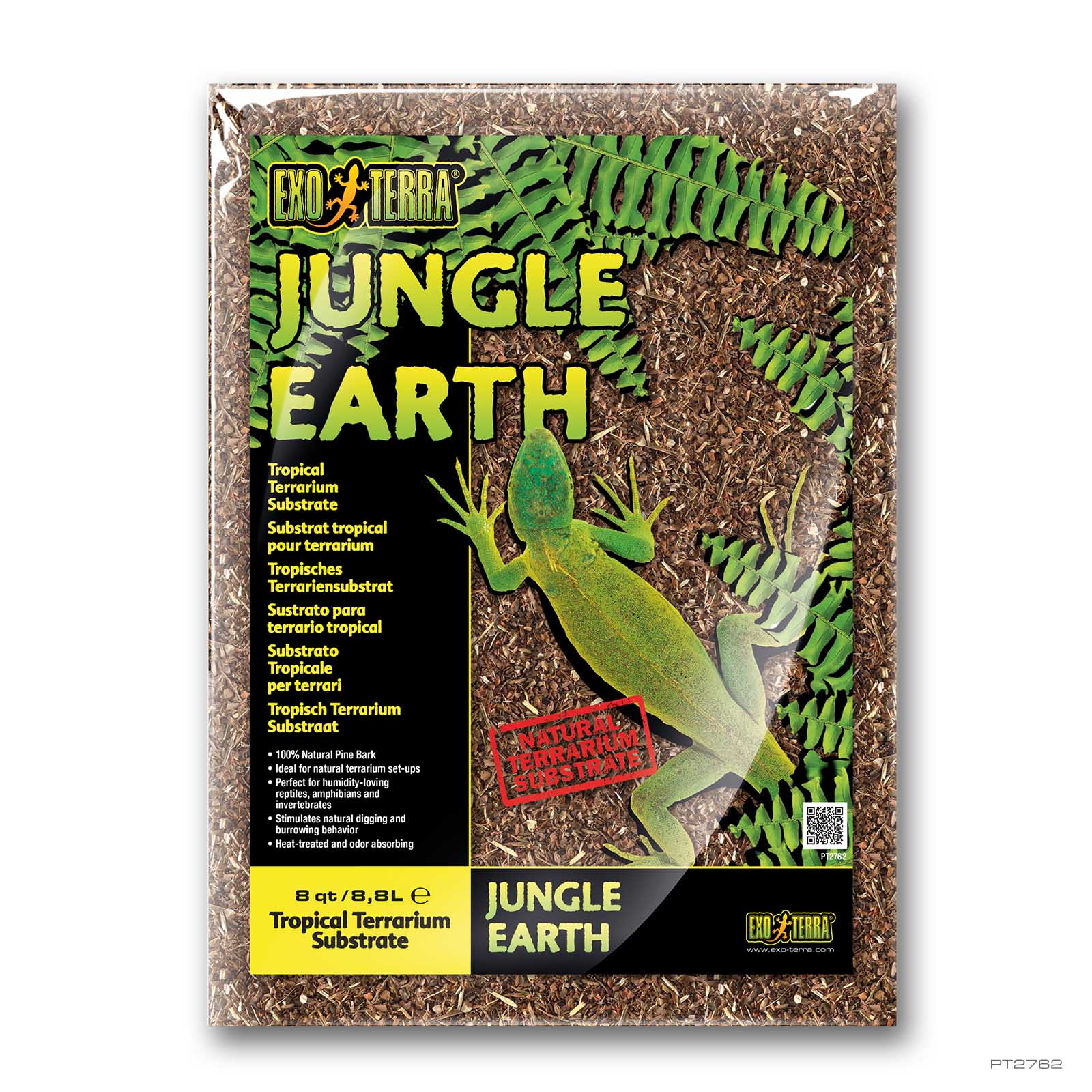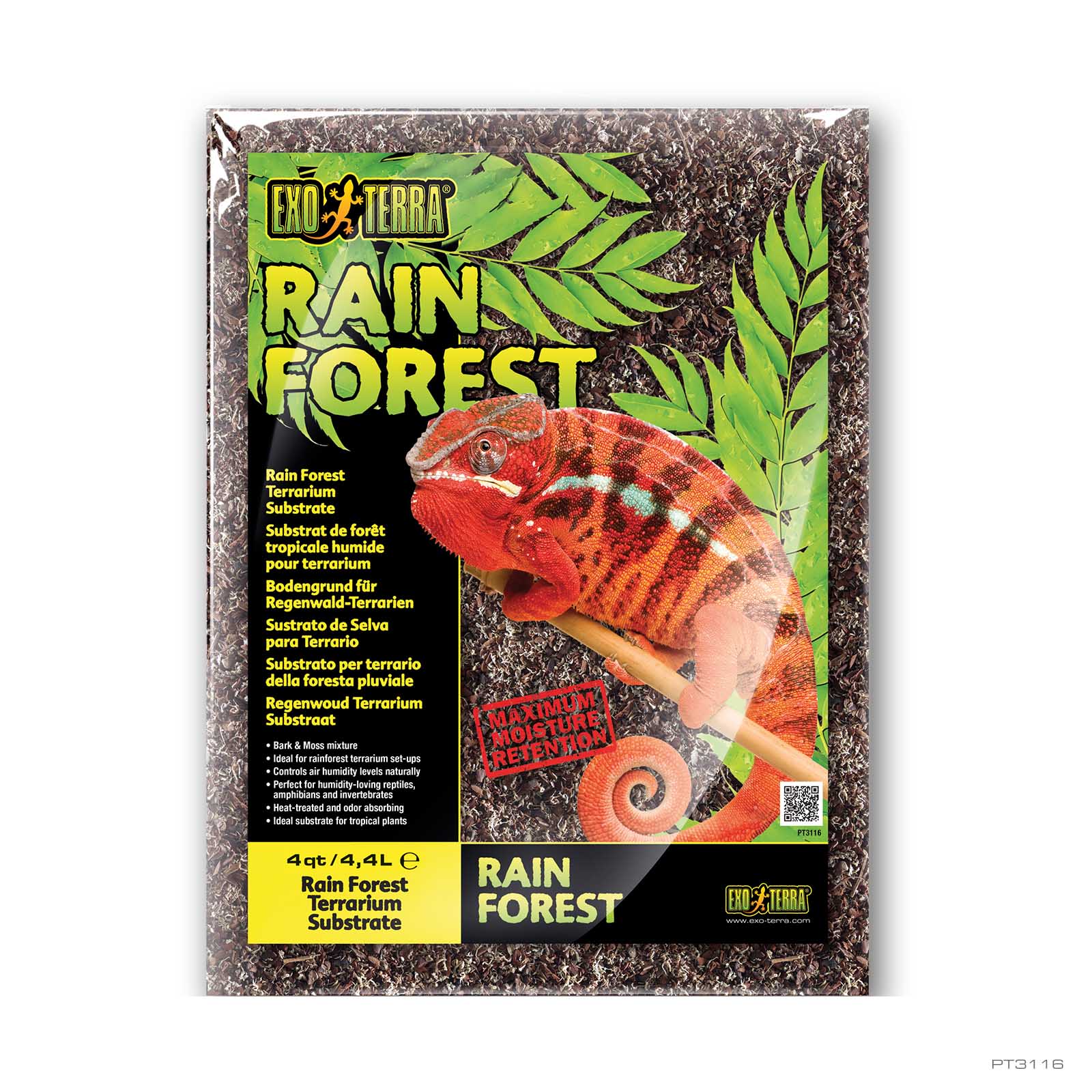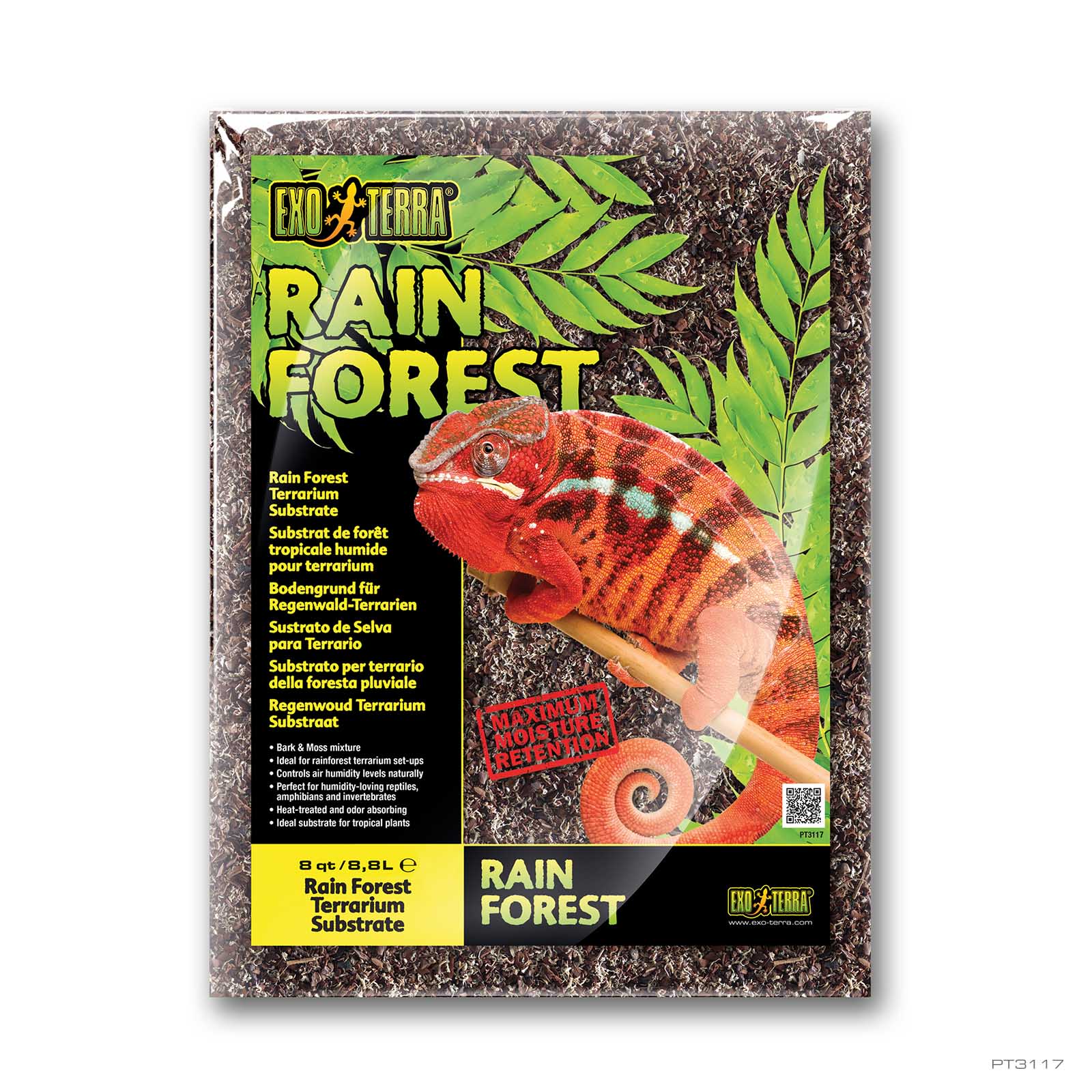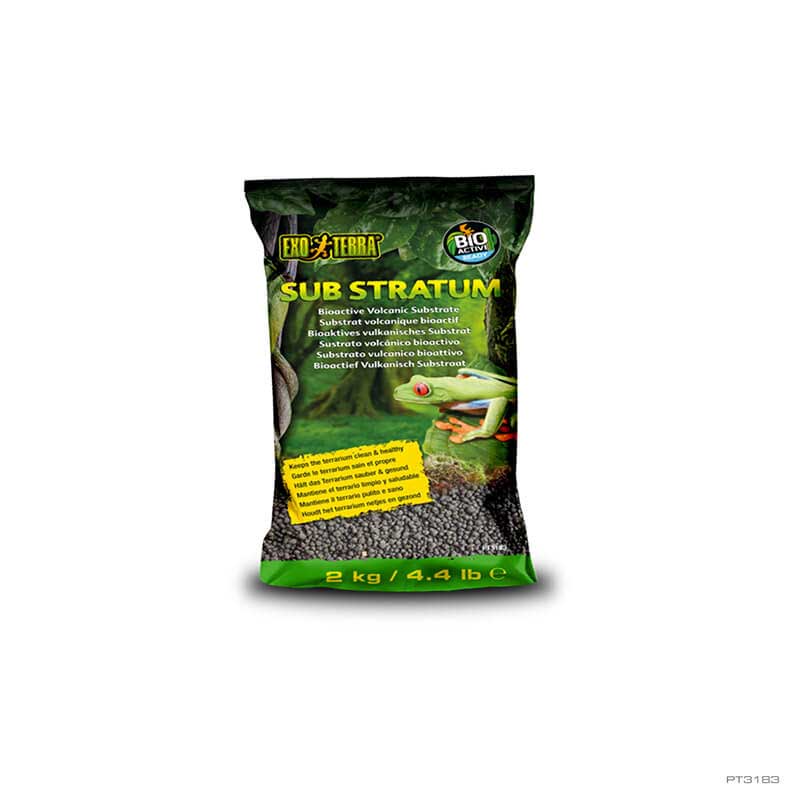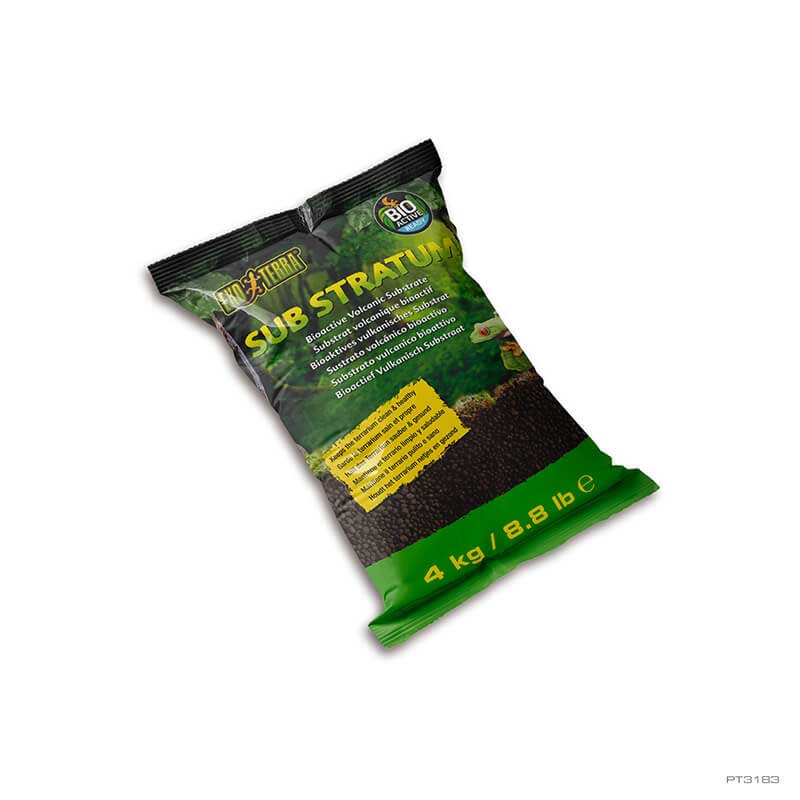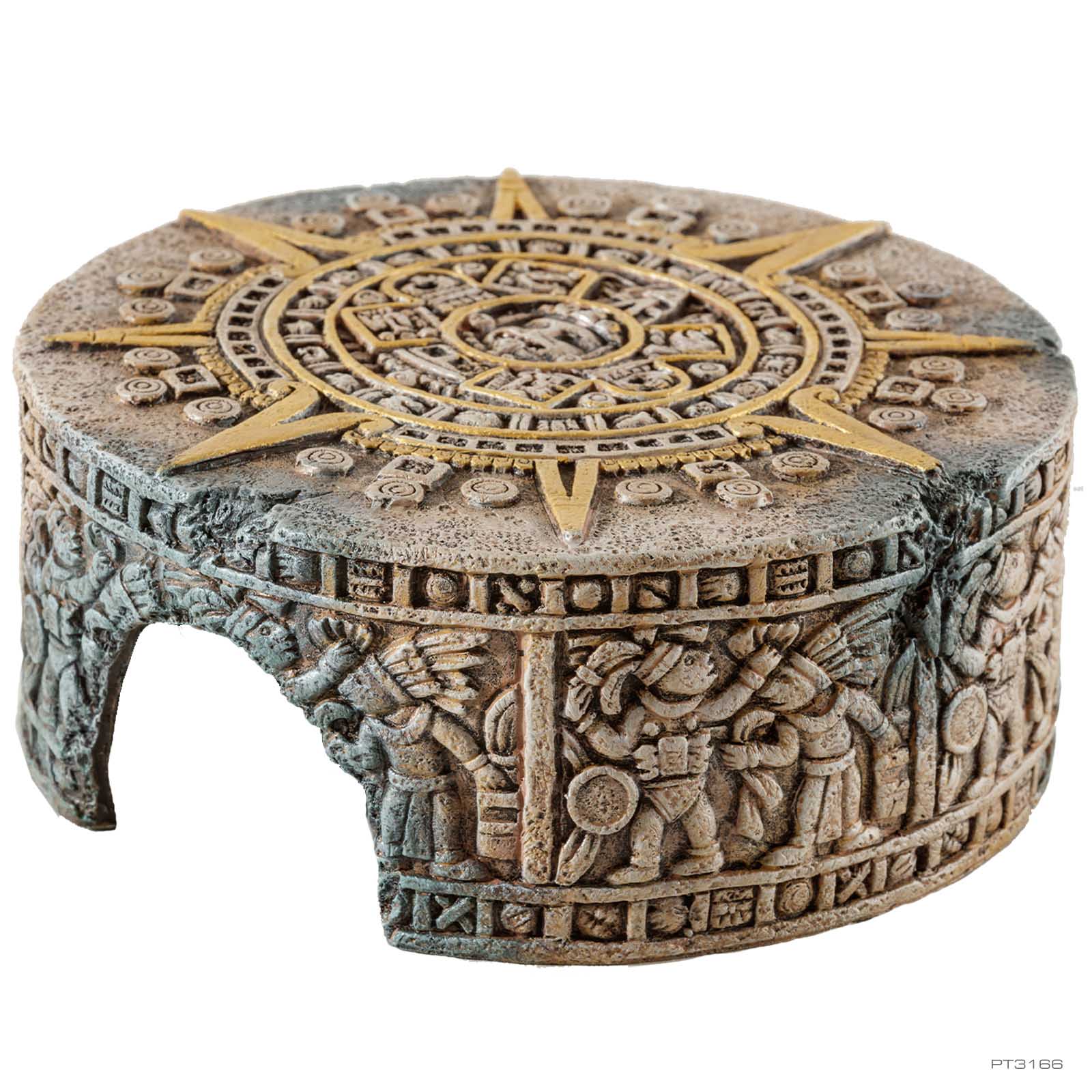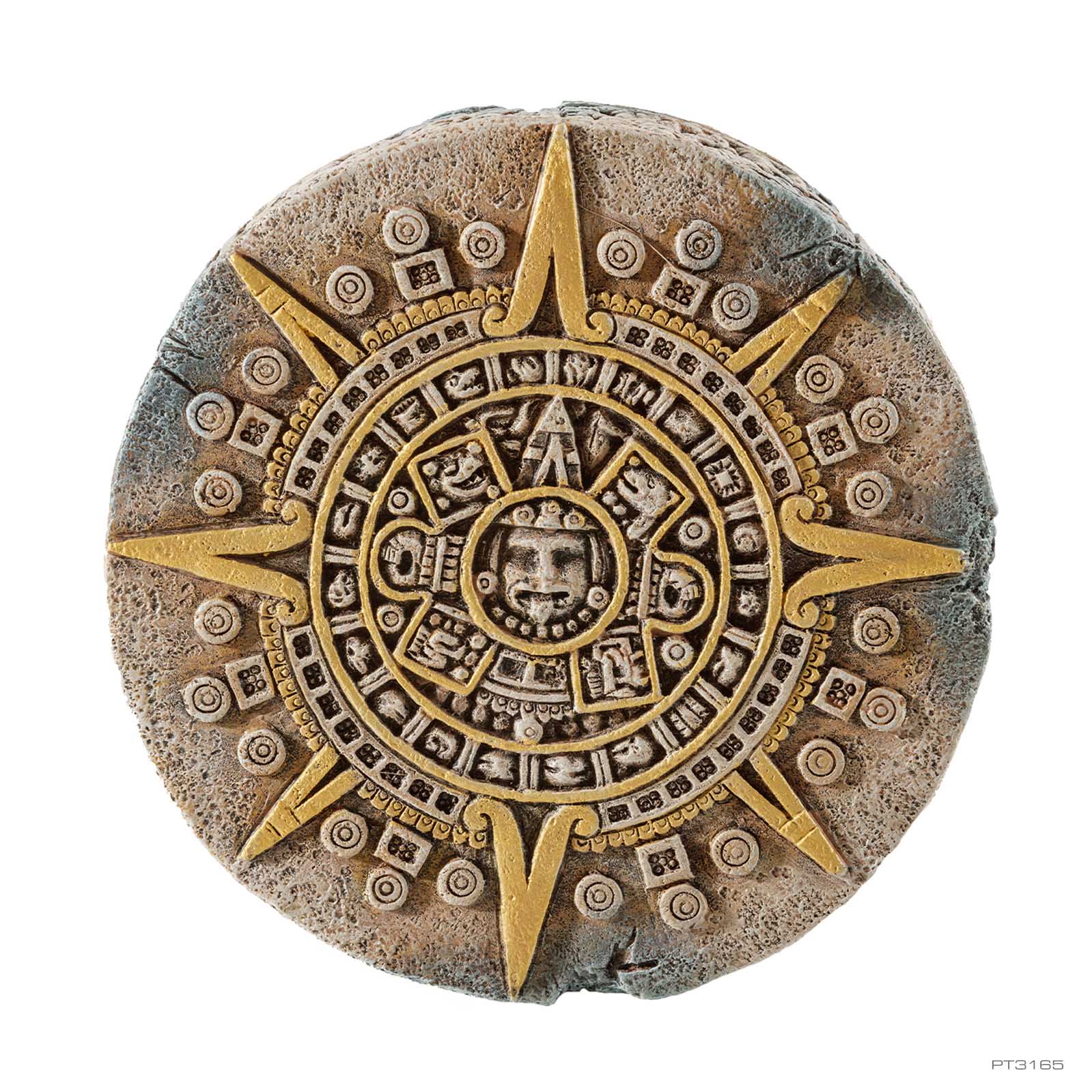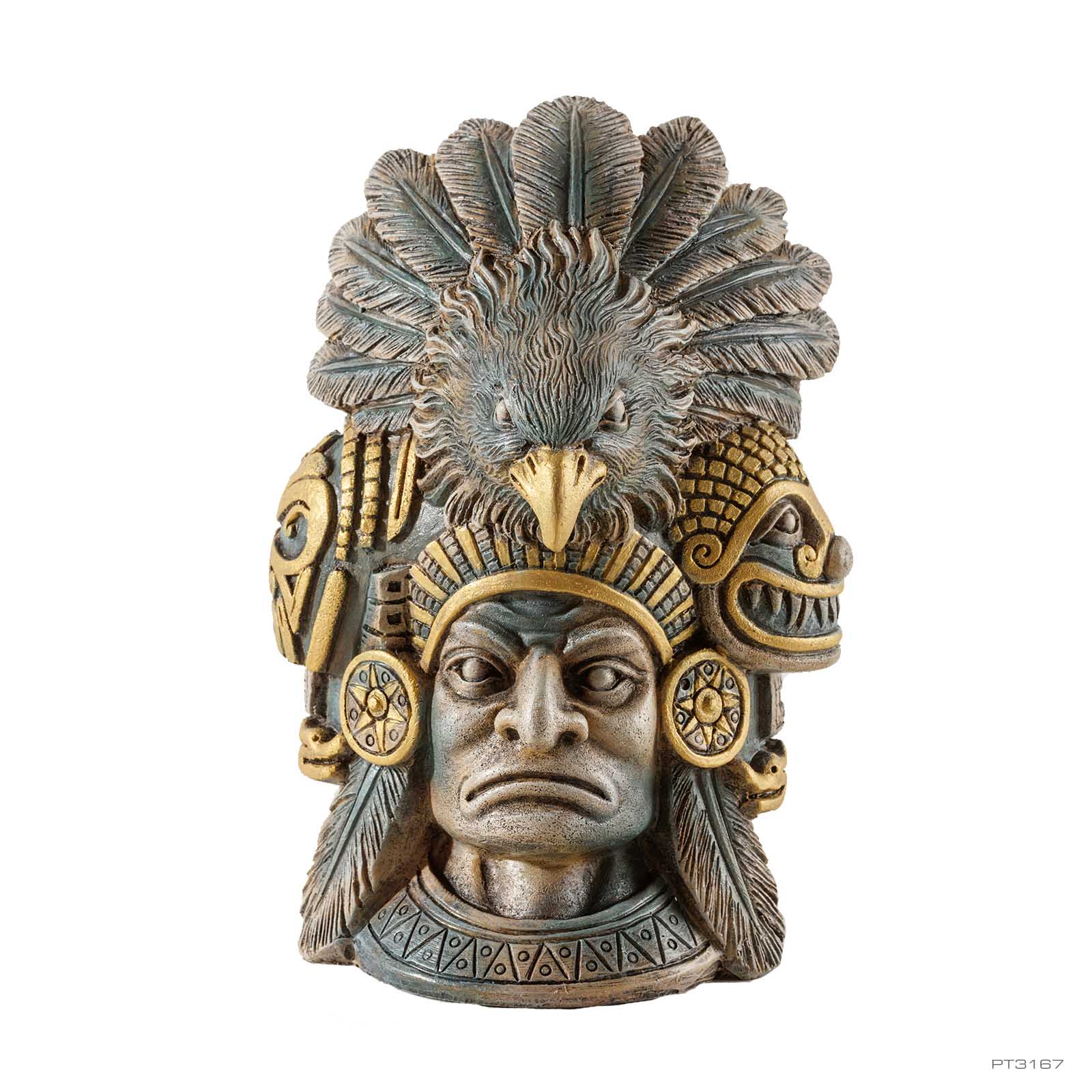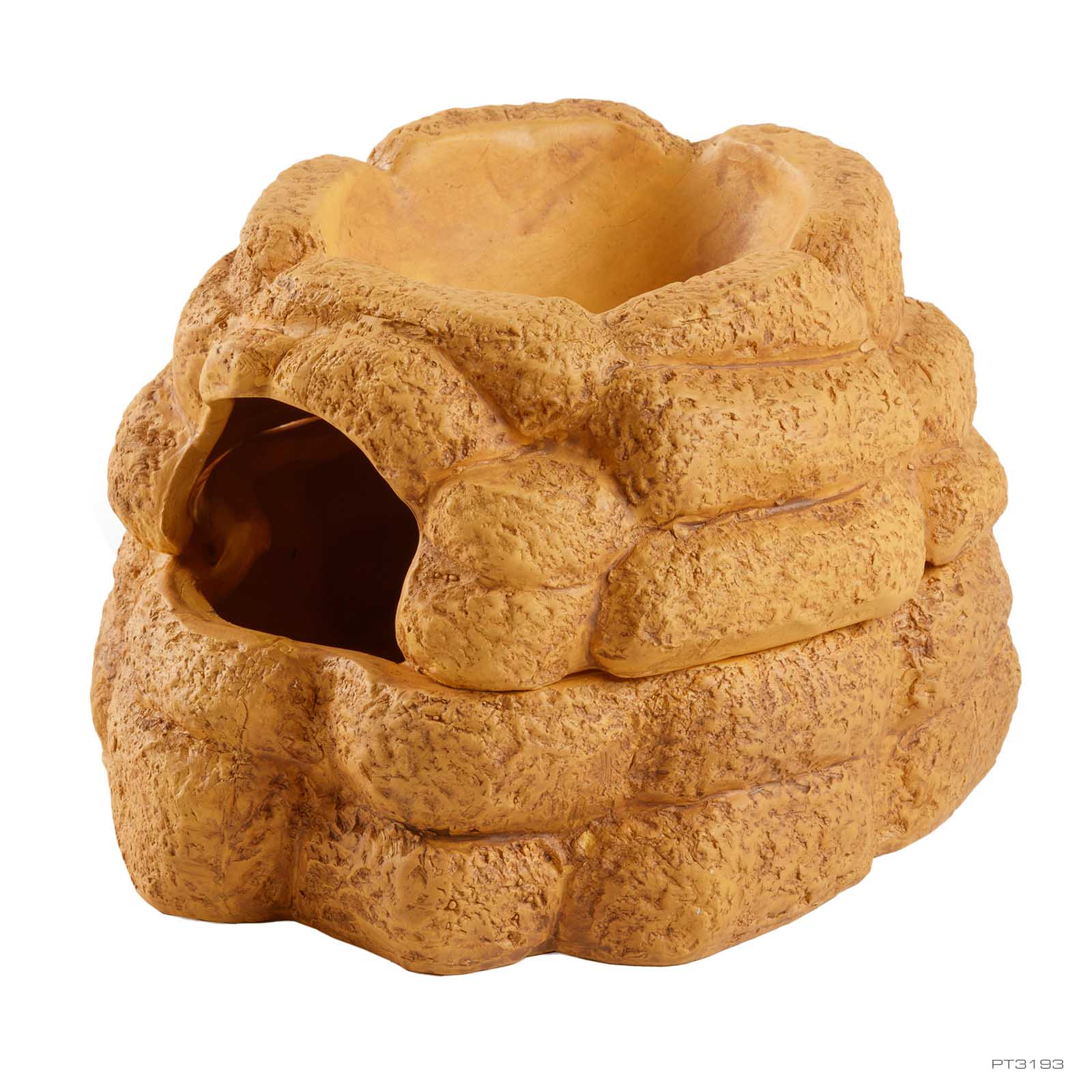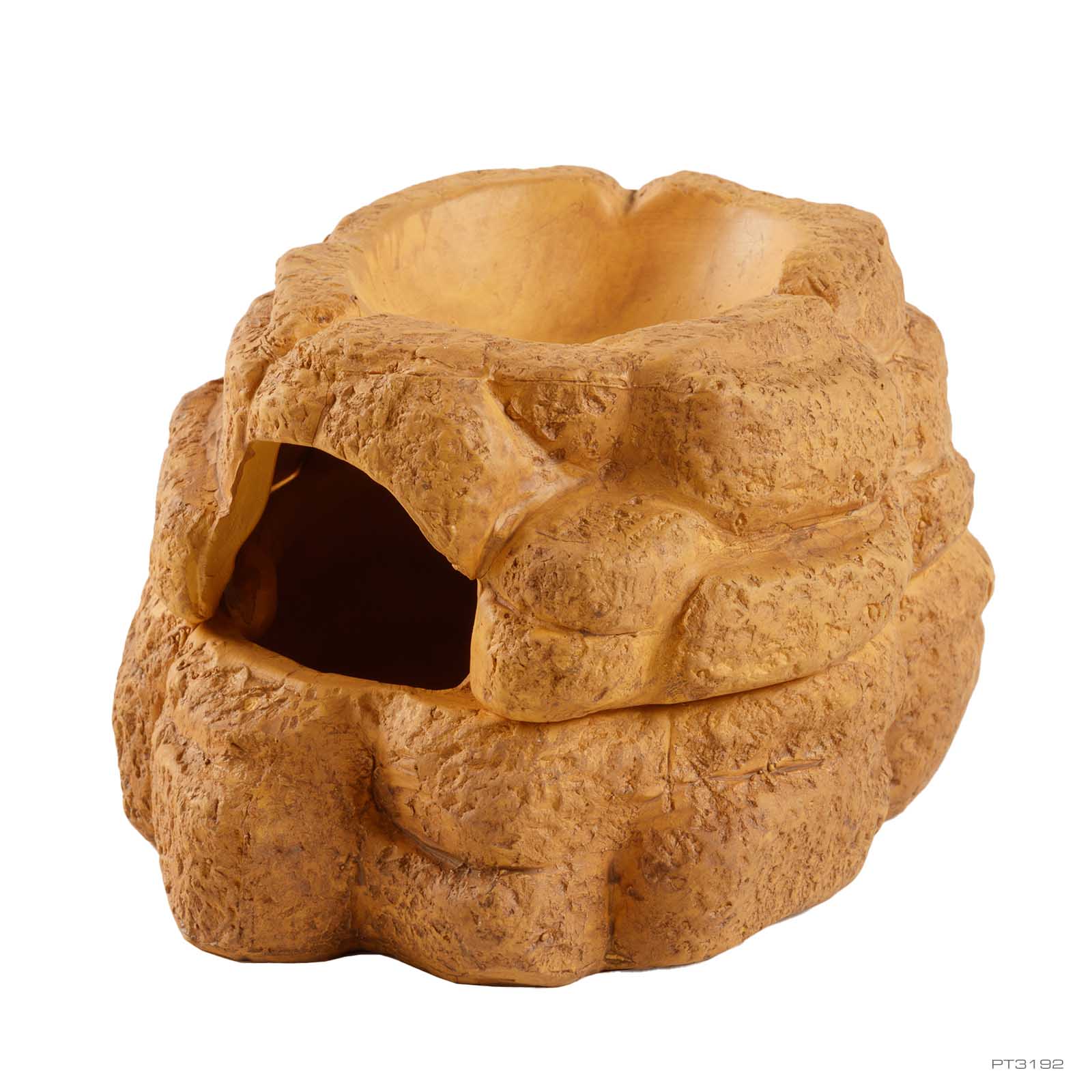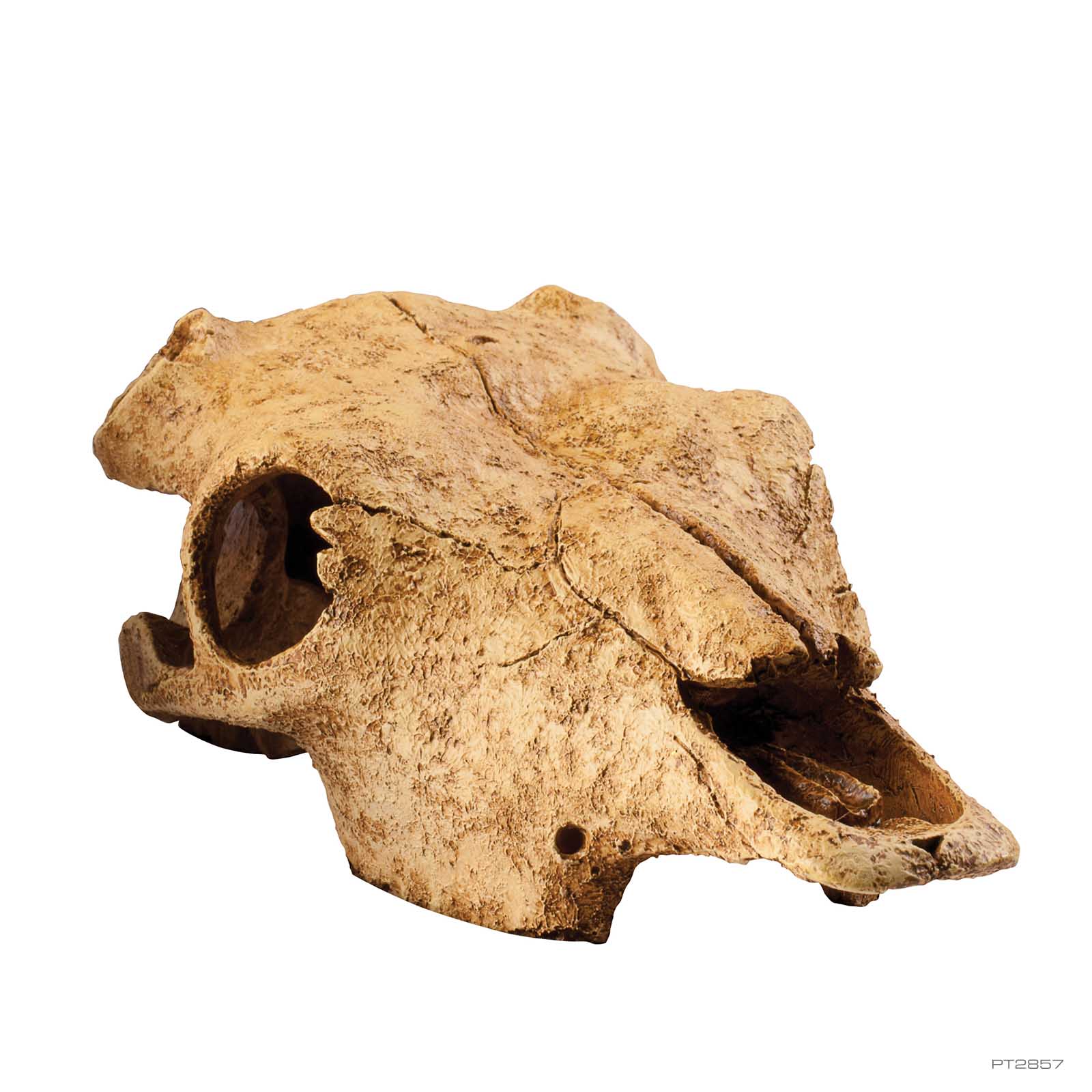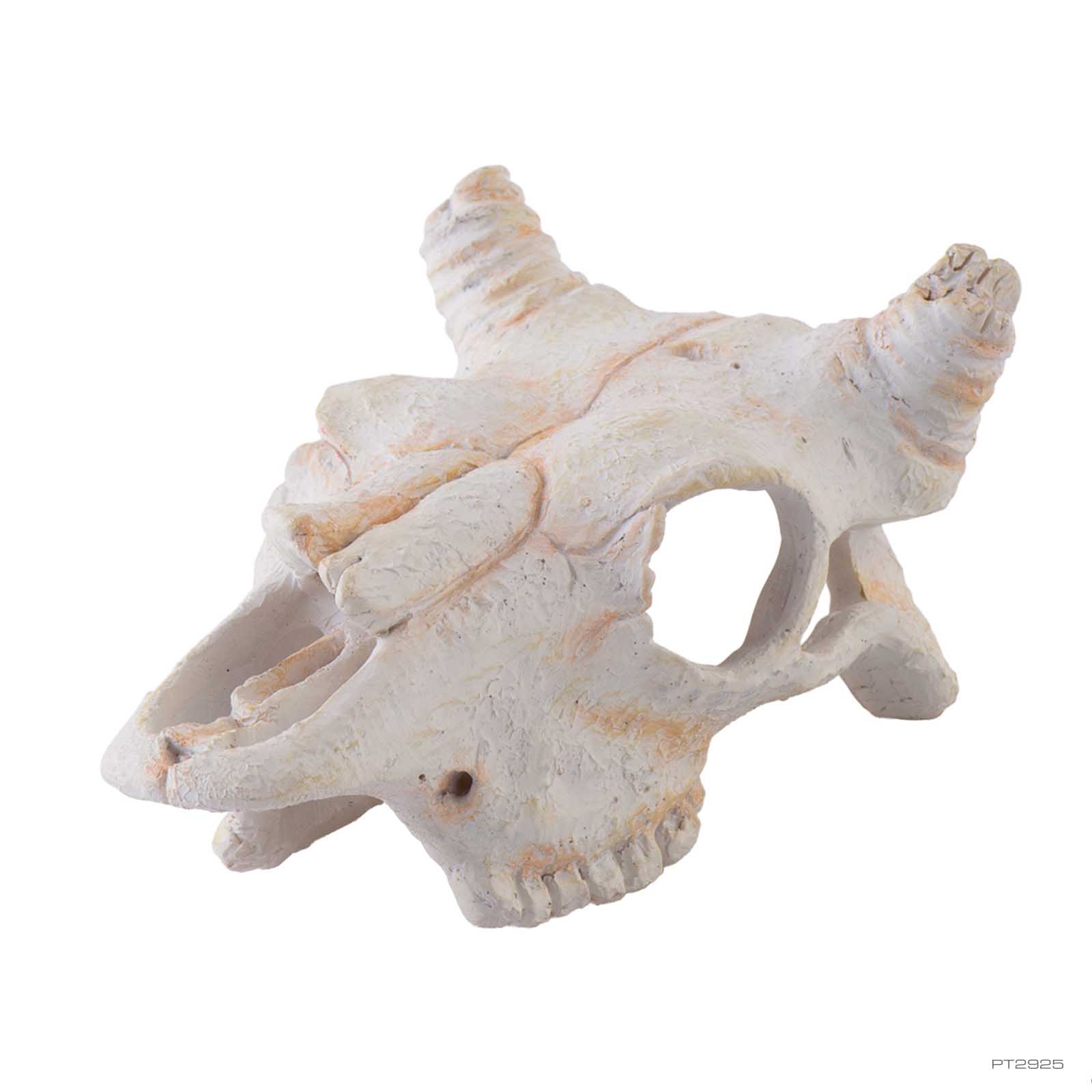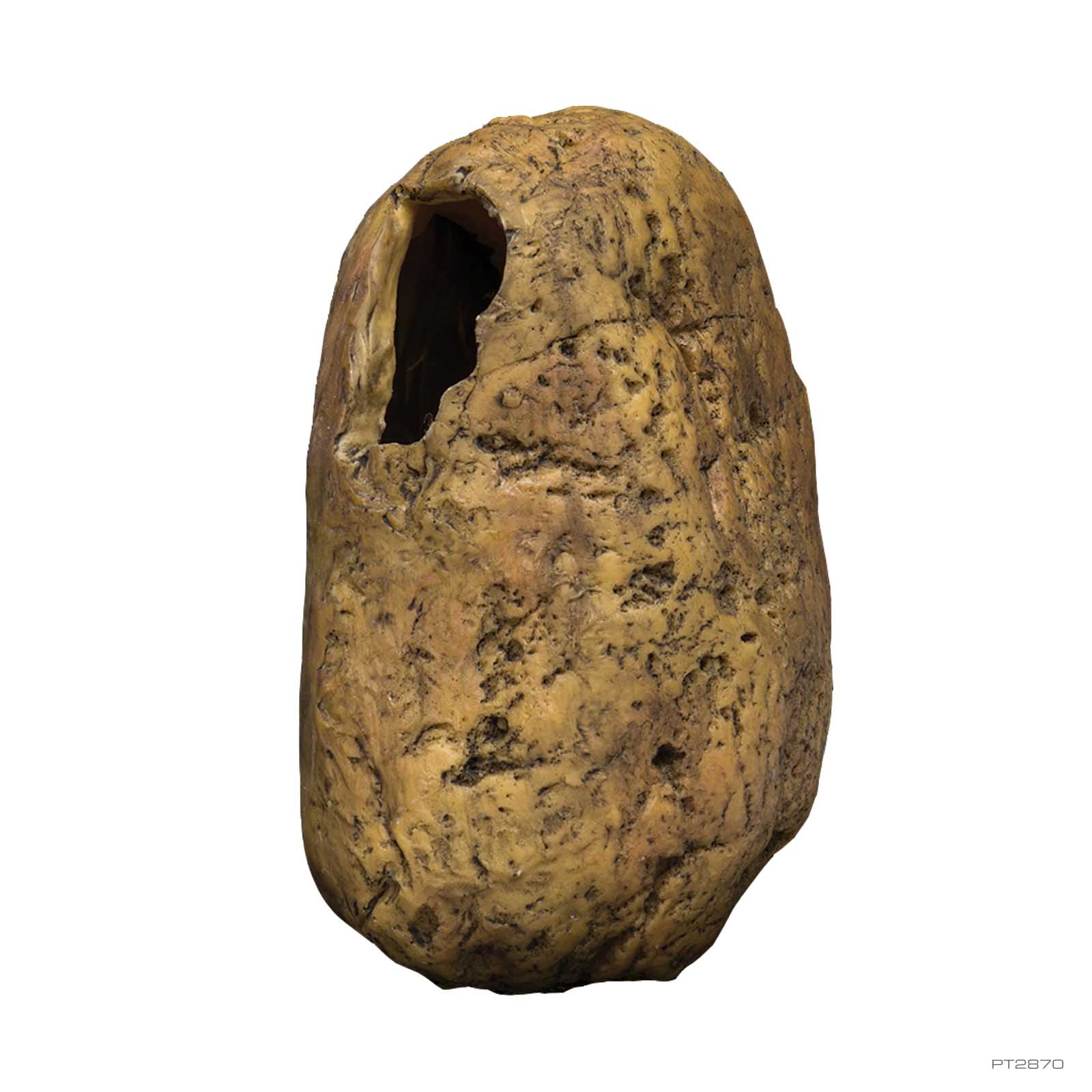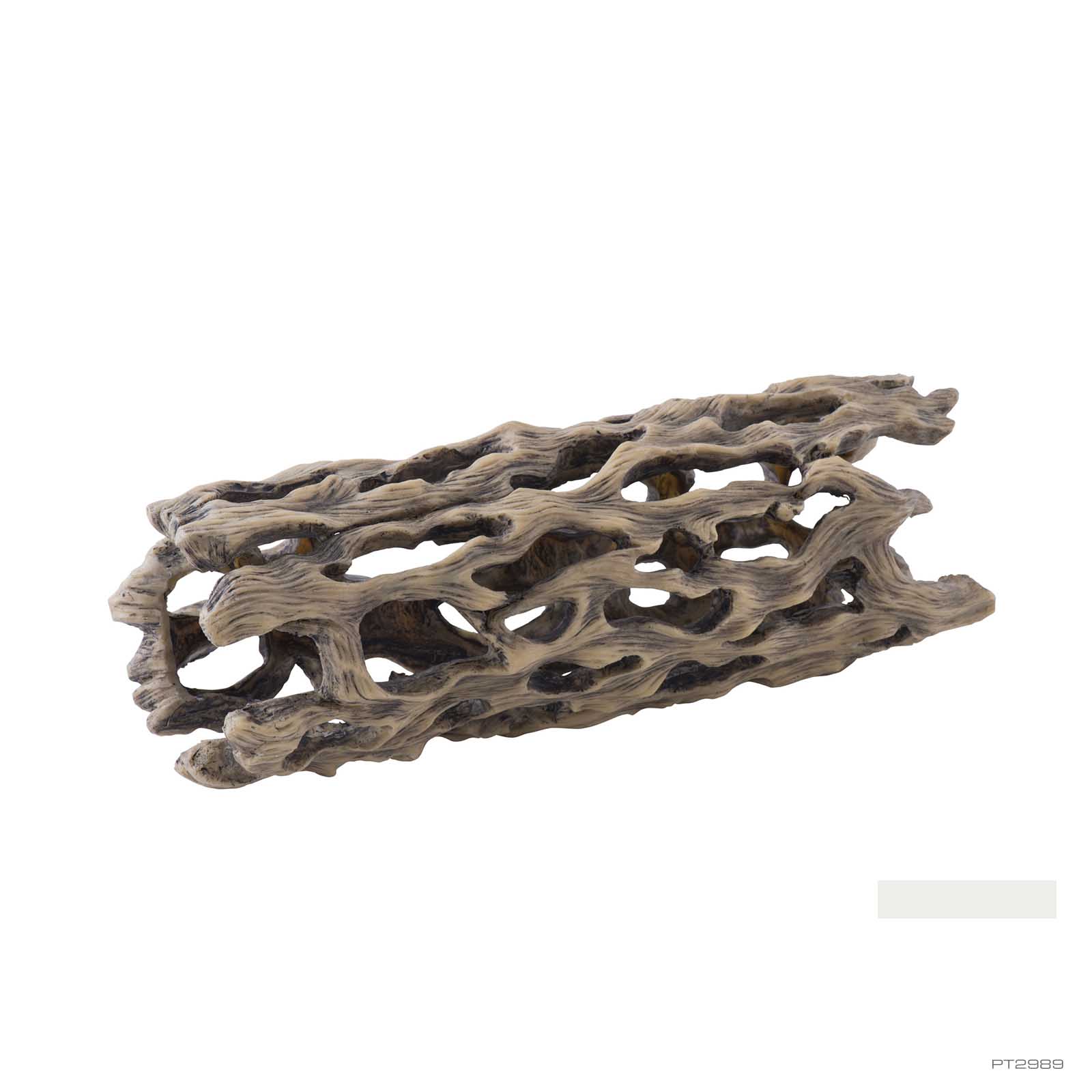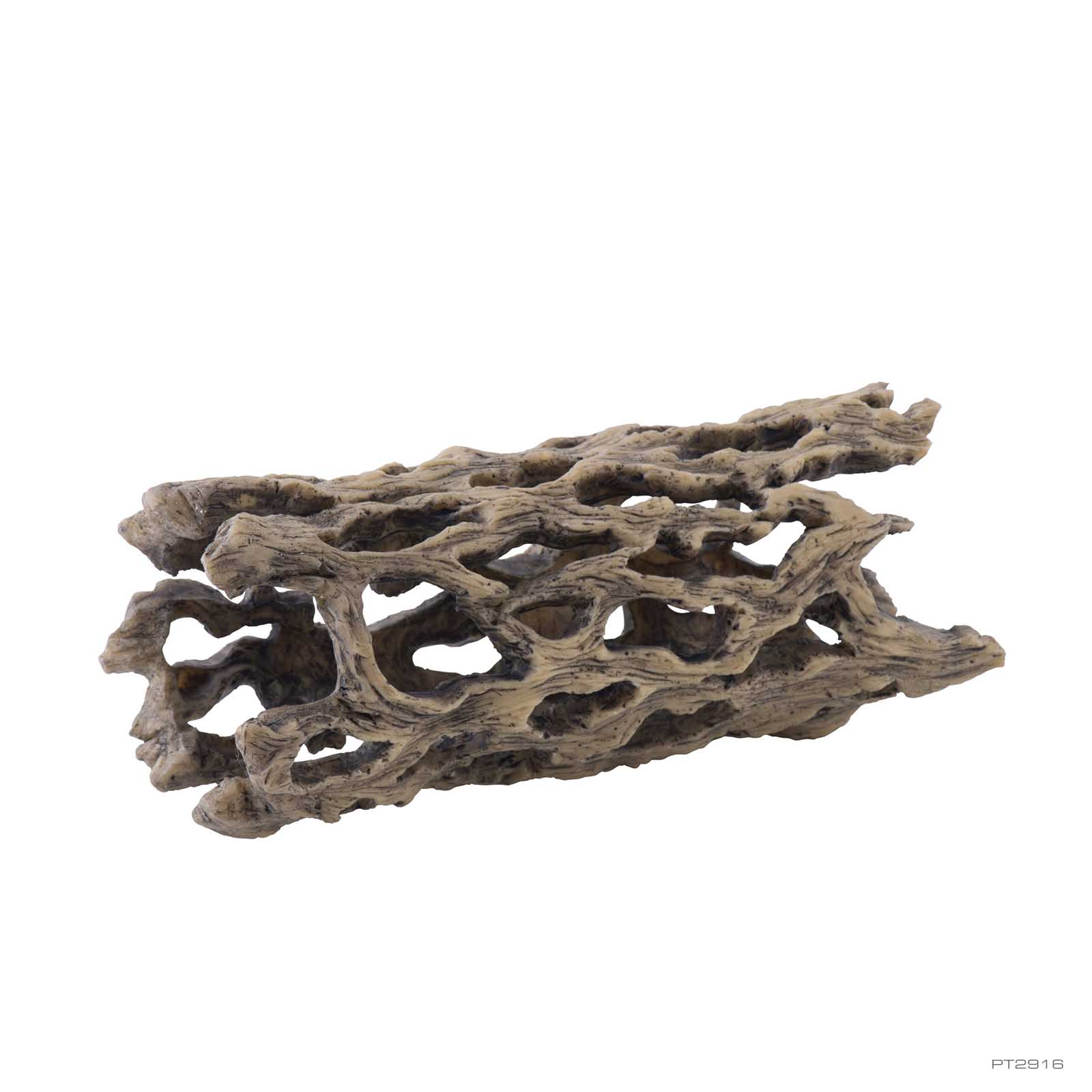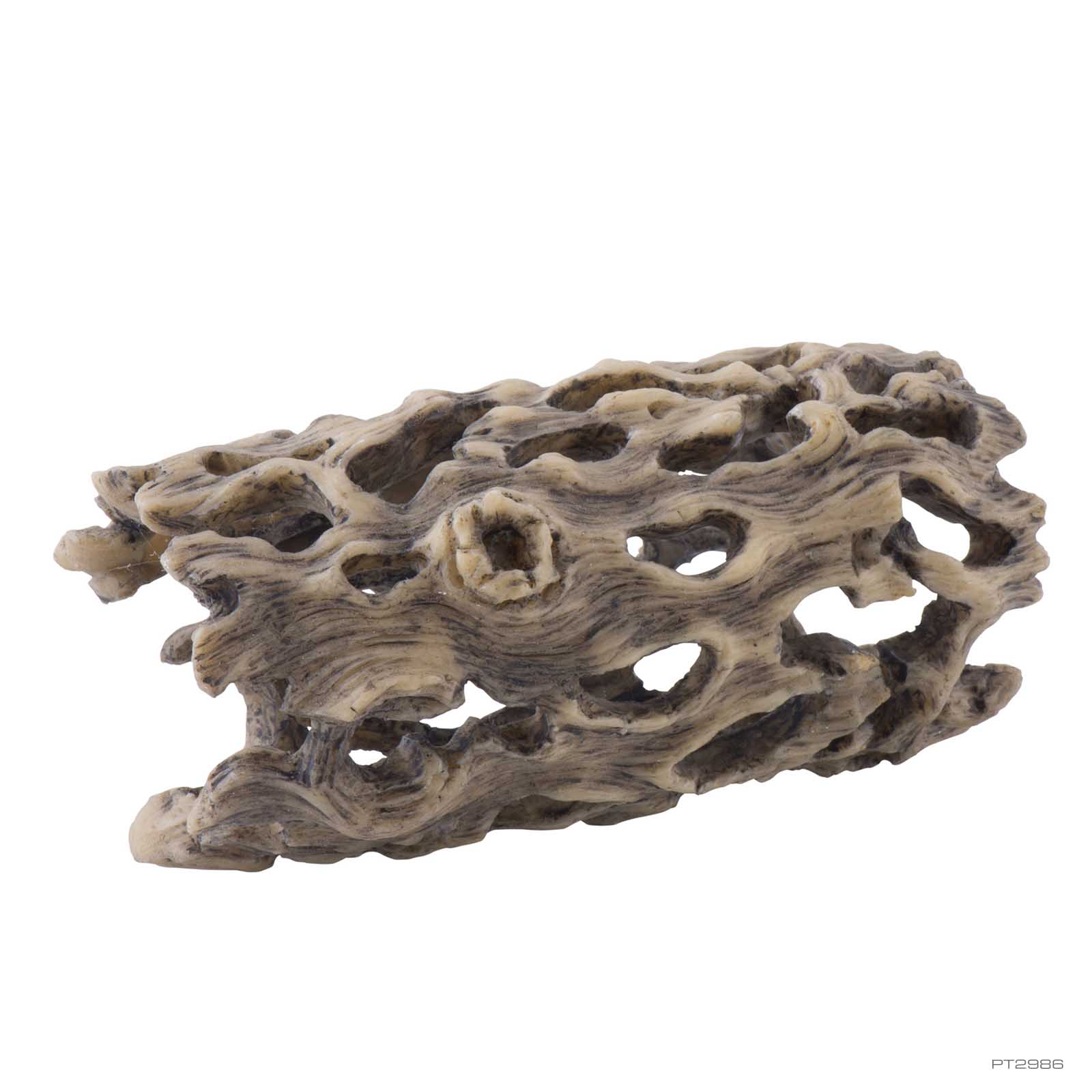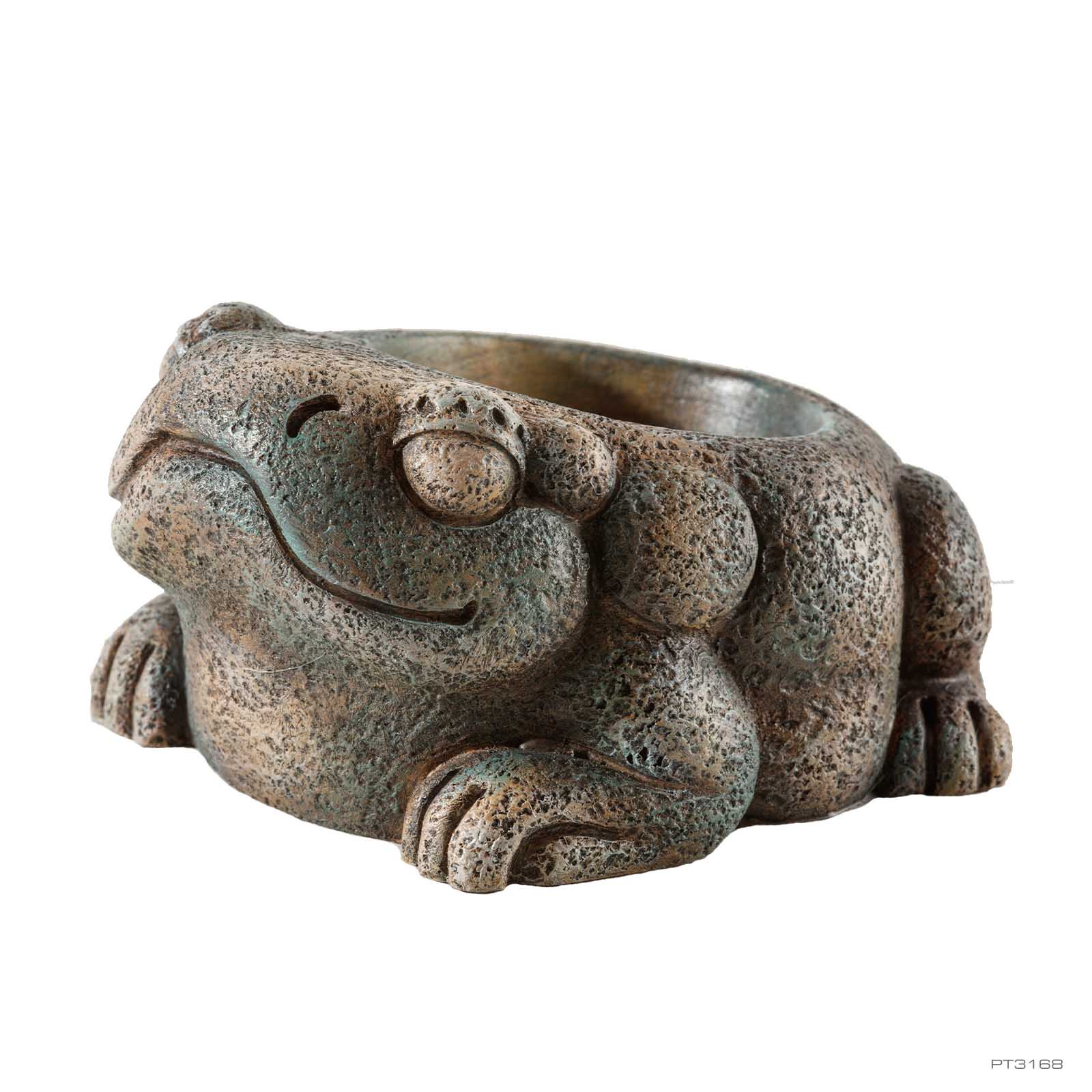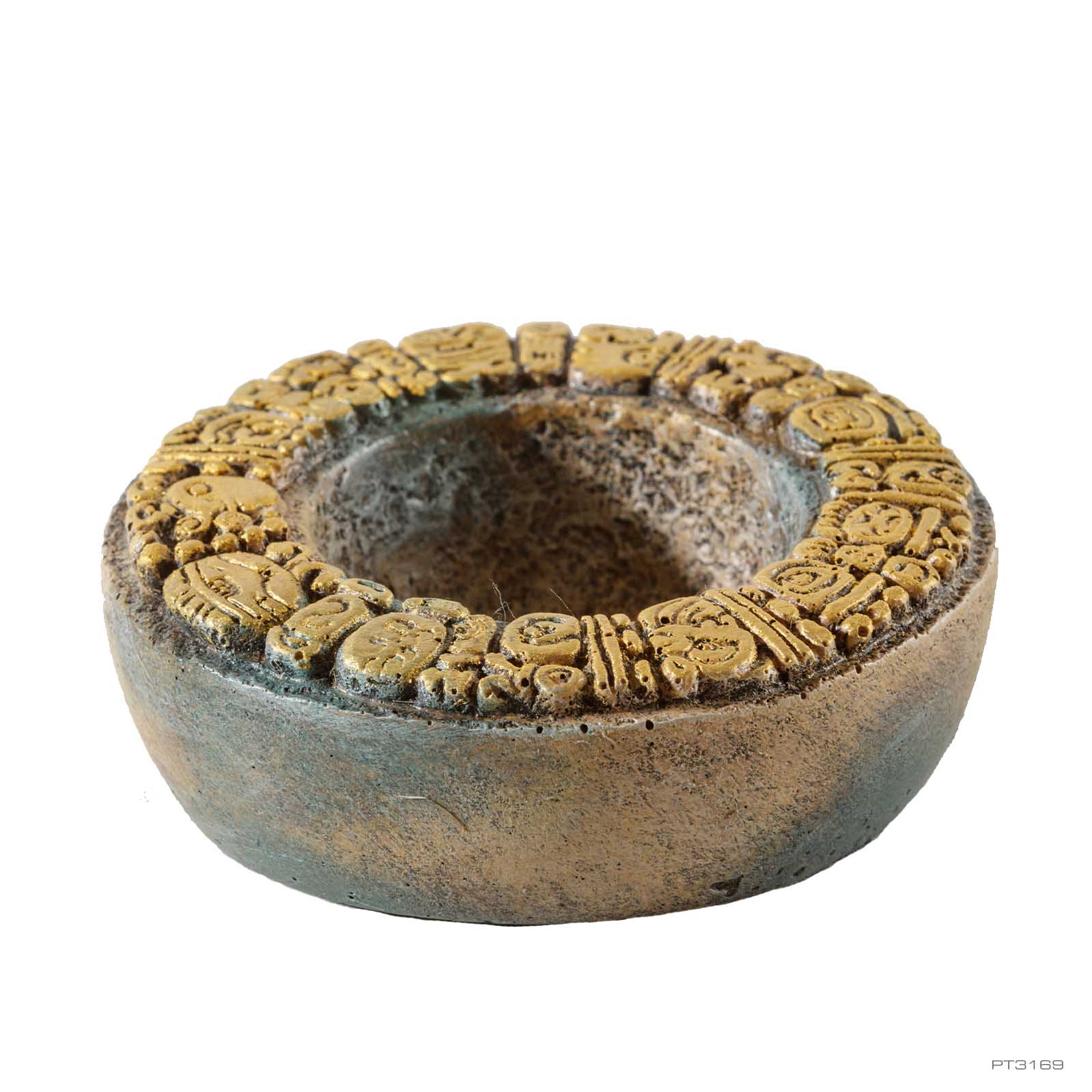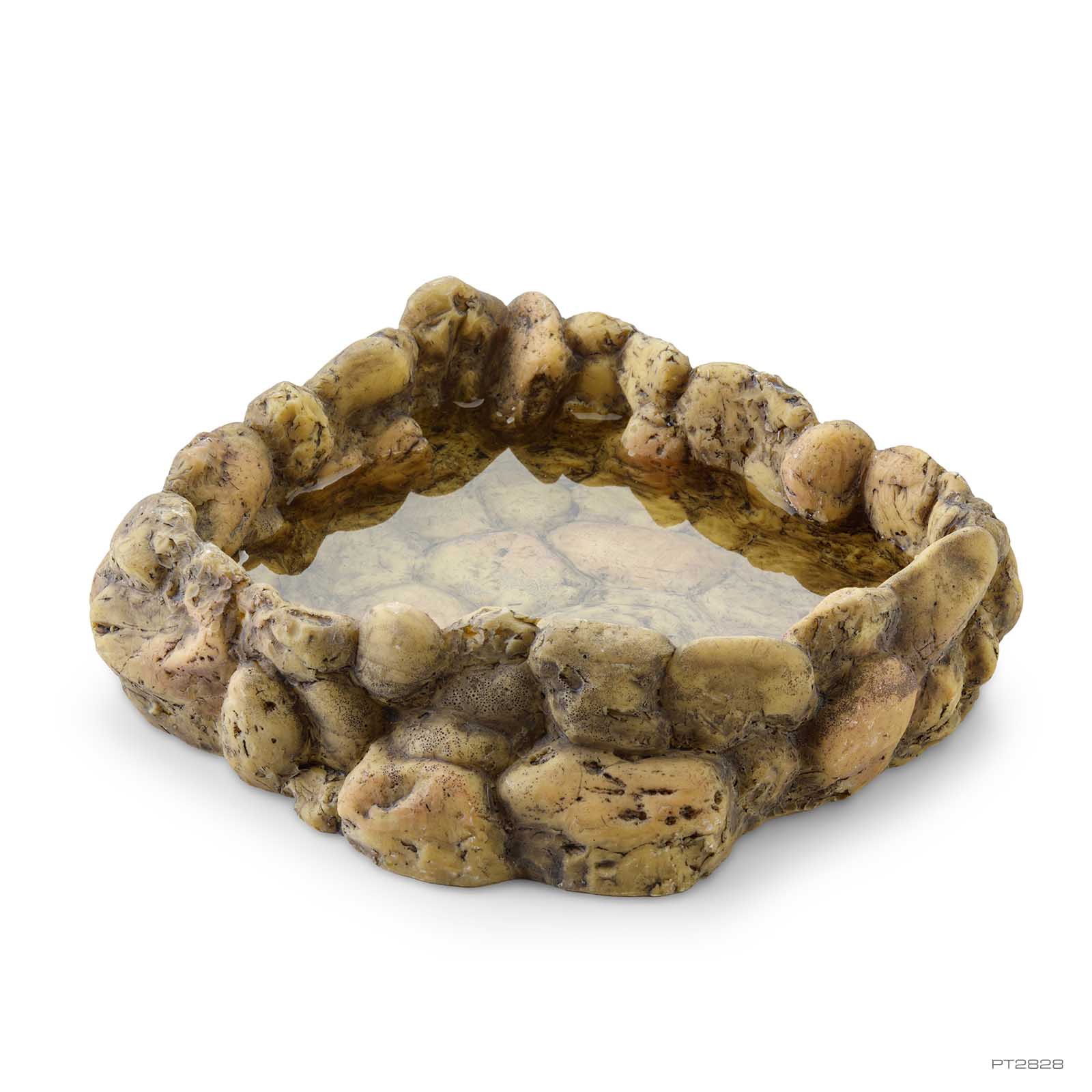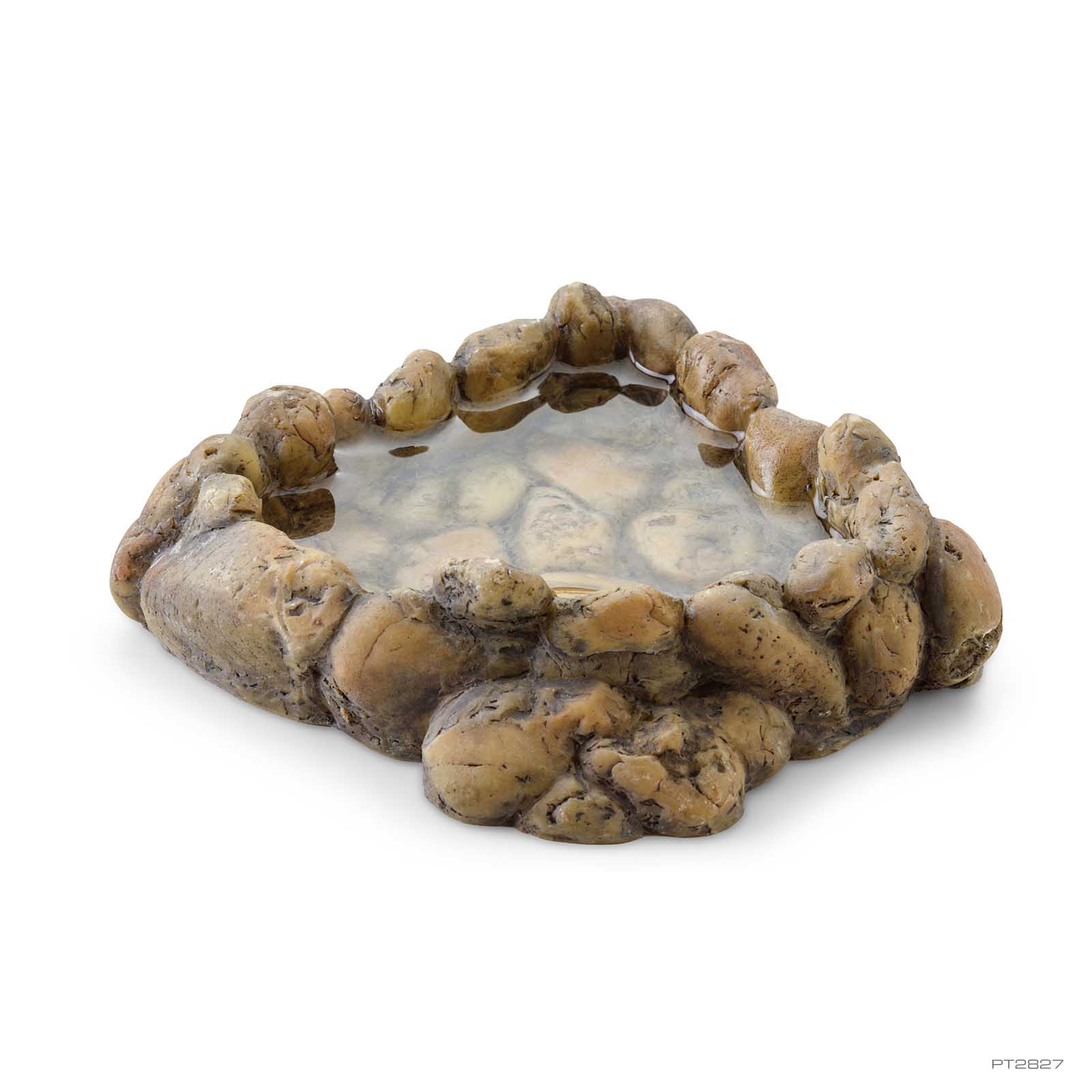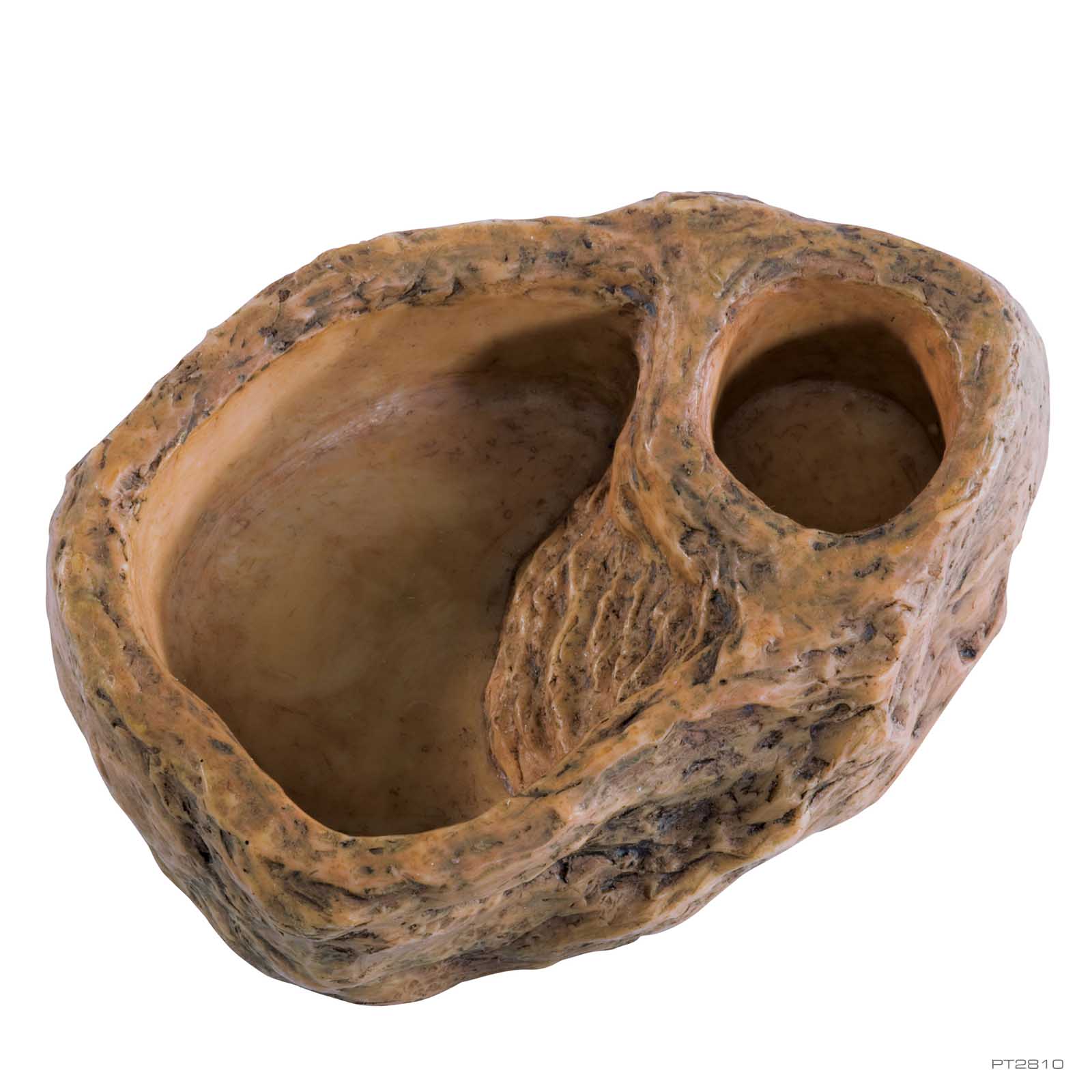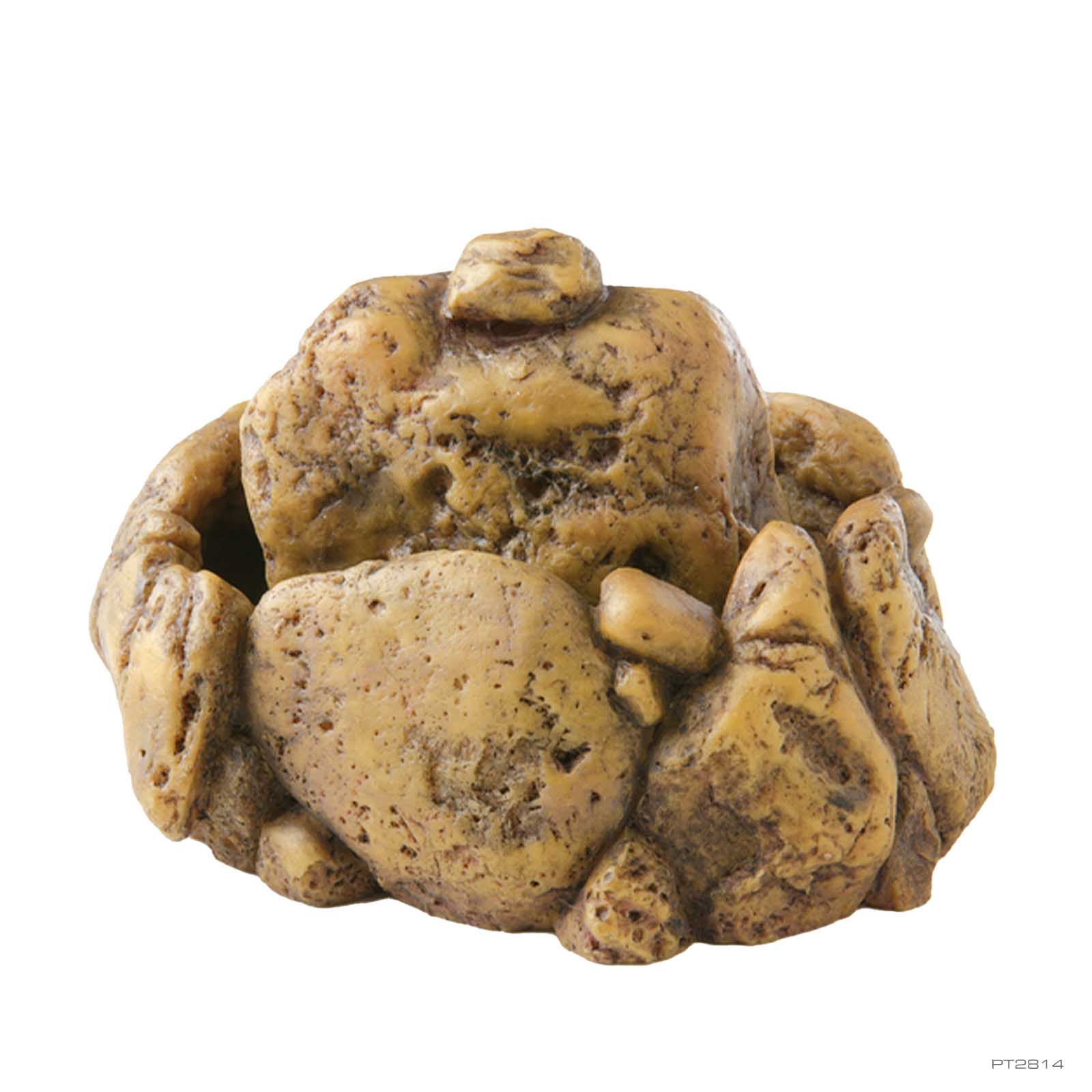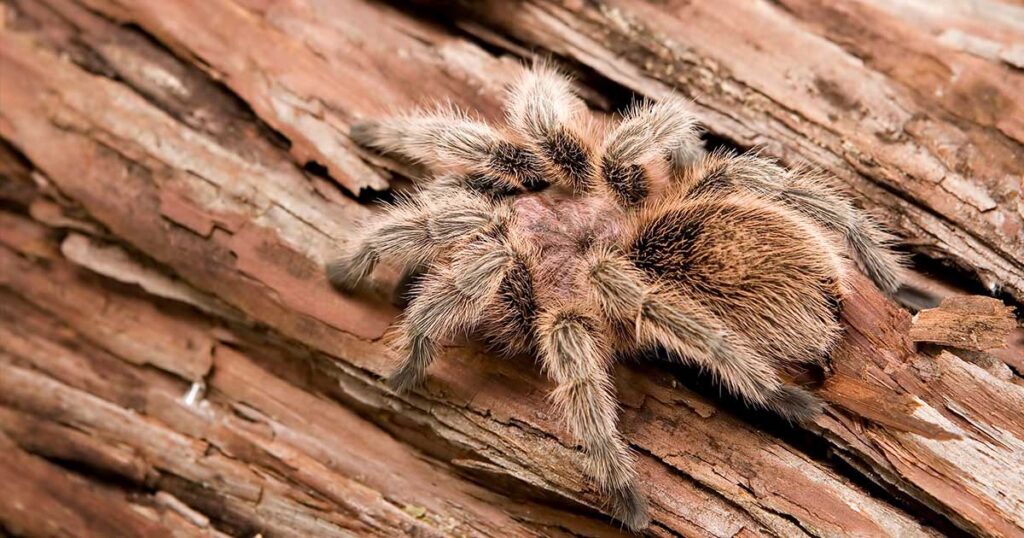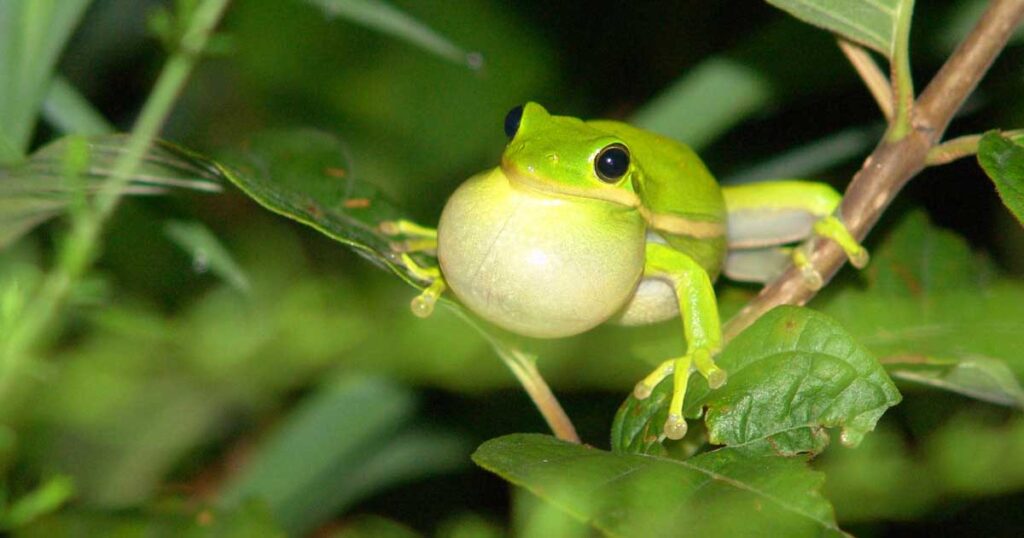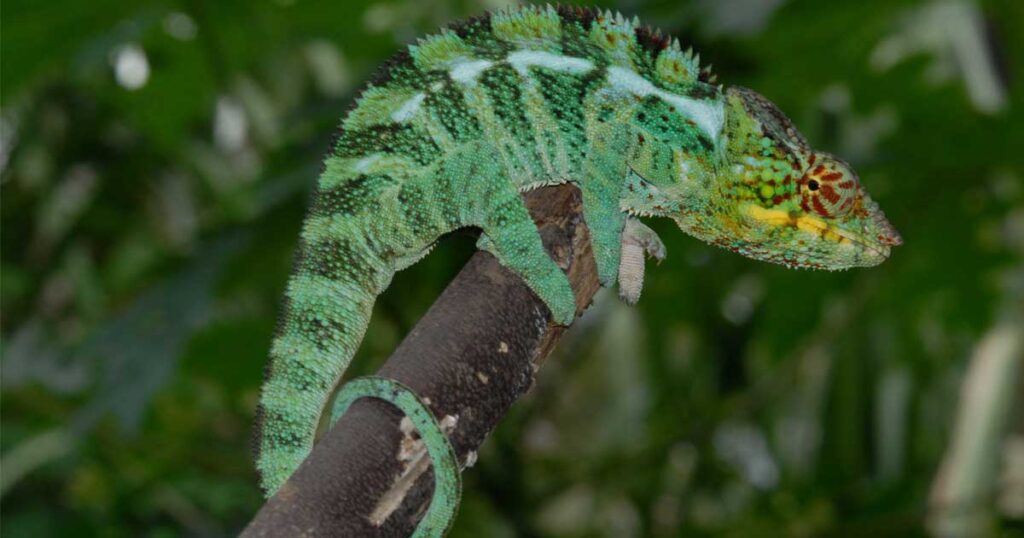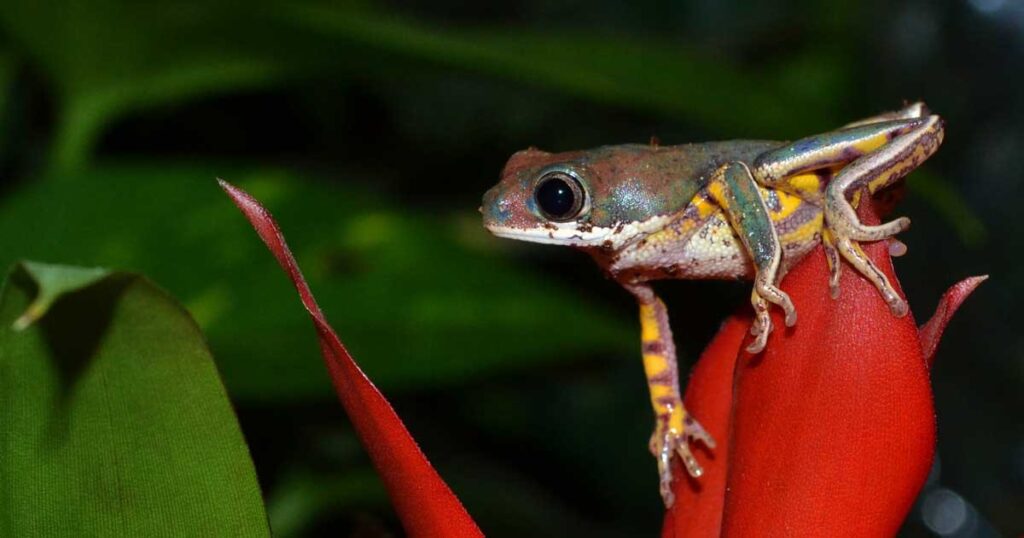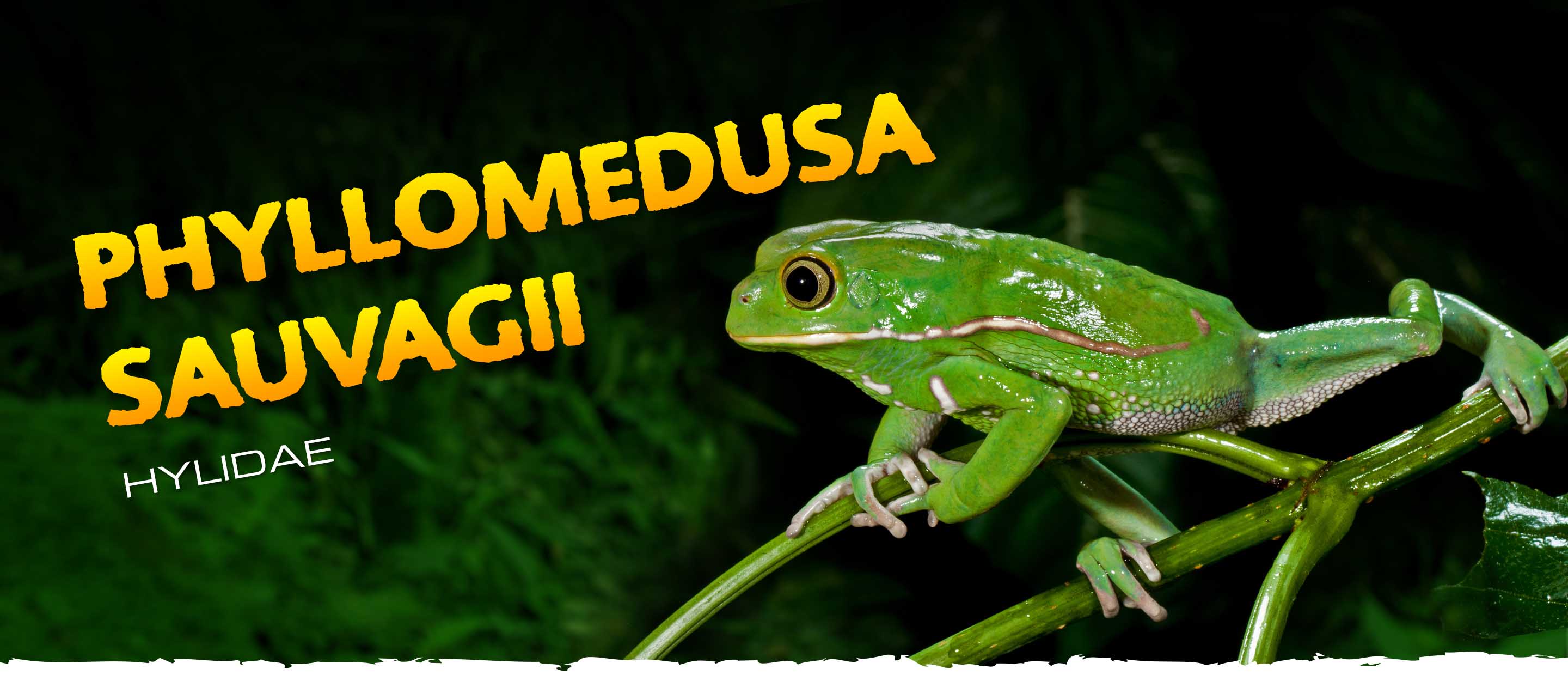
Phyllomedusa sauvagii
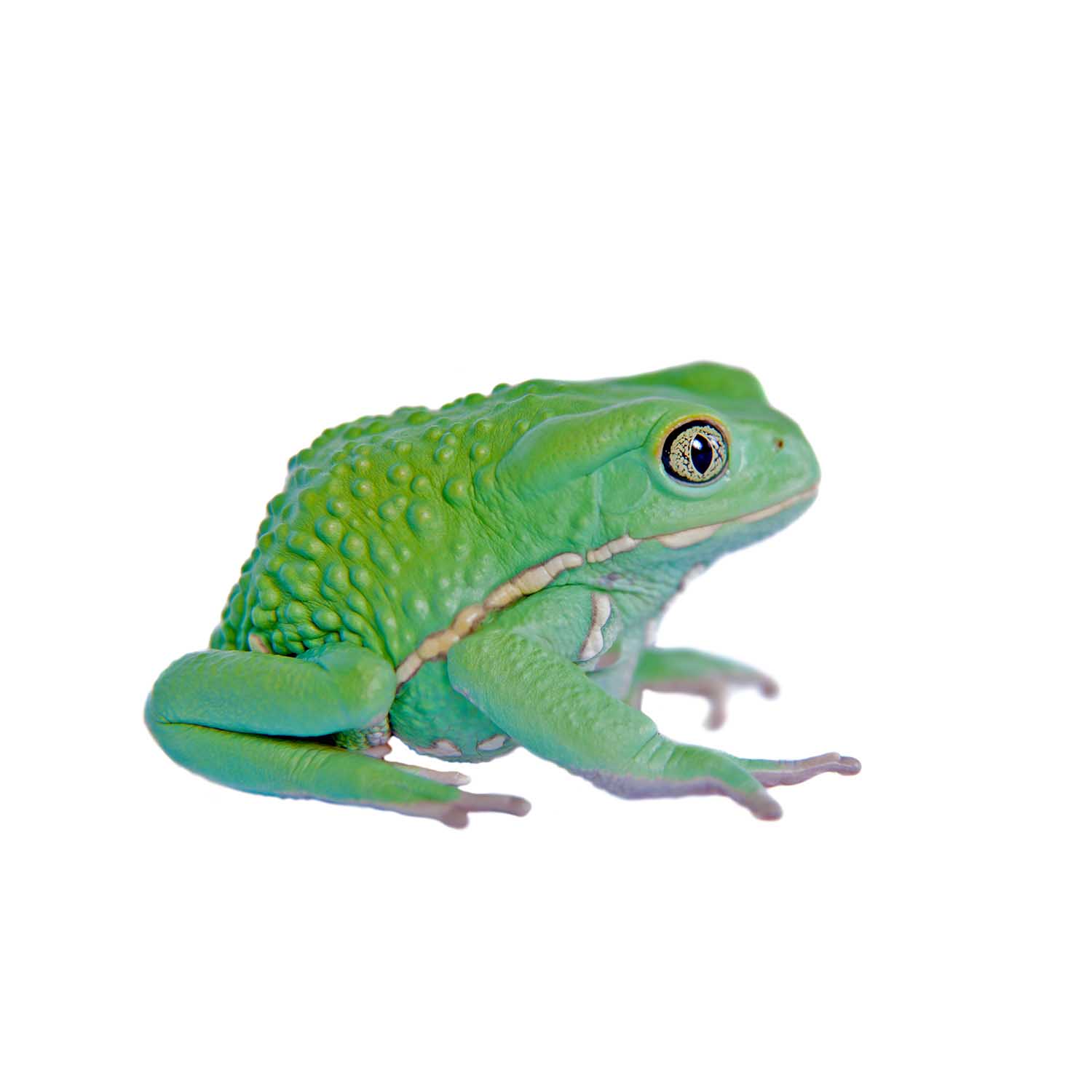

Waxy Monkey Tree Frog
Waxy Monkey Tree Frogs are native to the South American rainforests, humid montane forests, and dry forests in the Chacoan region of eastern Bolivia, northern Paraguay, Mato Grosso do Sul of central Brazil, and Northern Argentina. They primarily prefer moist and semi-moist forest habitats but can also cope with drier environments.
They are sometimes referred to as Chacoan Monkey Leaf Frogs as well, because of the Chaco Region they originate from, and because the females lay their eggs on leaves suspended over water, which they then fold to hide the eggs and protect them from drying out.
Waxy Monkey Tree Frogs are hardy, long-lived, docile and “easy-to-care-for” amphibians. Their engaging personalities, their waxy green skin, their adorable smile and big golden eyes make them appealing display animals for both the beginning reptile enthusiast as well as for the advanced hobbyist.
Waxy Monkey Tree Frogs are very tranquil and get accustomed to handling by their caretaker fairly easily. For the well-being of the frogs, however, we do not recommend excessive handling. Waxy Monkey Tree Frogs can be kept individually or in small groups of 2 - 8 animals. The interaction between the animals in these small groups increases the viewing pleasure but also stimulates their mating behavior.
Waxy Monkey Tree Frogs have been captive bred in the USA and Europe for more than 25 years.

History
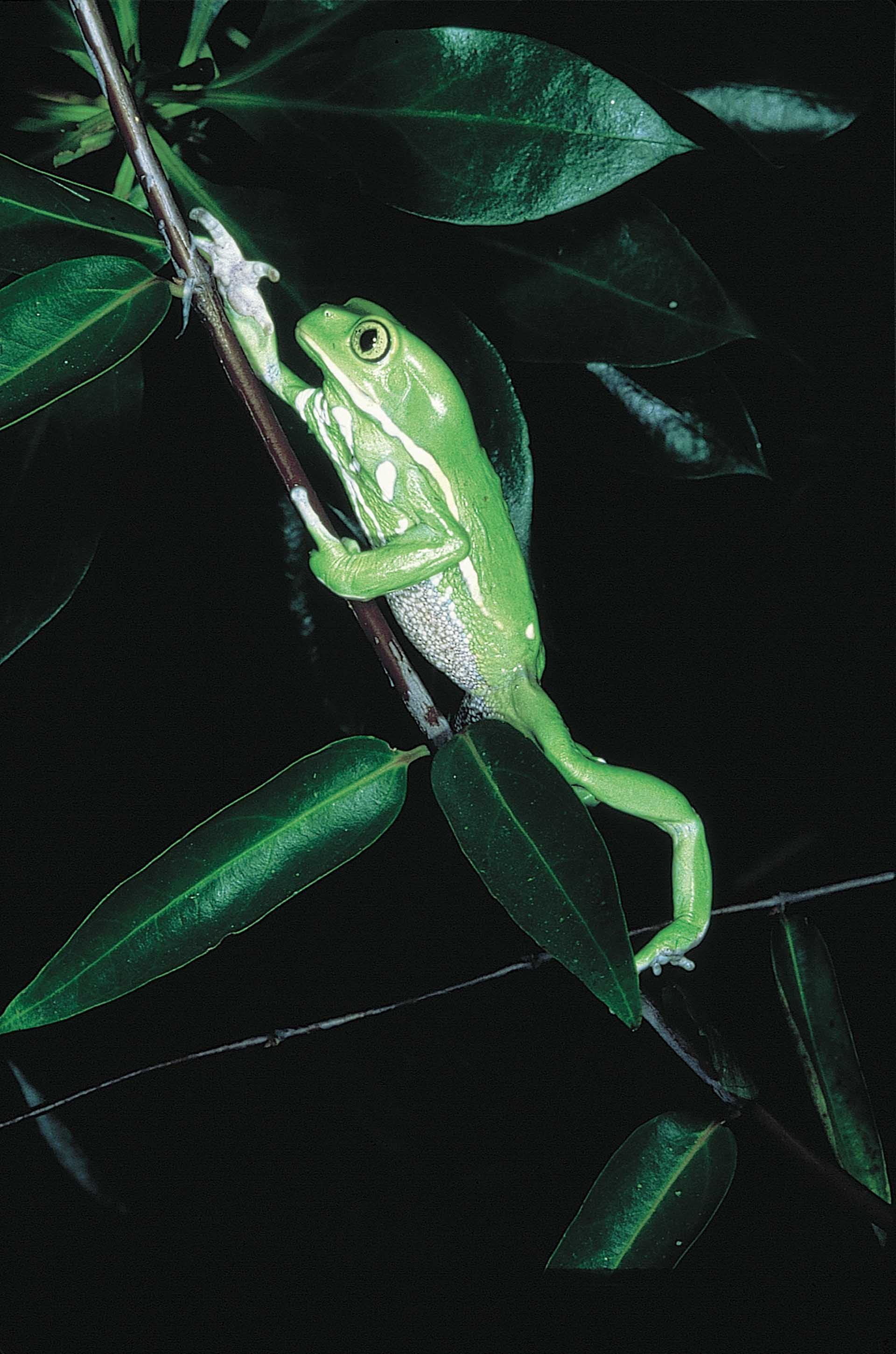
The Waxy Monkey Tree Frog was first scientifically classified by the Belgian-British zoologist George Albert Boulenger in his Catalogue of the Batrachia Salientia s. Ecaudata, published in 1882.
The name of the Genus Phyllomedusa derives from a composition of two Greek words, namely “phyllo” meaning "leaf" and “medousa” meaning guardian, so Guardian of the Leaf. Whereas the species epithet "sauvagii" was given in honor of the French Herpetologist and Ichthyologist, Dr. Henri Émile Sauvage.
Waxy Monkey Tree Frogs are amphibians, a word that derives from the Ancient Greek word "amphibios", meaning "to live a double life”, one as a tadpole in water, one as a frog on land.
Characteristics
Waxy Monkey Tree Frogs belong to the family Hylidae and the subfamily Phyllomedusinae.
Waxy Monkey Tree Frogs are appealing but rather plump, arboreal frogs. These frogs really deserve their common name as being Monkey Tree Frogs. Rather than jumping, like other frogs do, they prefer to use their long, skinny legs to slowly walk in the trees in a monkey-like fashion. They're also one of the only frogs with opposable thumbs, allowing them to use their monkey-like "hands" to get a firm grip on the thin branches, while walking through the vegetation that they live on.
The base color of the Waxy Monkey Tree Frog consists of a waxy bright green skin, and a distinctive creamy white stripe on the lower jaw, which appears to extend ventrally down the length of the body, as well as several irregular white stripes and blotches on their bellies. Their big golden eyes have a vertically oriented, elliptical pupil, typical for members of the Phyllomedusinae subfamily.
The waxy in the frog's name is more than just a description of the waxy-looking green skin. To prevent evaporation during dry periods, the Waxy Monkey Tree Frog covers its skin with a waxy lipid coating using his front and hind feet. These pharmacologically active lipid secretions prevent evaporative water loss, bacterial and fungal infections, and allow the frogs to briefly sunbathe without the risk of desiccation.
While mating, Waxy Monkey Tree Frogs perform an intimate embrace, called the amplexus. During the breeding season, males develop brown nuptial (mating) pads with a roughened surface on the first digit of their forelegs. These pads not only serve to improve the male's grip on the female during amplexus, but glands below the surface of the nuptial pads also secrete pheromones (amplexins) that may influence the courtship duration. The males perform a mating call (crawk-crawk-crawk) to attract the females.
Adult frogs range from 3 to 4" or 7 to 10 cm in total length, males are typically smaller and slenderer than females. The females also have a rounder snout, while the adult males can be recognised by the loose skin on their throat, indicating their “vocal sac”.
If well fed & maintained, they can reach adult size and sexual maturity in 12-18 months and can live up to 10+ years.
Distribution
Waxy Monkey Tree Frogs are native to the South American rainforests, humid montane forests and dry forests in the Chacoan region of eastern Bolivia, northern Paraguay, Mato Grosso do Sul of central Brazil, and Northern Argentina. They primarily prefer moist and semi-moist forest habitats but can also cope with drier environments. They can also be found at high elevations of up to 1500m above sea level.
In the Wild
Waxy Monkey Tree Frogs are arboreal and inhabit the riparian zones of temporary and permanent ponds, streams in rainforests, humid montane forests, and are even adapted to the living in the dry Chaco Forests. They also prefer an open, sunlit canopy where they can briefly sunbathe rather than a thick sun-blocking canopy, and avoid darker forests.
Waxy Monkey Tree Frogs are both crepuscular and nocturnal, they sleep, hiding in the shrubs and trees during daytime and start feeding at night, on insects. Usually 2 hours after sunset, the males start croaking.
Waxy Monkey Tree Frogs have various mechanisms to make sure they stay well hydrated. Their lipid glands produce pharmacologically active secretions which they wipe all over their bodies to increase the resistance against evaporative water loss. This waterproofing mechanism helps them to maintain their moisture level during daytime, when temperatures increase due to solar rays hitting their hiding spot, but also while the frogs are basking. They also change their color to a lighter, pale green to increase cutaneous reflectance and decrease heat absorption. Another amazing tactic the frogs use to stay well-hydrated during the dry season, is that they can excrete uric acid, similar to lizards, rather than urinating which would reduce their body's water level.
The breeding season of Waxy Monkey Tree Frogs usually occurs during the rainy season, in the months with the most rainfall, mostly between October up to May. At nighttime, mostly after heavy rainfall, the males will perform a mating call (crawk-crawk-crawk) to attract the females. After a breeding pair has formed, the pair will go to a waterbody surrounded by vegetation. The female frog will deposit between to 200 up to 800 eggs on leaves overhanging the water. Once the eggs are deposited on the midrib of the leaf, the female will start wrapping the leaf around the eggs to guard them against predators and avoid desiccation. Depending on the clutch size, they may use up to 3 leaves to sandwich the eggs.
The temperatures in the Waxy Monkey Tree Frog's habitat vary between the regions but also depending on the season.
Average temperatures in the dry season are about 60-70°F or 16-21°C with a 50% low humidity, while the rainy season reaches temperatures of 77°F or 25°C up to 82°F or 28°C with humidity sometimes reaching +80%.

In the Terrarium
Waxy Monkey Tree Frogs are both crepuscular and nocturnal but once acclimated, frogs will become active whenever their caretaker releases feeder insects in the terrarium.
Because Waxy Monkey Tree Frogs are arboreal and prefer to live very near to a water body, a vertically oriented, well-ventilated paludarium suits their lifestyle best. A paludarium is a semi-aquatic terrarium habitat that replicates a rainforest, swamp or stream and can harbour aquatic as well as terrestrial animal and plant species. The bottom part has an extra high front bottom glass, providing a higher water level and an increased water volume compared to common terrariums. This enables you to incorporate a substantial water part or aquarium section which allows you to keep aquatic animals and plants adjacent to the land or terrarium section. A part of the aquatic section can consist of a false bottom to support the land section, accommodate and hide the aquatic appliances like filters, pumps and water heaters and can double as a biological filtration media.
Waxy Monkey Tree Frogs have a docile nature and can be kept individually, but are best kept in small groups of 2 - 8 animals. The interaction between the animals in these small groups increases the viewing pleasure but also stimulates their mating behavior.

Terrarium
Exo Terra® Natural Terrariums are designed by European herpetologists and offer several housing options for Waxy Tree Frogs. These glass terrariums feature front opening doors, allowing easy access for maintenance and feeding and a unique double ventilation system with full screen stainless steel top.
The Exo Terra® Natural Terrarium X-Tall (Paludarium) range allows you to create a semi-aquatic terrarium habitat that replicates a rainforest, swamp or stream and can harbour aquatic as well as terrestrial animal and plant species. The bottom part has an extra high front bottom glass, providing a higher water level and an increased water volume compared to common terrariums. A part of the aquatic section can consist of a false bottom to support the land section, accommodate and hide the aquatic appliances like filters, pumps and water heaters and can double as a biological filtration media.
The Exo Terra® Tree Frog Terrarium even comes with a built-in drain and tap valve which allows you to easily drain out excess spray water. This drain will come in handy when simulating the rainy season to induce mating behaviour in your frogs. The single front opening door allows maximum viewing pleasure and provides easy access for maintenance and feeding. A push-button lock keeps the terrarium secure and can even be outfitted with an optional lock to prevent unwanted opening. The hinged cover can be locked and unlocked with a single button and can be fully opened. A clear glass panel in the front ensures maximum visible light penetration and a stainless-steel ventilation strip in the back guarantees optimal ventilation. The patented dual ventilation system keeps the single front glass door free of condensation, even in humid conditions. It creates a natural upward flow of air to ensure optimal and healthy conditions. Excess heat is dissipated through the top mesh and prevents heat from accumulating, creating temperature gradients in the terrarium. The screen mesh allows UV and infrared penetration when these bulbs are required. Four self-closing inlets for wire/tubing in the back facilitate the installation of powered accessories like waterfall pumps, filters, the Exo Terra's Monsoon, etc. The inside front of the lid has a Monsoon Nozzle mounting point on each side of the terrarium. The bottom part of the terrarium is waterproof once the tubing, elbow-connector and tap valve are connected to the drain. The drain allows hassle free water changes and excess water removal.
The Exo Terra® Frog Terrariums can be set up as a bioactive habitat for dart frogs, smaller tree & reed frogs, newts and salamanders, small geckoes & lizards, garter & grass snakes, etc.
Because of the Waxy Monkey Tree Frog’s arboreal lifestyle and preference of living in the vicinity of water, the vertically oriented space and possibility to create a paludarium make the Tall and X-Tall Natural Terrariums the ideal enclosure for small groups of Waxy Tree Frogs:
The set-up can be a simple “rain chamber-type” terrarium with a 2-6 inches (5-15cm) water part and some branches or a more natural bio-active type set-up with a separate land and water part mimicking a lakeshore or riverbank, by using the Bio Drain system. In both set-ups, you will need to provide ample climbing space by strategically placing branches, cork pieces and vines in the terrarium. By arranging these perches diagonally, the frogs will be able to thermoregulate, choose the amount of UVB they want to absorb, etc. With a combination of sturdy artificial and live plants, you can provide the much-needed foliage which will allow the frogs to rest and hide in shaded areas of the Terrarium.
DISCLAIMER In regards to the pet species and number of specimens to be kept in a terrarium, always comply with the species specific Rules and Regulations in your Country of residence.
DISCLAIMER The terrarium should be placed in a room receiving only indirect light from windows. Do not place the Terrarium near a window where it can receive direct sunlight, as this could cause the terrarium to overheat and stress or kill your Waxy Monkey Tree Frogs.
Lighting
Although Waxy Monkey Tree Frogs are mainly crepuscular to nocturnal, they will sometimes be active during daytime and even bask occasionally. A 12-hour day/night cycle will benefit your frogs and stimulate live plant growth. The Exo Terra® TerraSky Planted Terrarium Light is ideal for planted setups, paludariums and bioactive terrariums. The high intensity and enhanced penetration ensure that the light reaches all layers of the terrarium, resulting in sustained lush plant growth. Orchids, Bromeliads, Tillandsias (air plants), carnivorous plants, mosses and lichen all thrive under the TerraSky Planted Terrarium Light’s strong Photosynthetic Active Radiation (PAR). The 120-degree light dispersion provides a nice even illumination and covers the complete area to avoid dark spots.
Providing UV-lighting is not absolutely necessary, but the correct amounts of UVB will help your frogs to metabolize calcium and prevent metabolic bone disease. The combination of the correct UVB wavelength and heat enables the animals to produce their own vitamin D3 for proper calcium absorption and prevents metabolic diseases (e.g., MBD). We highly recommend the use of our Reptile UVB100. The low levels of UVB-rays produced by these bulbs are very beneficial for the animal's overall health, while the UVA rays stimulate appetite, activity and reproductive behavior.
Heating
Monitoring
During the day, an average relative humidity of 50-60% and terrarium temperature of 75-80°F or 24-27°C should be maintained. At night, humidity should rise up to about 70-75% while the terrarium temperature can drop to 65-70°F or 18-21°C. Use the Exo Terra® Digital or Analog Thermometers and Hygrometers to help you monitor the terrarium conditions and adjust the temperature and relative humidity to meet the needs of the animals.
For more security and peace of mind, the Exo Terra® Thermostats or Thermostat & Hygrostat will help to prevent overheating and undercooling during hot summer days or cold winter nights. Apart from the temperature, the Exo Terra® Thermostat & Hygrostat will also keep the humidity at the desired level, if used in combination with an Exo Terra® Humidifier or Fogger. With the Exo Terra® Thermostats or Thermostat & Hygrostat, you can create a well-controlled heating/humidifying system that allows you to maintain the required temperature and/or humidity conditions similar to those found in your animal's environment.
Substrates
Waxy Monkey Tree Frogs thrive well in a paludarium setup. The Paludarium’s living space consists of 3 distinct zones:
Terrestrial Zone The terrestrial zone is a land area with plants, trees, bushes and rocks that never submerge. In tropical climates, a variety of invertebrates, reptiles and amphibians occur here.
Riparian Zone The riparian zone or riverbank is the interface between land and water. It is inhabited by semi-aquatic reptiles and amphibians.
Aquatic Zone The aquatic zone can be a stream, pond or even lake – home to turtles, aquatic amphibians, fishes and freshwater shrimps.
To create the Terrestrial and Riparian Zone, you can use Bio Drain Substrate with a Bio Drain Mesh, topped with Exo Terra® Sub Stratum and/or Plantation Soil, covered with leaf litter and/or moss (Exo Terra® Equatorial Forest Floor or Forest Moss). The non-toxic Bio Drain mesh will keep the underlying Bio Drain Draining Substrate separated from the decorative top-layer substrate. It will prevent substrate particles from contaminating the water while still allowing proper water drainage. In combination with the Bio Drain Substrate, you can create water parts and a biological filtration system in the terrarium. The clean terrarium water can then be circulated in Waterfalls, Cascades or Dripping Plants. In the Terrestrial Zone, you can built your decorative layer with plants, branches, lianas, rocks, hides, etc. The actual substrate layer that will be used for planting can consist of mixture of Exo Terra® Sub Stratum with Exo Terra® Plantation Soil. The Riparian Zone remains somewhat open, with some smaller pebbles, or flat wood or stone pieces that allow easy access to the Aquatic Zone. For the Aquatic Zone, Turtle Pebbles are a great choice as their dimensions are big enough to avoid being swallowed by the frogs, but offer a stable substrate and are easy to clean.
The Exo Terra® Sub Stratum is a natural volcanic soil with live beneficial bacteria. The porous surface and low-density structure allow for excellent drainage and aeration, but it also promotes a flourishing population of beneficial, nitrifying bacteria, creating a self-sustaining, living terrarium ecosystem. The active beneficial bacteria of the soil will decompose biological waste, keeping the terrarium clean and healthy. By mixing the Sub Stratum with other organic substrates, you enrich any substrate with the required minerals like calcium, nitrogen, potassium and phosphorus. It also aids in the water retention capacity and provide adequate air supply to the roots.
The Exo Terra® Equatorial Forest Floor is a multi-layer substrate that allows you to recreate the forest floor as found in natural equatorial forests. The Equatorial Forest Floor provides a base layer and a top layer. The base layer consists of a rich organic matter from ground coconut husk fiber. It is a 100% natural, ecological and biodegradable substrate with great hygroscopic properties. The top layer consists of sun dried decorative Ardisia leaves from a sustainable resource. The top layer covers the actual substrate underneath to facilitate its moisture retention and prevent the soil from drying out.
The Exo Terra® Forest Moss is real compressed moss grown in tropical Asia and does not contain any dyes or chemicals. This ecological substrate is extremely absorbent and ideal for increasing humidity in the terrarium. It is totally safe for use with frogs, salamanders and burrowing or digging animals.
The Exo Terra® Plantation Soil is a 100% natural, biodegradable terrarium substrate made from sustainable, ground coconut husk fiber grown on plantations in tropical Asia. The unique hygroscopic properties of this ecological substrate regulate the terrarium’s humidity in a natural way and is totally safe for frogs, salamanders and other burrowing or digging animals. The unique coir pith used for the Exo Terra® Plantation Soil consists of a mixture of short fibers and coco-peat grain sizes ranging from coarse granules to fine clumps resulting in improved soil drainage and aeration. The improved aeration of the substrate promotes the cultivation of healthy waste-reducing organisms keeping your terrarium fresh and clean.
The substrate should be kept slightly moist, but not soaking wet, at all times. Make sure to offer different gradients of moisture inside the terrarium. Some parts can be kept rather moist while other parts should be kept somewhat drier. Also, try to vary the moisture depending on the season, spray more frequently during the warmer parts of the year.
The Exo Terra® substrates will help maintain the substrate moisture at an optimal level. Providing a top layer of Exo Terra® Equatorial Forest Floor or Forest Moss will also facilitate the substrate's moisture retention and prevent it from drying out. The ardisia leaves or forest moss also provides hiding spots for the reptiles and amphibians foraging the forest floor and at the same time, facilitate the natural ecosystem where beneficial organisms will break down waste products and thus reduce odors.
The secret to growing healthy plants begins with the soil. Naturally, healthy soil contains living microorganisms — from bacteria to fungi, protozoa and arthropods. Together, they form a choreographed exchange from the recycling of nutrients to the decomposition of organic materials.
Plants
The land part of the terrarium can partially be decorated with live and Exo Terra® artificial or smart plants. Waxy Monkey Tree Frogs will use the leaves of, for instance, Scindapsus plants, to adhere their eggs to when breeding. Thy will fold the leaves, so they surround the eggs in order to protect them from predators as well as from drying out. Live plants and moss will also contribute to the filtration capacities of your terrarium. This type of setup allows you to create an effective filtration system, mirroring the process of natural biological filtration. A fully functioning aqua-terrarium or paludarium will provide a constant source of clean water, which is imperative to keep semi-aquatic species. It is basically a small, closed ecosystem.
Ideal for Tree Frogs are all the vining plants like Philodendron, Epipremnum (pothos) and Scindapsus, etc. but also other sturdy large-leaved plants like Aglaonema, Dieffenbachia, Monstera are well accepted as sleeping and hiding places.
Many hobbyists choose to introduce live plants in pots that are buried in the substrate and concealed with decor items, like cork bark or rocks. The Exo Terra® Snake Bowl can be used as a decorative planting pot. Its extra deep design makes it suitable for small to medium live terrarium plants.
DISCLAIMER Make sure the plants have no pests before introduction and rinse leaves thoroughly to remove any pesticide residues.
Exo Terra® offers a wide range of artificial plant with the same advantages as live plants; they're decorative, they provide shade, and they create hiding spots and visual barriers to let your reptiles and amphibians experience an increased feeling of safety and reduced stress. Exo Terra®'s artificial plants are exact copies of their natural counterparts to blend in well with live plants but are much easier to maintain. A combination of live plants and Exo Terra®'s artificial plants allows you to fully plant a terrarium, even in the hottest or driest parts.
Exo Terra®'s Bromeliad's, Scindapsus, Philodendron and hanging Plants are easy to clean & maintain, while the weighted base of the Bromeliad's, Scindapsus, Philodendron allows you to easily position the plant after maintenance.
Hide Outs
Exo Terra®'s Bromelia's, Scindapsus, Philodendron and hanging Plants will help to provide visual barriers.
An additional decorative hide like the Exo Terra® Canopy Cave will add even more privacy to your frog's habitat.
Decor
Landscaping a terrarium will not only encourage the frog's activity and exploratory behavior, but also provide extra cover which increases the frog's sense of security and reduces its stress levels.
The land part of the terrarium can partially be decorated with live and Exo Terra® artificial or smart plants. Various branches can be used to create climbing space. Adding Exo Terra® Vines is a great way to create more climbing space. These waterproof vines are bendable, twistable life-like vines with a natural feel and look and can be twisted together with vines of different sizes to create a 3-D habitat. The Exo Terra® Jungle Vines and Moss Vines can be combined to enhance the natural Rainforest-look of your Terrarium.
Waterfalls and Cascades add aesthetic appeal and will help oxygenate and biologically filter the water.
The Exo Terra® Frog Pond and Coconut Water Dish have a realistic design and will enhance the naturalistic flair of the habitat's design.
Exo Terra® offers a wide variety of innovative decor items like Skulls, Waterfalls, Ground Cover Plants, etc. - all of which add next to personalizing accents, some more environment enrichment and features.
Nutrition
Waxy Monkey Tree Frogs are insectivorous and should be fed with a variety of live, canned or vacuum-packed insects of appropriate size. As a general rule the maximum size of the insects should be the width of the frog’s head. Offer as much variety of insects, in your Waxy Monkey Tree Frog's diet, as possible, to make sure that your frog receives all possible essential nutrients. All live insects should be gut-loaded with nutritious foods, like apple slices, sweet potato, oranges, cereals, bee pollen, etc., 24-48 hours prior to being fed to your frog.
Because commercially raised insects tend to be deficient in calcium and several vitamins, they must be supplemented by coating with a reptile vitamin and mineral supplement such as Exo Terra® Multi Vitamin blended with an equal part Calcium. Always dust your feeder insects with a 1:1 mix of Exo Terra® Multi Vitamin and Calcium + D3 powder supplement using the “shake & bake” method of coating insects.
Exo Terra® Canned or Vacuum-Packed insects can be fed right out of the can/pouch as these insects are well fed and vitamin-calcium coated.
Exo Terra® offers 11 varieties of Canned and Vacuum-Packed Foods which allow you to bring more variety in your Waxy Monkey Tree Frog's diet. Waxy Monkey Tree Frogs will readily accept canned or vacuum-packed foods if you use tweezers to make the insects appear to be alive. Just hold the insect in front of the frog and slowly wiggle it so it appears to be moving. Loosen the tweezers as soon as the frog grabs the insect. The Exo Terra® Canned and Vacuum-Packed Specialty Reptile Foods are a convenient way to feed insect eating reptiles, turtles, amphibians, fish and birds. These insects (and snails) have been cooked in the can to maintain nutritional value, flavor and aroma. The retorting process also softens the exoskeleton of the insects for easier digestion and breaks the bonds between the collagen protein to make it absorbable by reptiles. Collagen is an important fiber that aids in building bone, cartilage, skin and claw structures. Canned and Vacuum-Packed insects have the same nutritional value as live insects but are easier to digest. Visit our Canned and Vacuum-Packed Foods webpage for more information.
Feed juveniles daily and adults every second or third day.
Water
The presence of clean and fresh water is important for the proper care and maintenance of captive reptiles and amphibians.
Because Waxy Monkey Tree Frogs may bathe and soak up water via their skin, but also because they lay their eggs in water, you should always offer fresh and clean water. Always treat tap water with Aquatize to remove harmful heavy metals, chlorine and chloramines, necessary to provide safe healthy water for your captive reptiles and amphibians. In a bio-active set-up, you can use Exo Terra® Turtle Clean (PT1998) to add beneficial organisms to the terrarium water and speed up the biological filtration capabilities. Liquid Electrolyte and Calcium can be added to the water to support healthy bone and muscle growth in your frogs and especially tadpoles.
An ideal Water Dish for use with amphibians is the Exo Terra® Frog Pond. The Exo Terra® Frog Pond has a very natural and realistic pebble-rock finish that integrates in any type of terrarium. The Frog Pond’s unique shape allows you to install the pond semi-recessed in the substrate to mimic a riparian zone. This design offers easy access for reptiles and amphibians to hydrate while the shallow water body and integrated steps prevent the animals from drowning.
The average humidity should be kept between 50-60% with peaks of 70-75% in the morning and evening (when the terrarium is sprayed/misted), similar to what these frogs experience in nature. The Exo Terra® Monsoon is a handy device to guarantee that your frog terrarium is sprayed at a set time every day. The Exo Terra® Humidifier can help maintain the correct relative humidity in the terrarium, especially if used in combination with the Exo Terra® Thermostat & Hygrostat. Make sure the Terrarium is well ventilated and the humidity is not kept permanently high as Waxy Monkey Tree Frogs are prone to bacterial skin infections.
Maintenance
Land area;
Spot-clean your Waxy Monkey Tree Frog’s enclosure once a week or more if necessary; remove fresh or dried faeces, dead insects, etc. For a more thorough cleaning, remove all the decor pieces and clean these with warm water. Always keep a keen eye on the substrate; as long as the substrate is not degrading or does not have a foul odor, the spot cleaning process is sufficient. Once the substrate starts to degrade or spreads a foul odor, it needs to be replaced completely.
Water part;
When using a water circulation pump or filter, it is best to clean the water inlet and filter media every 2-3 weeks to ensure optimal performance. Water changes should be performed on a bi-weekly basis; remove about ¼ to ⅓ of the water and replace it with fresh water of the appropriate temperature. Partial water changes can help to remove toxic substances or improve the overall water quality. Unless really necessary, make sure to never perform entire water changes, as this will also remove beneficial bacteria and organisms. Always treat tap water with Aquatize to remove harmful heavy metals, chlorine and chloramines when performing water changes. Use Turtle Clean (PT 1998) to assure that the beneficial organisms in the terrarium water remain at an ideal level to keep the biological filtration system performing well.
Breeding
In the wild, Waxy Monkey Tree Frogs breed after heavy summer rains. In order to simulate these conditions, you first have to reduce the light cycle from 12 to 8 hours daily and keep the temperature at 65°F or 18°C for about 5-6 weeks. Keep the humidity at the lower end (50%) by spraying less, simulating a drier, cooler winter period. Allow the water temperature in the Paludarium section to drop to 65-70°F or 18-21°C. Feed the frogs only sparingly during this brumation period. After this 5-6 weeks brumation period, the light cycle should be increased to 12-14 hours daily and the temperatures restored to the normal settings. At this point, also the water temperature in the Paludarium section should be restored to its normal 78°F or 25°C. Exo Terra® Turtle Heaters are convenient to use as they are preset to 78-79°F or 25-26°C.
The spray intervals should be increased to simulate the rainy season, and average humidity can be kept at 70-80%. The frogs will become more active and start feeding a bit more than average. After a week proceed with spraying/misting the terrarium extensively to simulate the summer rains. In reaction to the simulated summer rains, the males will start their mating call to attract females and grasp them behind the front arms to hold them in an amplexus.
A male surplus of 2 males for 1 female will definitely encourage healthy competition between the male specimens in the terrarium, resulting in successful matings and best breeding results.
After a breeding pair has formed, the pair will go to a waterbody surrounded by vegetation. The female frog will deposit between to 200 up to 800 eggs on leaves, overhanging the water. Once the eggs are deposited on the midrib of the leaf, the female will start wrapping the leaf around the eggs to guard them against predators and avoid desiccation. Depending on the clutch size, they may use up to 3 leaves to envelop the eggs. The female may also deposit gelatinous egg capsules together with the actual eggs to prevent desiccation. The tadpoles will hatch after 5-7 days and simply drop into the water underneath.
After the pairings have been completed, and the eggs have been laid and hatched, the average humidity can be reduced to the normal 50-60% again.
Alternatively, to hatching the eggs in the "parents" Terrarium, you can also cut off the leaves that have eggs adhered to them, and move these to a specific hatching terrarium. You can stick the leaves to the glass sides of the terrarium using self-adhesive tape. Make sure that when the eggs hatch, the tadpoles will drop into the water below.
Once the tadpoles start swimming, they will also start feeding on frog & tadpole food, dead insects, chopped earthworms, fish food flakes, algae, plants, etc. It takes the tadpoles approximately 4-6 weeks to fully metamorphose into air-breathing amphibians. In this stage it is critical to provide the metamorphosing tadpoles with sufficient plants, branches or a smooth levelled riverbank so they have easy access to the land area.
The newly-emerged frogs will absorb the remnants of their tail for the next few days and will then start feeding on food items of appropriate size like fruit flies, freshly hatched crickets, bloodworm, hatchling waxworms, flour moth larvae, etc. As with adults, always dust the feeder insects with a 1:1 mix of Exo Terra Multivitamin and Calcium +D3 powder supplement. The freshly metamorphosed frogs can be raised under similar conditions as used for the adult frogs, just make sure the water isn’t too deep, and there are slopes available so the frogs can easily climb onto land areas.
Handling
Although Waxy Monkey Tree Frogs are very tranquil and get accustomed to handling by their caretaker fairly well, for the well-being of the frogs however, we do not recommend excessive handling. Like most amphibians, Waxy Monkey Tree Frogs have a very sensitive skin, and are especially sensitive to chemicals like soap, lotion, etc. so make sure to always thoroughly wash and rinse your hands with warm water before and after handling any amphibian.
Every amphibian’s skin contains very mildly toxic substances that can irritate eyes or open wounds so always thoroughly wash and rinse your hands with warm water before and after handling any amphibian. If you accidentally touch your eyes while handling an amphibian, you might experience a somewhat burning sensation. Should this happen, make sure to rinse your eyes immediately and thoroughly with water, that should relief the burning sensation immediately.
DISCLAIMER Always make sure to thoroughly wash and rinse your hands with warm water before and after handling any reptile, amphibian or invertebrate.

Conclusion
Waxy Monkey Tree Frogs are hardy, long-lived and “easy-to-care-for” amphibians. Their engaging personalities, their waxy green skin, their adorable smile and big golden eyes make them appealing display animals for both the beginning reptile enthusiast as well as for the advanced hobbyist.
Waxy Monkey Tree Frogs have been captive bred in the USA and Europe for more than 25 years.

Did You Know?
Waxy Monkey Tree Frogs are very common in their native countries, that is why they have the IUCN predicate conservation status: LC “Least Concern”. Waxy Monkey Tree Frogs are also abundantly available as captive bred specimen.
The lipid glands of the Waxy Monkey Tree Frogs produce skin secretions which they wipe all over their bodies to increase the resistance against evaporative water loss. This waterproofing mechanism helps them to maintain their moisture level during daytime, when temperatures increase due to solar rays hitting their hiding spot, but also while the frogs are basking.
Waxy Monkey Tree Frogs secrete peptides on their skin that have medical uses such as lowering blood pressure but also fighting viruses and bacteria such as staphylococcus. The unique natural opioid found in their skin is even 100 times stronger than morphine.
The powerful performance-enhancing "frog juice" dermorphin was also illegally used to bump up the speed of racehorses.
Of the 50 kinds of bioactive peptides found in the skin secretions of Phyllomedusa sauvagii, the peptide Dermaseptin-PS4 is used as an anti-cancer treatment.
Frequently Asked Questions
Are Waxy Monkey Tree Frogs the right choice for me?
Waxy Monkey Tree Frogs are great animals; they are hardy, long-lived and “easy-to-care-for” amphibians. Their engaging personalities, their waxy green skin, their adorable smile and big golden eyes make them appealing display animals for both the beginning reptile enthusiast as well as for the advanced hobbyist. Keep in mind that Waxy Monkey Tree Frogs are display animals, and although they tolerate handling quite well, we do not recommend excessive handling.
Can I feed my Waxy Monkey Tree Frogs wild caught insects?
We do not recommend feeding wild caught insects as these can harbour harmful bacteria. They may also have come in contact with gardening chemicals, making them poisonous for your Frogs.
Should I feed a variety of food items to my Waxy Monkey Tree Frogs or can I stick to just 1 type feeder insect?
Bring as much as possible variation in your Waxy Monkey Tree Frog's diet to make sure that your frog receives all possible essential nutrients. With Exo Terra's Canned or Vacuum-Packed insects, it's easy to offer a wide variety to make sure that your frogs receive all the nutrients they need. The Canned and Vacuum-Packed insects have the same nutritional value as live insects but are easier to digest.
Can I keep other amphibians and reptiles together with my Waxy Monkey Tree Frogs?
Waxy Monkey Tree Frogs are best kept in a small group of their own kind. Other species, especially smaller animals, could quickly be seen as food.
Are Waxy Monkey Tree Frogs poisonous?
Waxy Monkey Tree Frog's mild toxicity works as a defense mechanism against predators, but also prevents bacterial and fungal infection. Every amphibian’s skin contains very mildly toxic substances that can irritate eyes or open wounds so always thoroughly wash and rinse your hands with warm water before and after handling any amphibian. If you accidentally touch your eyes while handling an amphibian, you might experience a somewhat burning sensation. Should this happen, make sure to rinse your eyes immediately and thoroughly with water, that should relief the burning sensation immediately.

Other species
Grammostola rosea
The docile temperament of the Chilean Rose Tarantula (Grammostola rosea), combined with its stunning visual appeal, and easy-to-care-for nature, makes it a favorite among those new to tarantula keeping.
Chamaeleo calyptratus
Veiled Chameleons or Yemen Chameleons are native to Yemen and Saudi Arabia. There are also introduced populations in Hawaii (thought to be eradicated but still persisting), California and SE and SW Florida, USA. They primarily prefer montane subtropical to tropical vegetation in the deep valleys (called wadis), in the Hijaz Mountains in Saudi Arabia and Yemen.
Since Yemen is suffering for over a decade of war and is not an easy country to travel to, or to export animals from, it is amazing how this species was established so well in the hobby. One of the first to study this species in nature, as well as establish the captive husbandry guidelines, was the world-renowned herpetologist Petr Necas. He bred tens of thousands of Veiled Chameleons and introduced these to the hobbyists in Europe and the USA. In the meantime, this species has become not only the most readily available chameleon, but also one of the more popular reptile species in general. Due to selective breeding, there are "bloodline" variations of the Veiled Chameleon available that show more yellow/orange or bluer and there's even a partially leucistic color morph available (called translucent in the USA).
Hyla cinerea (Dryophytes cinereus)
American Green Tree Frogs are native to the Southeastern United States roughly from Eastern Virginia to Florida in the East and from Central Texas all the way to the West. There's also records of introduced populations in Puerto Rico and even some invasive American Green Tree Frogs have been noticed in Hawaii.
They can be primarily found around lakes, ponds, swamps, streams and in wetlands. They prefer habitats with floating vegetation, reeds & grasses, and shrubs with branches overgrowing the riparian zone. American Green Tree Frogs easily adapt to various habitats and can be found in urban environments, like garden ponds in private gardens, hotel gardens and industrial complexes.
American Green Tree Frogs are hardy, long-lived and “easy-to-care-for” amphibians. Their engaging personalities, their bright yellow-green back and cream-white lateral stripe running from just under their big golden eyes all the way to their groin, make them appealing display animals for both the beginning reptile enthusiast as well as for the advanced hobbyist.
American Green Tree Frogs are a fairly social species and are best enjoyed when kept in small groups of 4 to 8 animals. The interaction between the animals in these small groups increases the viewing pleasure but also stimulates their mating behavior.
The American Green Tree Frog has been successfully bred in Europe and the USA for decades. American Green Tree Frogs are available as wild-caught specimen as well as captive-bred. We do recommend starting with captive-bred specimen, so you know their age and can rest assured that the youngsters are healthy.
Furcifer pardalis
Panther Chameleons are native to Madagascar, but have also been introduced to Réunion Island somewhere between 1750 and 1836. They were first brought to Réunion by sailors who left them at the landing port of the island during that era, which was in the vicinity of Saint Paul. The Panther Chameleons thrived and over time, they spread to various parts of the Island. There have also been sightings of Furcifer pardalis on Mauritius Island, but these populations are expected to have been introduced quite recently.
They primarily prefer warm and humid lowland coastal forests, rainforest canopies, secondary forests, plantations and hotel or home gardens and planted fences.
Ever since the Panther Chameleon was imported in Europe and the USA, starting around 1980, herpetologists and reptile breeders have worked on enhancing the captive husbandry guidelines continuously. For instance, the use of UVB lighting was a game changer and after a decade or two, the Panther Chameleon became well-established in the hobby.
Due to the hardiness, the gentle character and the striking colors, the Panther Chameleon, rapidly became a popular terrarium animal. The Panther Chameleon is currently available, as captive bred animals, in many geographic color morphs.
There's currently a wide array of captive bred, geographic color forms of the Panther Chameleon available from breeders as well as in stores and on reptile shows. There are also color morphs available that have been selectively bred to increase a certain color or color combination by mixing various natural, geographic color forms. Panther Chameleons have now been captive bred in Europe and the USA for more than 30 years.
Phyllomedusa hypochondrialis (Pithecopus hypochondrialis)
Tiger-Legged Monkey Frogs are native to Colombia, Venezuela, Suriname, Guyana & French Guyana, Brazil, Bolivia and Paraguay. They prefer tropical & subtropical dry and moist forests but can also be found in seasonally flooded grasslands. The type locality of the Tiger-Legged Monkey Frog referenced in the original description is Suriname.
The Tiger-Legged Monkey Frog's common name refers directly to the striped tiger markings on the inside of the frog's thighs. These frogs really deserve their common name as being Monkey Tree Frogs. Rather than jumping like other frogs do, they prefer to use their long, skinny legs to slowly walk in the trees in a monkey-like fashion. They're also one of the only frogs with opposable thumbs, allowing them to use their monkey-like "hands" to get a firm grip on the thin branches, while walking through the vegetation that they live on.
Tiger-Legged Monkey Frogs are stunning, long-lived and “easy-to-care-for” amphibians. Their engaging personalities, their bright green dorsal color, their orange with black tiger striped inner thighs and partially orange with irregular black stripes and blotches on the flanks, make them one of the most stunning display animals for both the beginning reptile enthusiast as well as for the advanced hobbyist.
Tiger-Legged Monkey Frogs live an arboreal lifestyle, sleeping on the back of the leaves in the trees and shrubs that they live in.
Tiger-Legged Monkey Frogs are a fairly social species and are best enjoyed when kept in small groups of 4 to 8 animals. The interaction between the animals in these small groups increases the viewing pleasure but also stimulates their mating behavior.
Tiger-Legged Monkey Frogs have been captive bred in the USA and Europe for decades. The somewhat larger cousin of the Tiger-Legged Monkey Frog (Phyllomedusa hypochondrialis), the Super Tiger Leg Monkey Tree Frog (Phyllomedusa tomopterna) is also being captive bred, but to a much lesser extent.
Ranoidea caerulea (Litoria caerulea)
White’s Tree Frogs are native to Australia, Indonesia and Papua New Guinea. There are also some introduced populations in New Zealand and South Florida, USA. They primarily prefer moist and semi-moist forest habitats but can also cope with drier environments.
They are sometimes referred to as Dumpy Tree Frogs as well because of their somewhat chubby, sleepy appearance.
White's Tree Frogs are hardy, long-lived, docile and “easy-to-care-for” amphibians. Their engaging personalities, bluish-green color and milky white bellies, adorable smile and big golden eyes make them appealing display animals for both the beginning reptile enthusiast as well as for the advanced hobbyist.
White’s Tree Frogs are very tranquil and get accustomed to handling by their caretaker fairly easily. Dumpy Tree Frogs can be kept individually or in small groups of 2 – 8 animals. The interaction between the animals in these small groups increases the viewing pleasure but also stimulates their mating behavior.
White’s Tree Frogs have been captive bred in the USA and Europe for more than 30 years. They are available in various color morphs, green, blue, Snowflake (covered in white spots).
Stay up on all things exo terra.
"*" indicates required fields
